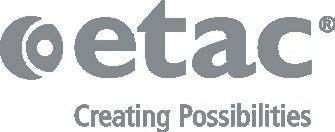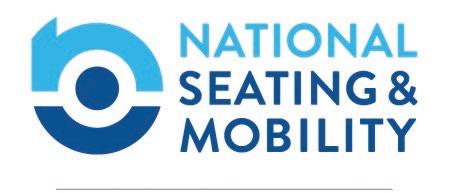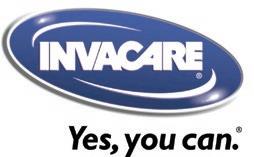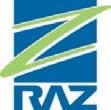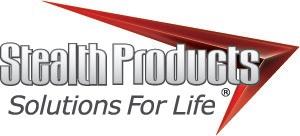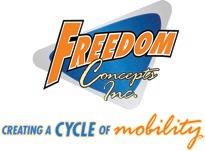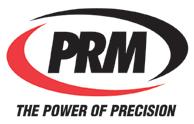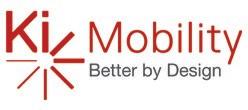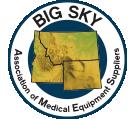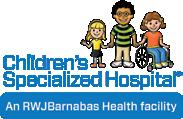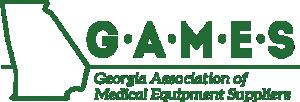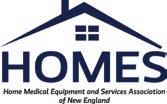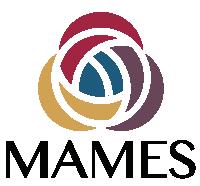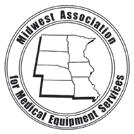AGING AND LIVING IN PLACE: CREATING SAFE, ACCESSIBLE AND HEALTHY ENVIRONMENTS THROUGH THE LIFESPAN




“I love my Alltrack R3 Hybrid Wheel Drive! Its outdoor performance allows me to get were I want to go. The suspension gives me stability and comfort regardless of the terrain. When I’m indoors, it maneuvers like a dream!” says Benjamin Leclair
Highlights:
• Turning radius as low as 21.75”
• Patented Dual Action Suspension:
Fully independent 6-wheel interactive suspension with vertical shock absorption
• Complete line of R-net expandable and non-expandable electronics
• Available with Power Center Mount Elevating & Articulating Foot Platform
• Multiple frame, drive wheel, and caster options
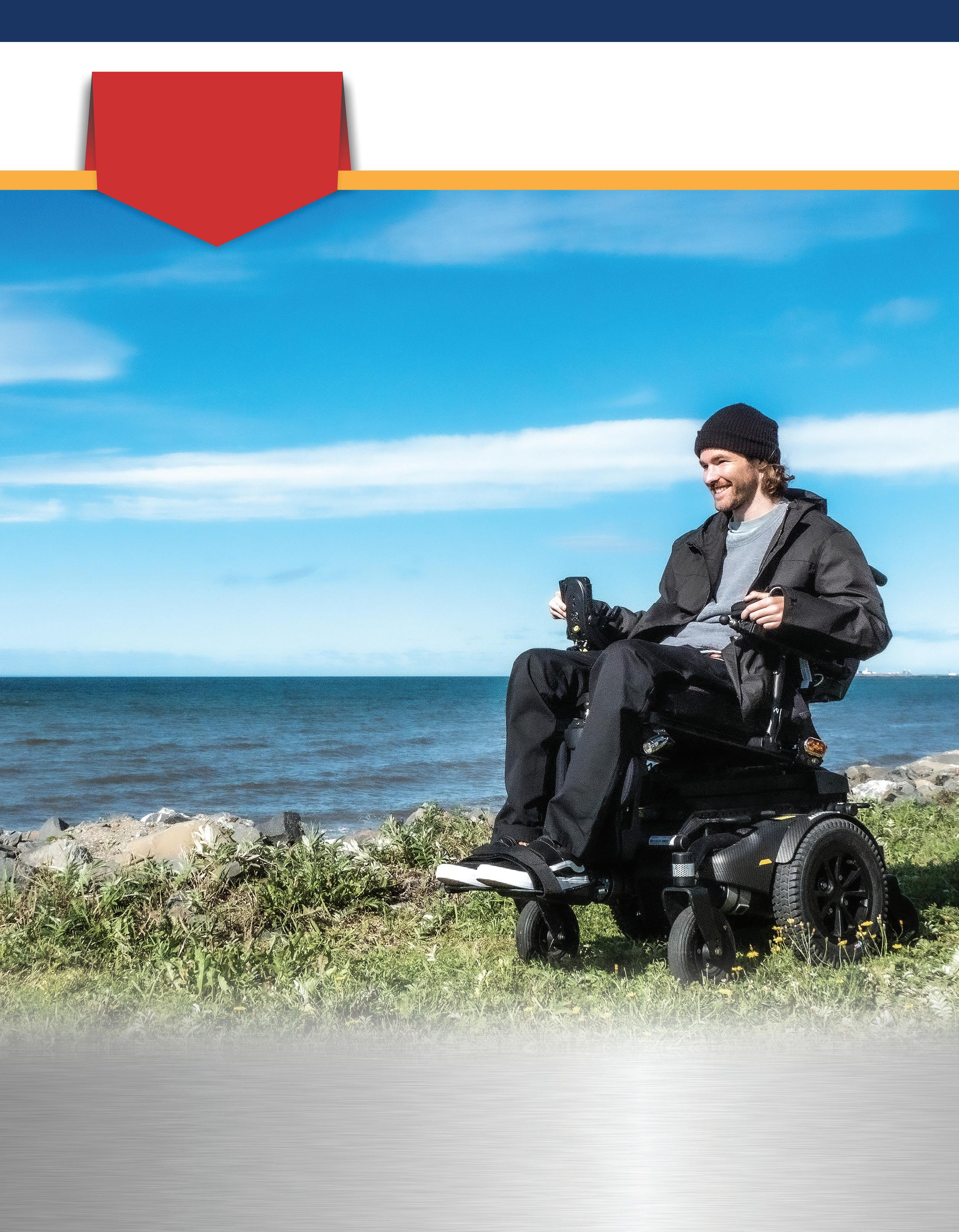
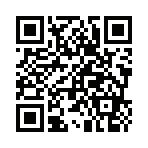





6 8 16
FROM THE NRRTS OFFICE
Looking Back
LIFE ON WHEELS
Chris Collin: Intentionally Positive
NOTES FROM THE FIELD
I Still ‘Wrench’ Wheelchairs
CRT UPDATE
Mid-Summer CRT Update
CLINICIAN TASK FORCE
EDS - The Silent Disability
INDUSTRY LEADER
Recognize the Ability Rather Than the Disability
CLINICAL PERSPECTIVE
CEU ARTICLE

Aging and Living in Place: Creating Safe, Accessible and Healthy Environments Through the Lifespan
RESNA
Announcing the RESNA Track at ISS
CFON FOCUS
CRT in Workers’ Compensation: Insight into a parallel “complex” realm
REHAB CASE STUDY
Seating for the Geriatric Client
REIMBURSEMENT & CLINICAL ISSUES
Tying it All Together
CLINICALLY SPEAKING
See the ‘Special’ in Everyone
WEESIE’S WORLD
Clients and Goals
DIRECTIONS CANADA
Canadian RRTS® Update
PUBLICATION
The opinions expressed in DIRECTIONS are those of the individual author and do not necessarily represent the opinion of the National Registry of Rehabilitation Technology Suppliers, its staff, board members or officers. For editorial opportunities, contact Amy Odom.
DIRECTIONS reserves the right to limit advertising to the space available. DIRECTIONS accepts only advertising that furthers and fosters the mission of NRRTS.
NRRTS OFFICE
5815 82nd Street, Suite 145, Box 317, Lubbock, TX 79424
P 800.976.7787 | www.nrrts.org For all advertising inquiries, contact Bill Noelting at bnoelting@nrrts.org
EDITOR-IN-CHIEF Amy Odom, BS
CLINICAL EDITOR
Michelle Lange, OTR, ABDA,
EDITORIAL ADVISORY BOARD
Andrea Madsen, ATP, CRTS®
Annette Hodges, MA, BS
Katie Roberts, MS, ATP, CRTS®
Michelle Lange, OTR, ABDA, ATP/SMS
Weesie Walker, ATP/SMS
DESIGN
Amanda Sneed - Hartsfield Design
Reace Killebrew - Hartsfield Design
COVER CONCEPT, DESIGN
Weesie Walker, ATP/SMS
PRINTER
Craftsman Printers, Inc.
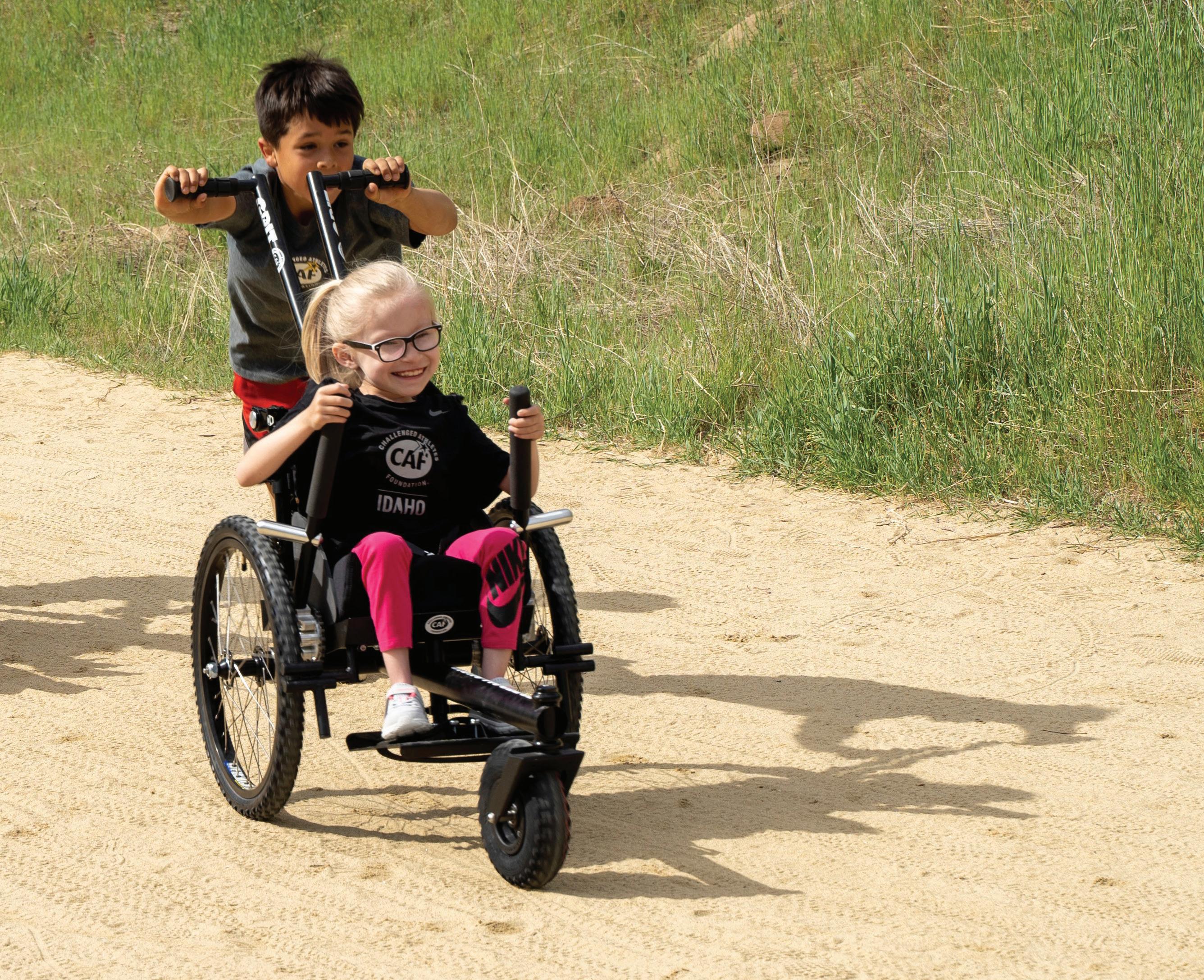

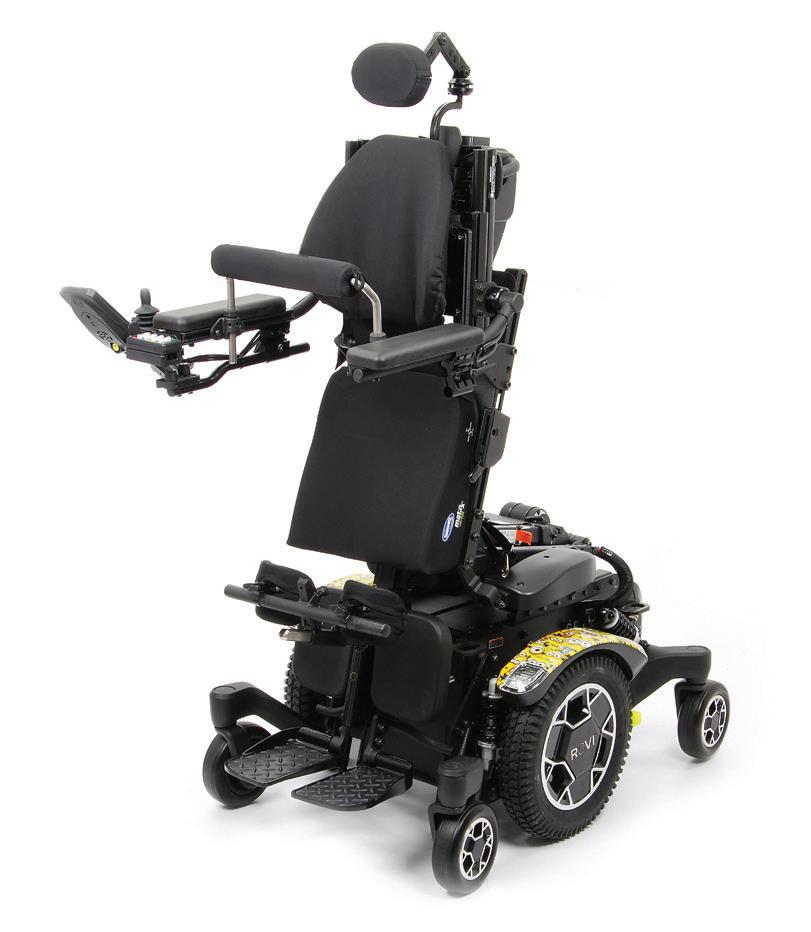
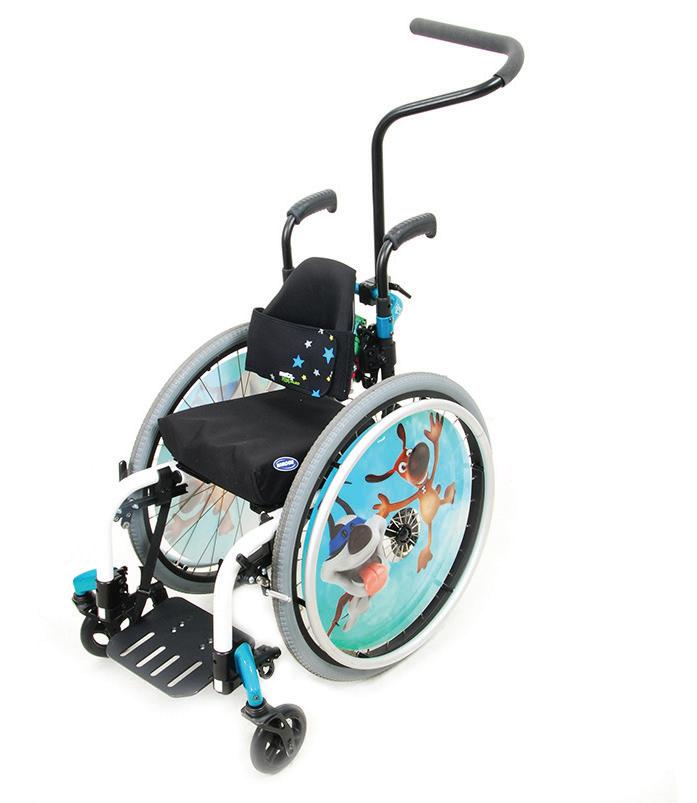
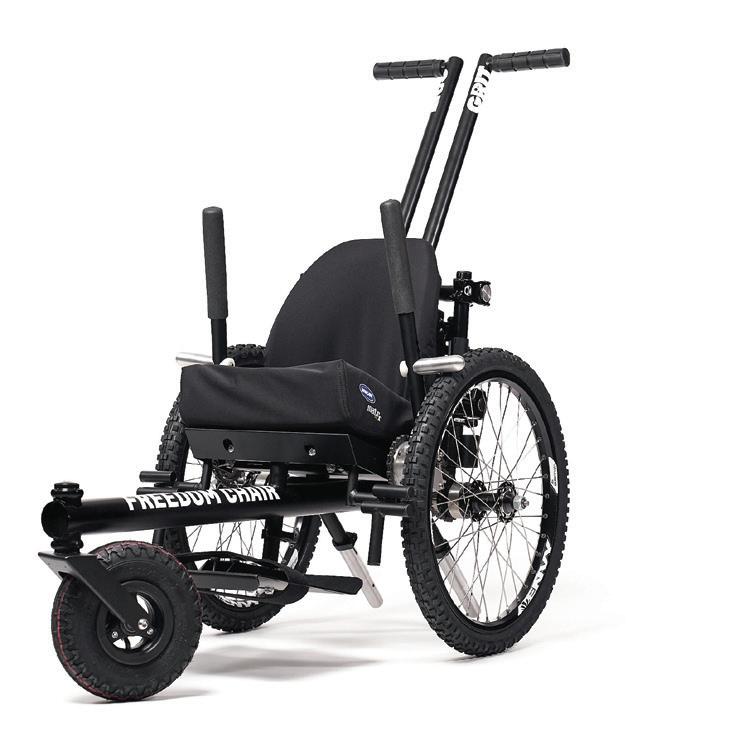

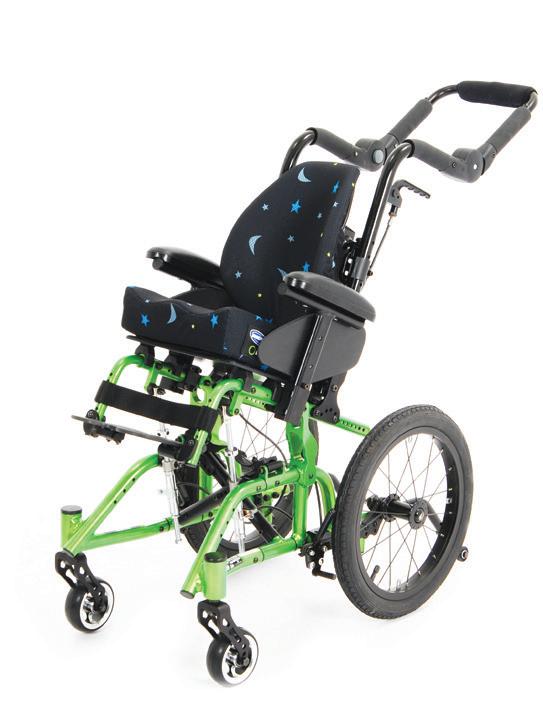
Written by: GERRY DICKERSON, ATP, CRTS®
COVID-19 gets further back in the rearview mirror every day. Some of us still experience issues surrounding COVID-19, while others are pretty much back to “normal.”
By the time you read this, July Fourth will have passed, and we are about five months away from Christmas!
As we approach the 30th anniversary of NRRTS, I thought it would be interesting to publish not just one or two lines from past industry publications but instead complete articles that resonated with us all when we first read them. The most amazing thing is most articles from our history still resonate the same
(REPRINTED FROM NRRTS NEWS, WINTER 2007 (VOL 1)
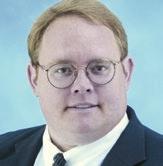
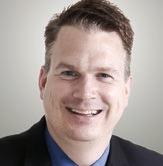
WAYNE GRAU Director of Rehab Industry Affairs
SETH JOHNSON Vice President, Government Affairs
Pride Mobility/Quantum Rehab
way now! In future issues of DIRECTIONS, we will also publish some photographs from the archives. You might recognize your younger self in a future issue.
So, in looking back, it’s fitting that we again read an article entitled “Looking Back.” This article was written by our friends and colleagues, Wayne Grau and Seth Johnson. It appeared in NRRTS News, Winter 2007 (Vol 1).
You may enjoy a good laugh or shed a few tears!!
Hoping you, and the ones you love, remain safe and healthy.

The year 2006 recalled as the first time in the history of the rehab industry providers, consumer groups and manufacturers finally stood in solidarity and said, “I’m mad as hell, and I’m not going to take it anymore.”
Competitive bidding, the Interim Final Rule, the Local Coverage Determination and multiple versions of the PMD fee schedules created the perfect storm that forced all members of our industry to join together and fight.
The beginning of a new year is a good time to reflect and evaluate what happened in the previous year and plan for the upcoming year. We learned a lot this past year, including what worked, what did not work and what is the best approach to working with our legislators.
The industry made some new friends, and we will need to work to strengthen these new relationships. With the recent elections, there are many new representatives and senators we’ll need to work with as well. Just as we built our companies one relationship at a time, we must take the same approach to building our relationships with our legislators.
Legislative support is needed - When the LCD was first introduced, the stand and pivot provision to qualify for a Group 3 power chair was a major concern for complex rehab providers. While a patient’s ability to stand and pivot to transfer should have some bearing on the type of power chair a patient qualifies for, this should not have been the only qualifying issue. The stand and pivot provision along with automatic down coding to the least costly alternative would force some of our patients into Group 1 power chairs, which were totally inappropriate for rehab patients. After a number of meetings with CMS, it was apparent that CMS would not listen to our concerns about patient safety and the appropriateness of the Group 1 power chairs for all rehab patients. The industry started to call on legislators to educate them about the inappropriateness of the LCD. Meetings, phone calls and teleconferences were conducted to show how the proposed LCD would harm patients (voters). The effort paid off, and with political pressure from numerous members of Congress, CMS revised the LCD in favor of a more appropriate coverage policy.
1. Congressional Education – Simply calling your legislators does not work as effectively as meeting with them directly. The majority of congressmen and their staff have no idea how involved rehab equipment is and how it creates independence for the people using it. We must educate our legislators and their staff members. A number of congressional visits were
scheduled at providers’ locations. This is the best opportunity to educate our representatives and senators, so they can see firsthand what we do and how our companies help their constituents. The legislators not only heard from the providers but also from consumers of the equipment who provided a firsthand account of what the equipment did for them and how it allowed them to continue their active independent lifestyles. It is very important these activities continue in 2007.
2. Consumer Advocates - A special thanks goes out to the ITEM Coalition, American Association of People with Disabilities and United Cerebral Palsy Association along with hundreds of other consumer groups who took action and fought to protect their members. The rehab industry worked very closely with consumer groups both on the national and local levels to educate them on how the LCD would affect their members. The consumer groups mobilized and complemented the industry’s efforts to educate legislators about the devastating consequences of the LCD. Teaming up with the consumer groups raised the issue to a new level and greatly assisted in getting Congress to weigh in, for support of the industry’s positions.
3. Industry Membership - Our legislators understand the power of numbers. The individual who tries to fight city hall will lose, but the group who takes on Congress has a much better chance of success. Registration in NRRTS and membership in AAHomecare, your state association and NCART is something all rehab providers should strongly consider. It is amazing how much a dedicated group of motivated, caring individuals can do to impact national politics. When we first started, naysayers said we could not do anything; we would just
have to learn to live with it. The above-mentioned groups did not listen, and because of their efforts, the LCD was changed to protect the industry and our patients.
While we fought a number of battles in 2006, the upcoming year will pose other issues, including competitive bidding, new manual wheelchair codes and fee schedules, final PMD codes and fee schedules are expected to be implemented Jan. 1, 2008. The fight is not over, but with a few wins under our belt, we can move into 2007 feeling as if we can change the world. If we work together, we can succeed. We simply have no other choice.
AUTHOR
Gerry may be reached at GDCRTS@GMAIL.COM
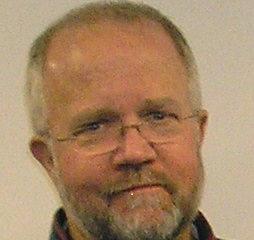
Gerry Dickerson, ATP, CRTS®, is a 40-plus year veteran of the Durable Medical Equipment and Complex Rehab Technology industries.. Dickerson, president of NRRTS, works for National Seating & Mobility in Plainview, New York. Dickerson is the recipient of the NRRTS Simon Margolis Fellow Award and is also a RESNA fellow. He has presented nationally at the RESNA conference, ISS and the National CRT conference and is a past board member of NCART.
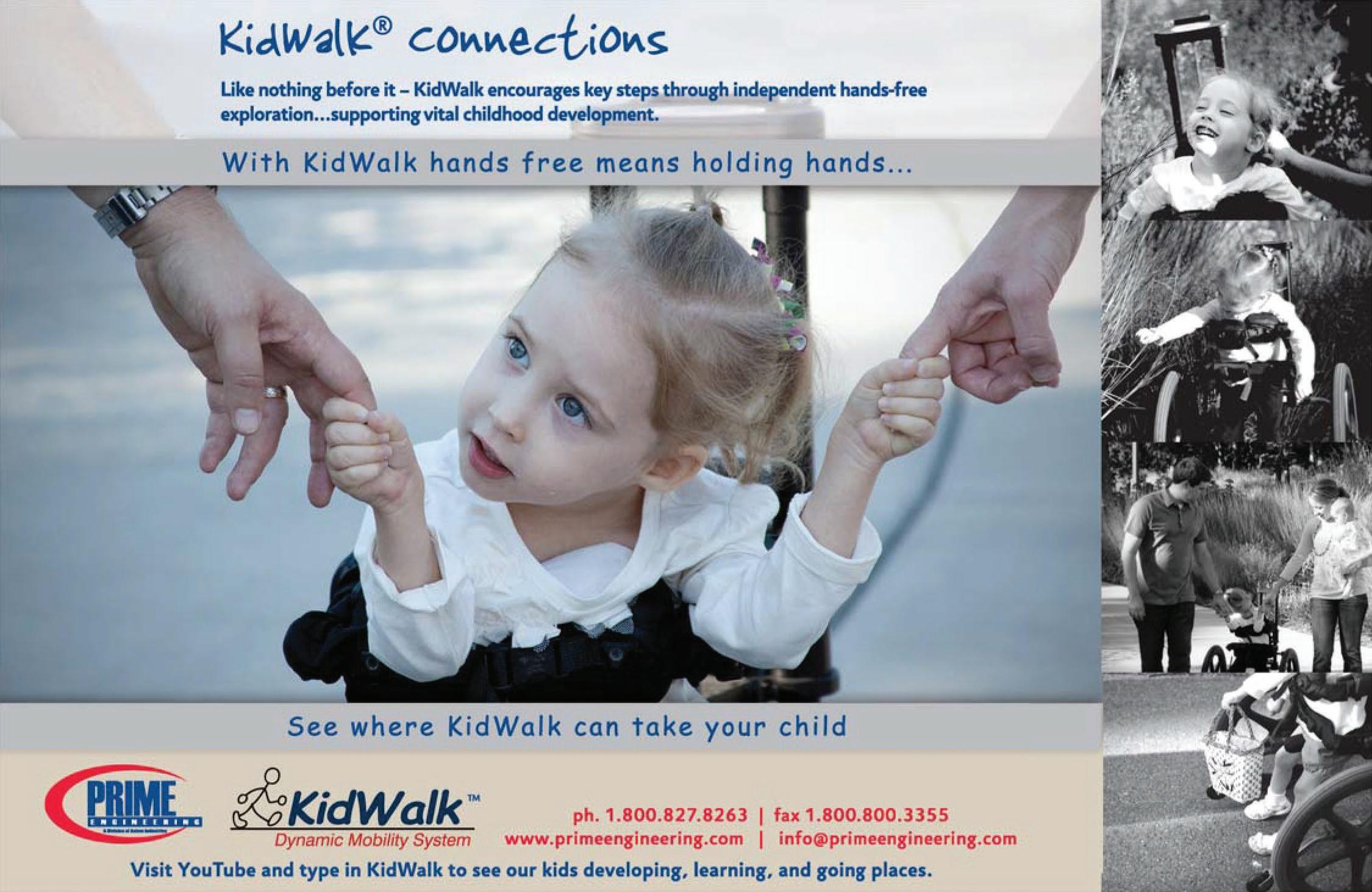
Written by: ROSA WALSTON LATIMER
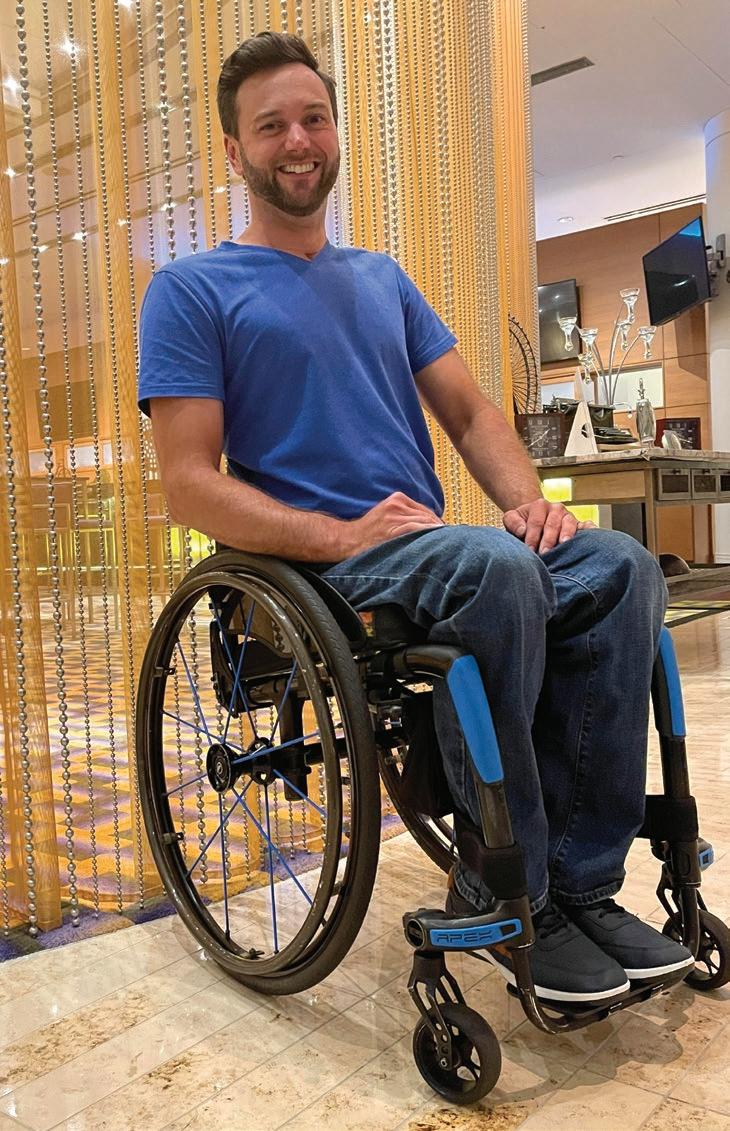
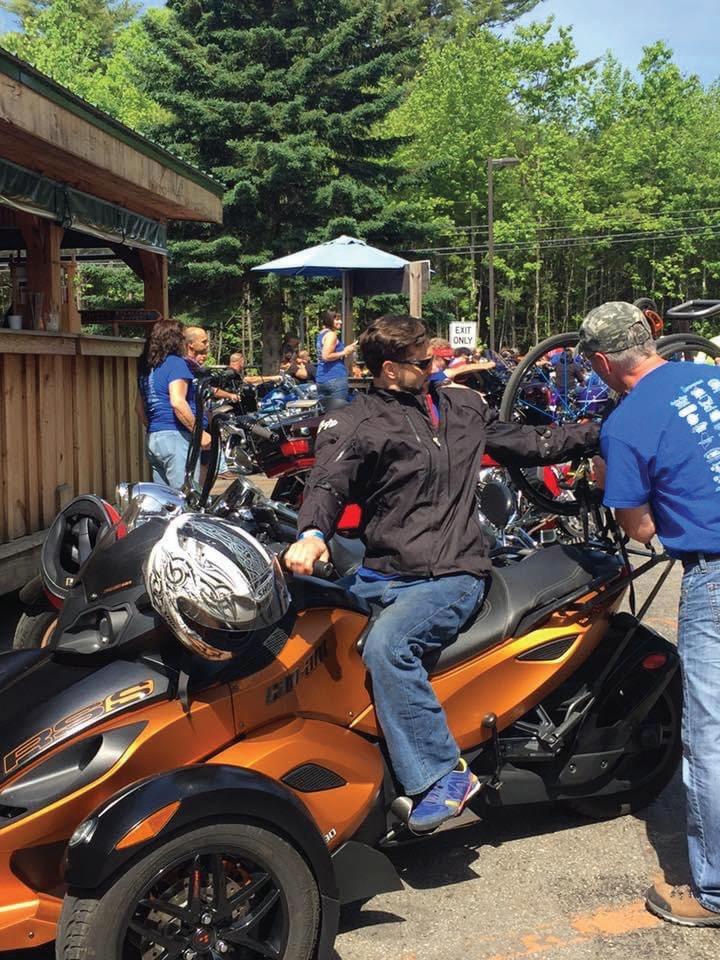
Chris Collin has life experiences that make him notably qualified for his job as a sales representative for Motion Composites. The company designs and manufactures ultralight manual wheelchairs. Collin is responsible for working with suppliers and clinicians throughout six New England states — Connecticut, Maine, Massachusetts, New Hampshire, Rhode Island and Vermont. “Our primary product is a K5 wheelchair that we custom build to the client’s individual measurements,” Collin said. “The chairs, rigid or folding, are made of either carbon fiber or aluminum.”
The 35-year-old enjoys working with therapists and end users. “Every time I have a conversation with someone, that is an opportunity to influence them in a positive way,” Collin said. “Providing education about our products is important, but even a word of encouragement or sharing a personal experience can be helpful to someone else. My job is the best when we deliver a chair, and the client shares their excitement at being able to transfer independently or put their chair into the car without help. I know how that feels.”
Yes, Collin knows how his clients feel and truly understands the challenges they face. In 2008, a motorcycle accident left him with a T5 spinal cord injury, paralyzed from the chest down. “A year and one day after that accident, I was training for a handcycling event and was hit by a car,” Chris said. “I totaled my bike but, fortunately, I only suffered severe whiplash. About four years ago, on the first day of ski season, I fell 30 feet off the chair lift and broke my neck.”
Collin shared this information to explain what he learned about himself as he recovered from these injuries. “Through all of those situations, I overcame discouragement by thinking positive and being determined to return to my normal activities or adapt to a new normal,” he said. “I realized through the adversity that I am a very stubborn, determined individual, and I taught myself how to use it to my advantage.”
After his motorcycle accident, Collin rebuilt his motorcycle so he could get back on the same bike, adding retractable wheels to allow him to ride on two wheels again. “I wanted to make sure that I conquered that. I still currently ride, but now I have a three-wheeler.” His handcycle accident occurred while he was training for a 26-mile event. The accident prevented him from participating in that event, so the next year he entered the 50-mile event. “The recovery after the fall that broke my neck was difficult, but every day I was motivated to be sure I would ski again. By the end of that same ski season, I was back skiing.”
“Now in my responsibilities with Motion Composites, I can see both sides of what my clients are experiencing,” Collin said. “I intend to use my experiences to make my service to those clients more effective.” The sales rep understands the
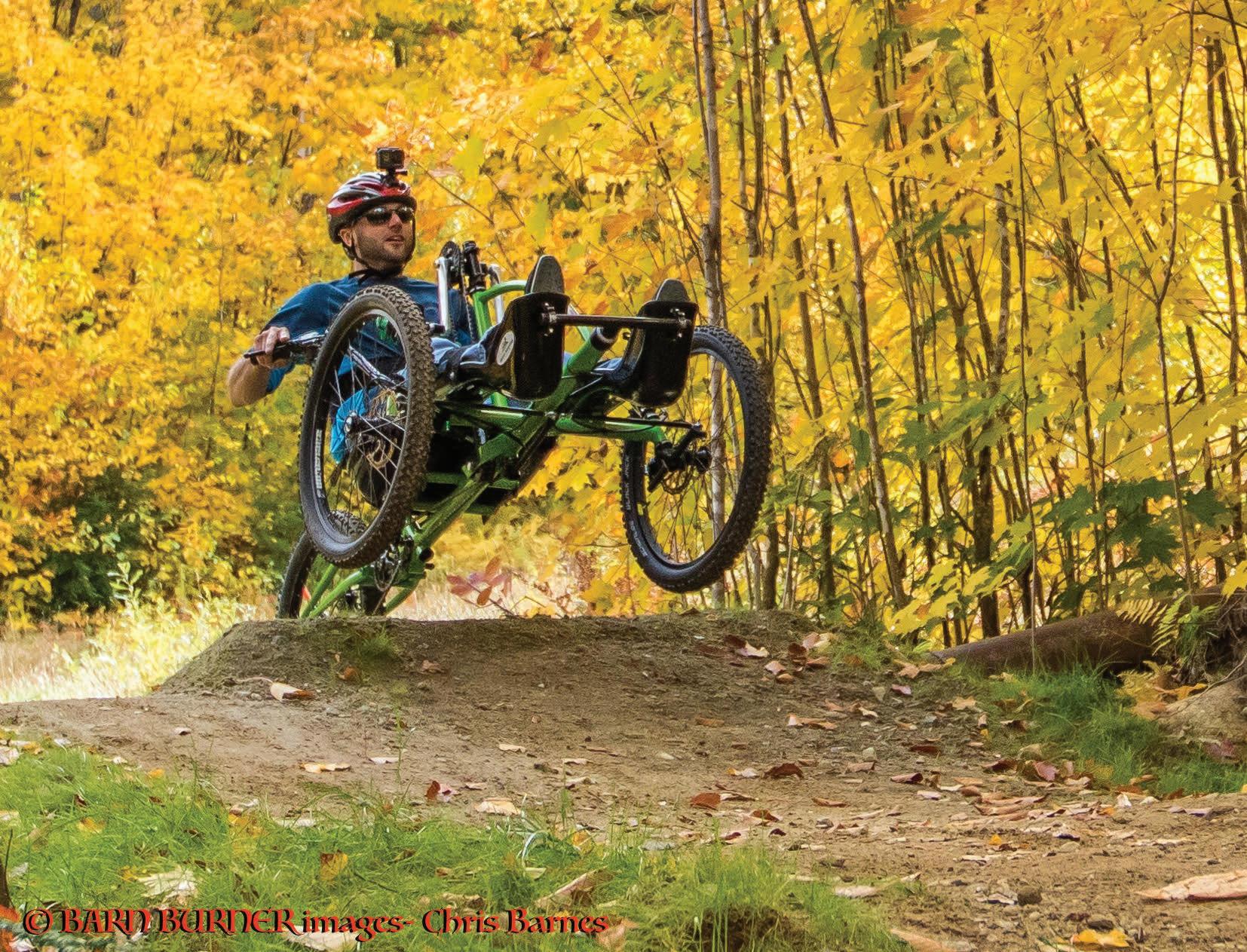
importance of providing the product that is best suited for the end user. “I encourage clients to be more engaged with the supplier and the ATP,” he said. “We [clients] tend to view the ATP as the expert and think that they will know what we need. You are your best advocate. An ATP may be an expert in their field, but they are not around you 24/7. They need a good understanding of your personal needs so the two of you can work together on possible solutions. Often clients are reluctant to speak up. You might try one backrest versus another backrest and even though you may not know the body physics of each, you can certainly tell the difference in how each feels to you.” Collin has experienced this himself. “I thought the ATP would know exactly what I needed, and I shouldn’t question anything. It is also easy to adapt to certain equipment or fittings even though it may not be the best for you. Instead, everything should be adapted to you.”
Collin’s parents set an excellent example for him. After his motorcycle accident, he was in a medically-induced coma for three weeks.
“During that time, my parents educated themselves on what to do next and where I should go for my rehab,” he said. “The support of my family and friends made a huge difference in my recovery and adapting to a different way of life. They were always ‘there’ for me and could sense when I needed their help and when I needed to do something on my own. For the most part, my friends treated me as though I did not have a disability. Yet I always knew if I needed something they would help me, just as before. I also realized that I could still be ‘there’ for them, too.”
An intentionally positive attitude and deliberate choices focused on his well-being have served Collin very well. “I understood that humor would help others, as well as myself, feel more at ease with
CONTINUED ON PAGE 10
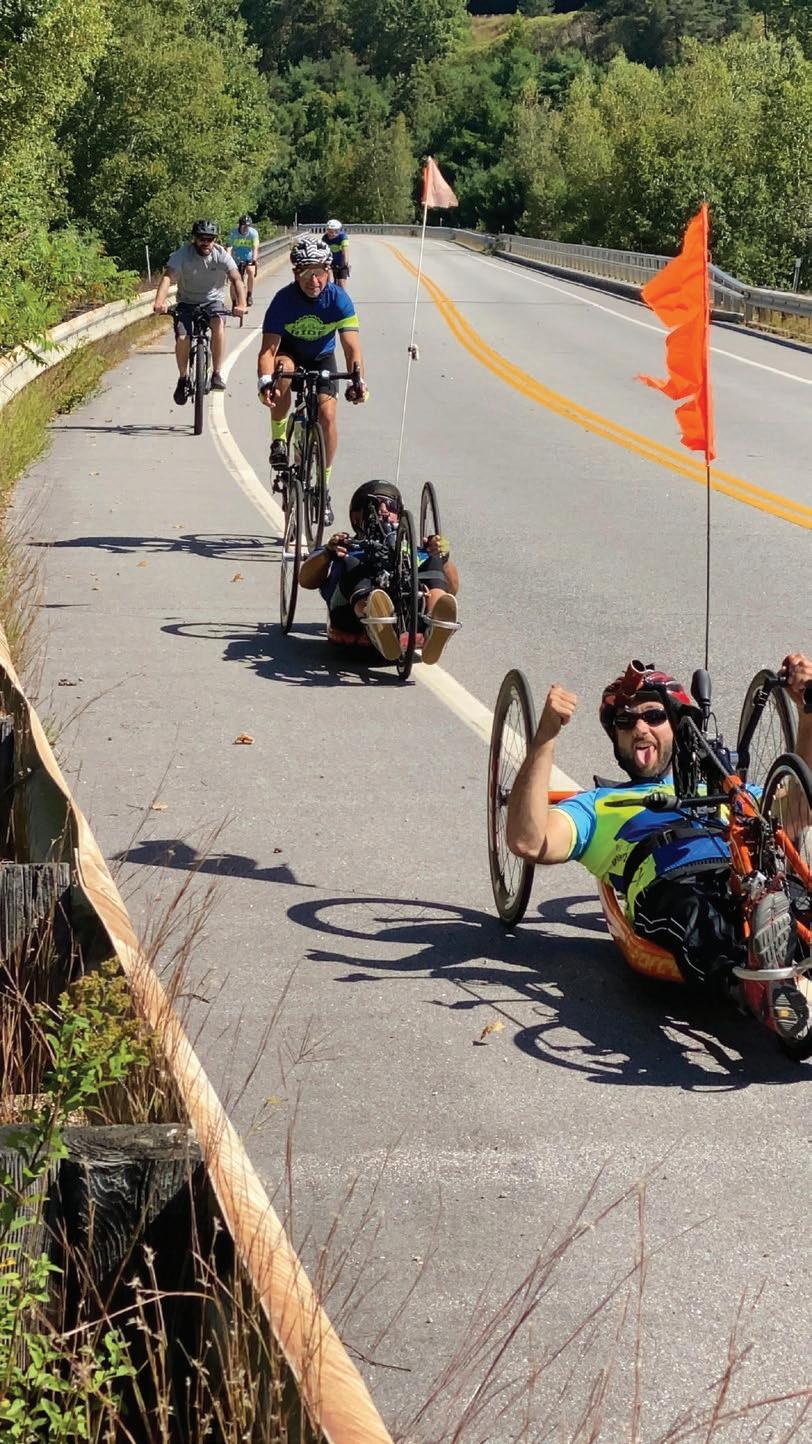
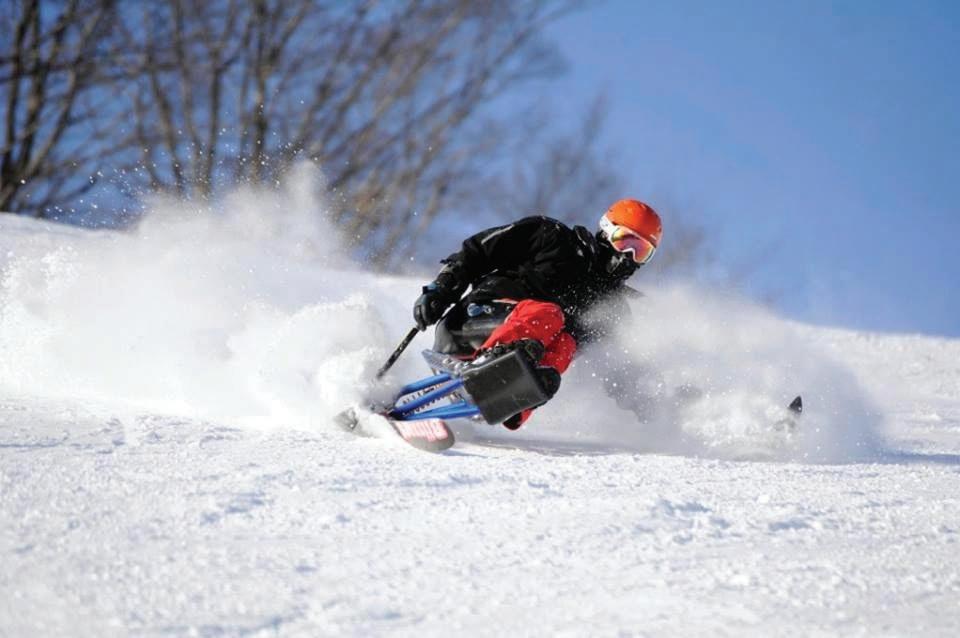
“MY JOB IS THE BEST WHEN WE DELIVER A CHAIR, AND THE CLIENT SHARES THEIR EXCITEMENT AT BEING ABLE TO TRANSFER INDEPENDENTLY OR PUT THEIR CHAIR INTO THE CAR WITHOUT HELP. I KNOW HOW THAT FEELS.”
CHRIS COLLIN:... (CONTINUED FROM PAGE 9)
my disability. This is true especially in a situation when I was with those who knew me before my accident,” he said. “Often people don’t want to say the wrong thing or simply don’t know what to say. There is the potential for an awkward situation. I learned if I could make a joke about my disability in some way, that would break the tension. When someone sees me laughing, they relax. Humor often opens the door to deeper, more meaningful conversations. My accident happened, my disability happened, and nothing will change that, so I had to figure out how to navigate this new life. I had a great deal of time during my rehab and recovery to think about how my life would be going forward. I willfully made decisions that would help me have a meaningful, productive future. This conscious effort had as much to do with my healing as my physical rehabilitation.”
Although Collin was not involved in sports before his motorcycle accident, adaptive sports are now a big part of his life. “When I was in rehab, I could barely
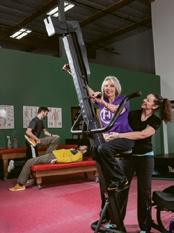
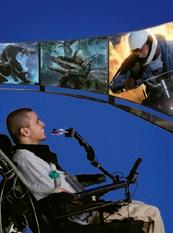
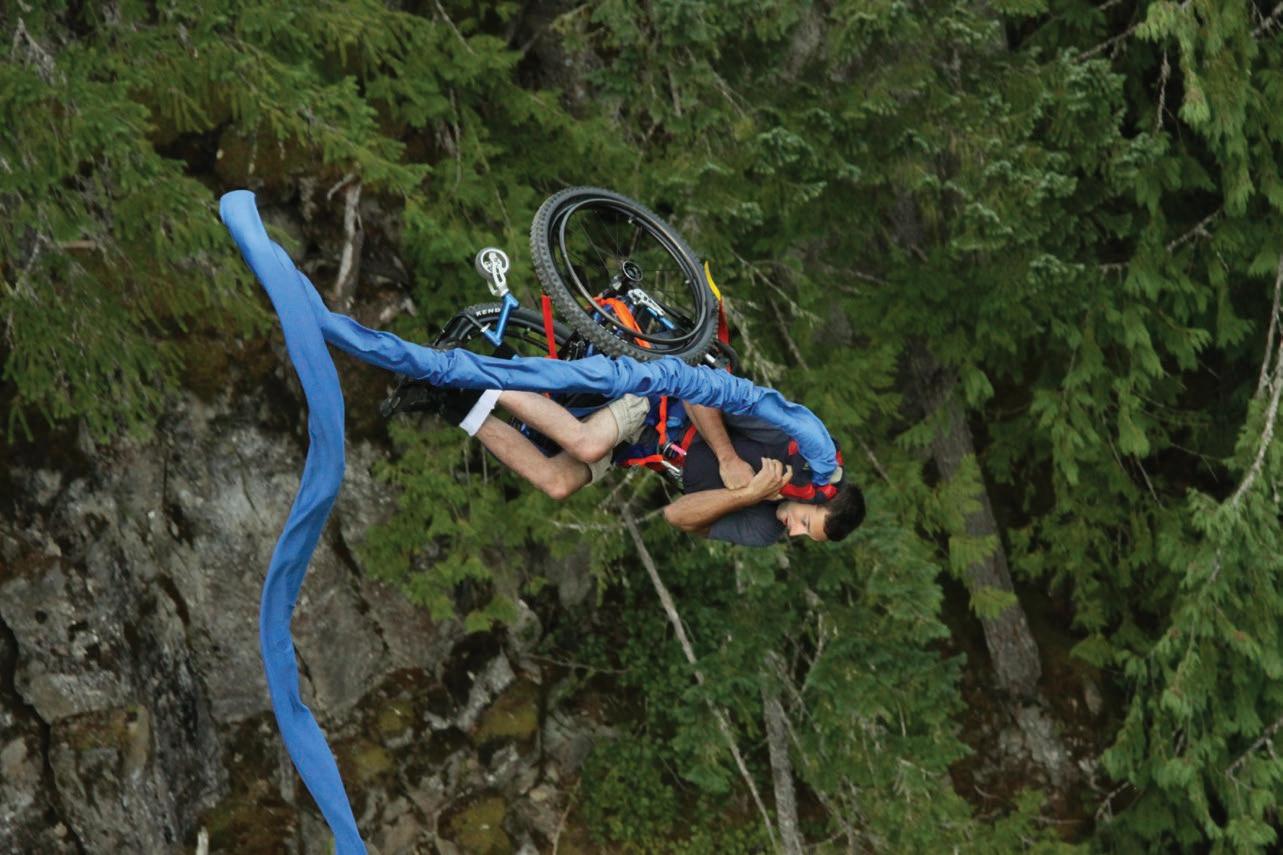
curl a 2-pound weight. I had some very good therapists who pushed me and helped me realize that I needed to continue to get stronger,” he said. “Adaptive sports put me with a group of individuals who are willing to try new things and make life what they want it to be. I felt I had hit the lottery to be among these experienced athletes who possessed a healthy mindset. I learned so much from them. Sports helped me get out into the community, talk to others and have something positive to do with my time.”
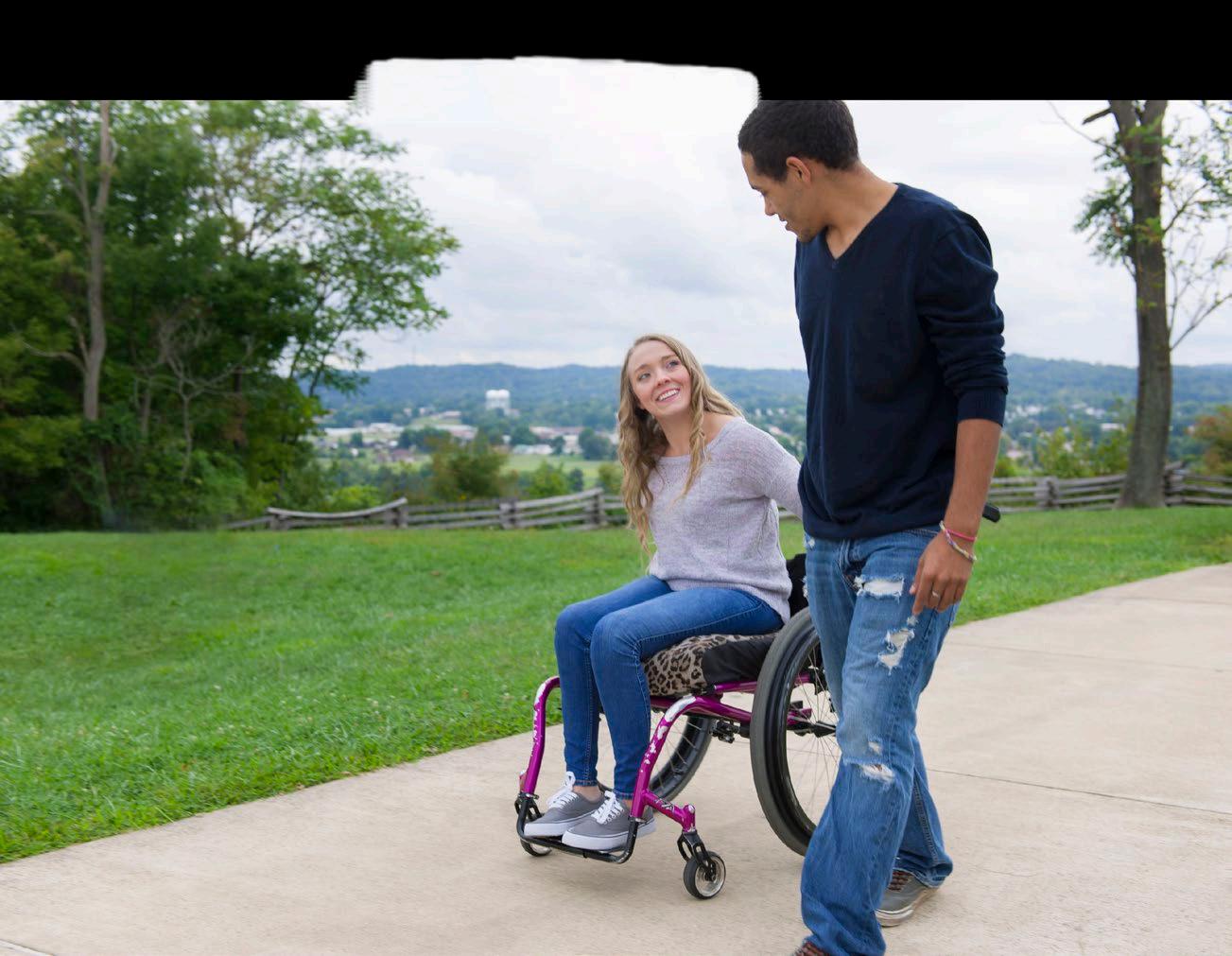
As a result of Collin’s proactive attitude, he now participates in seasonal sports with a solid plan to stay active between seasons. “I planned sports into my life after my accident. Before my accident, I was into ATVs and motorcycles. I liked to drag race ATVs and loved snowmobiling in the winter.” Collin lives in northern Maine, so snow skiing is a common activity. “I wanted to have a winter and a summer sport. I began by learning how to ski during the first year after my motorcycle accident. My ski instructor told me to find something to do in the summer that would help me get more fit for skiing, so I took up handcycling. During the transition seasons, I prepare for the next season using an indoor trainer,” he said. “I got into sports to get healthy and stay active, and I strongly encourage anyone with a disability to make this a priority. There are options available for any level of ability. You certainly don’t have to be an elite athlete to enjoy the benefits of exercise and interaction with others.”



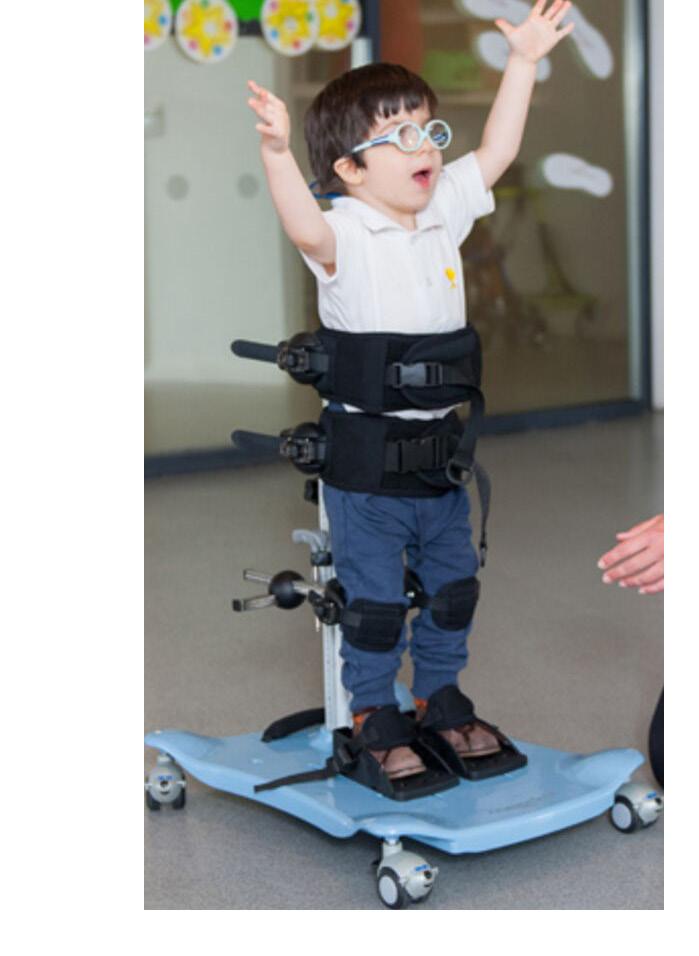
• Dynamic standing – A rocker can be easily mounted for supported movement and the development of dynamic postural control.
• Multiple positions – The stander can be positioned in anterior or posterior configuration.
• Adjustable accessories – The accessories can be clicked quickly and easily on and off the frame to meet a child’s changing needs or the variant requirements of multiple children.
• Three sizes – This range accommodates children 27” to 70” inches tall.
To learn more about the R82 Meerkat contact us or visit our website: +1 844-US-MOBILITY (844-876-6245) | www.etac.us.com | sales.us@etac.com
Written by: ROSA WALSTON LATIMER
We first featured Brian Coltman, ATP/SMS, CRTS®, a longtime NRRTS Registrant, in this magazine 11 years ago. At that time, Coltman had been working in the industry for three decades, beginning at age 16. He helped establish the Michigan branch of National Seating & Mobility in 1999 and was the lead ATP and branch manager there until 2011. At that time, he moved to the University of Michigan. We recently spoke with Brian to find out more about his work at the university.
WOULD YOU GIVE US AN OVERVIEW OF YOUR RESPONSIBILITIES AT THE UNIVERSITY OF MICHIGAN AND HOW THEY DIFFER FROM YOUR PREVIOUS WORK EXPERIENCE?
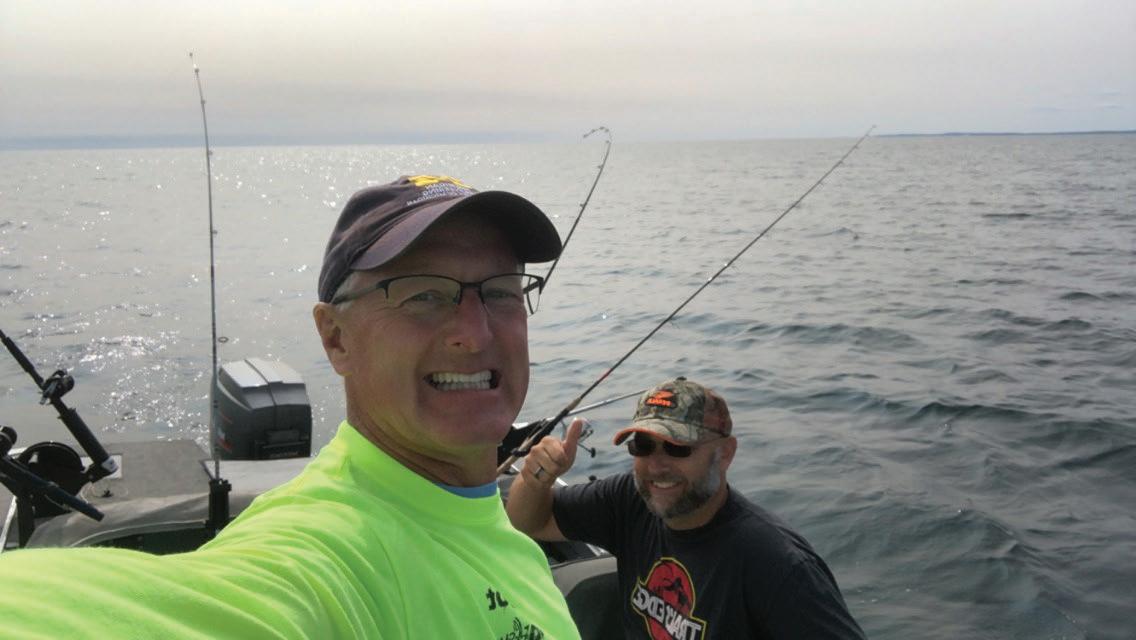
At the university, I am involved in more of an overall approach to patient care. As I have known for my entire career, the proper application of a good seating system and assistive mobility device can make a significant difference in a person’s long-term health care costs. If we can keep a patient from having wounds, help them breathe better or have better overall health because of proper seating, that saves the health system and insurance company money. I enjoy this broad approach to health care because I am in communication with the entire clinical team. For instance, at the physician wheelchair clinic, we may discuss patient needs regarding other clinical services or care and alert the physician to address them or engage other existing or new providers as needed. It is a more comprehensive appointment, not just an evaluation appointment to look at a wheelchair.
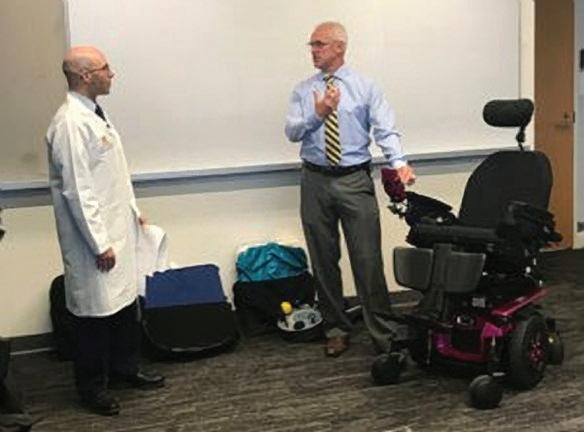
One of my specific responsibilities is the clinical support role for the University of Michigan’s Pranger ALS Clinic - Center of Excellence, a multidisciplinary clinic for patients diagnosed with Lou Gehrig’s disease. On Wednesdays, I serve as a member of the clinic team. This isn’t necessarily in the normal capacity of an ATP/SMS, CRTS® but more for consults, clinic support and recommendations for the patients as they go through their disease process. We see between eight and 16 patients with amyotrophic lateral sclerosis (ALS) each week. It is a busy clinic, but not all have wheelchair needs. The clinic typically has two sessions – one in the morning and another in the afternoon – each for four hours. We have a team of clinical practices that can see the patient during this time. There are
11 different disciplines: speech, neurology, physical medicine and rehab, occupational therapy, physical therapy, research, respiratory and pulmonary, an RN care coordinator, social work, dietary, and seating and mobility. Depending on the individual situation, I may meet with them and not even discuss wheelchairs, but instead support some of the discussion about home environments and access, transportation, and vehicles, when the patient may need manual equipment or whether it is time to start considering the concept of having a power chair, and insurance and funding. We occasionally have patients in the clinic for a second opinion or from out of state or out of the country. We want to be sure the patient is aware of the importance of using the correct type of credentialed supplier, depending on where they are from, when it is time to obtain a power chair.
On Fridays, I support the university’s wheelchair clinic, where we see patients with multiple sclerosis, spinal cord injuries, and various other diagnoses that benefit from custom mobility equipment. This is a collaborative physical medicine and rehabilitation physician clinic where often the patients have Medicare. We can take referrals sent for evaluations, usually for power mobility and seating. The patient will see the physician/physical therapist/ATP team, discuss goals and objectives, trial various equipment, and work out a plan and document justification for whatever mobility assistive device they need or a particular seating need if they are already a mobility consumer. Sometimes we will have a wound care patient for seating assessments and/or pressure mapping for adjustments, education or modifications.
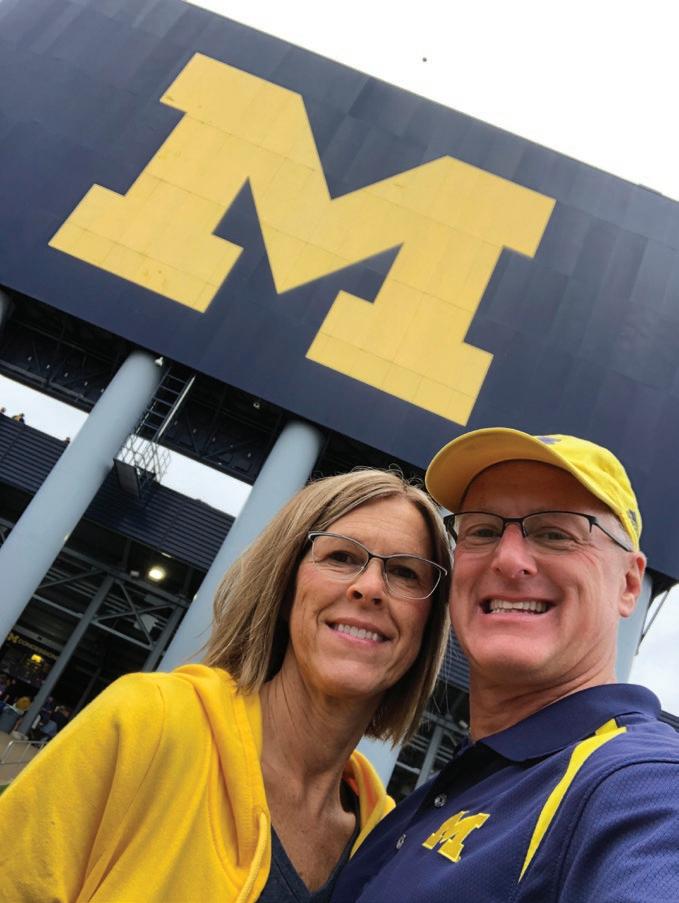
The remainder of my time is a balanced, self-managed mix of administrative responsibilities, problem-solving follow-ups, and deliveries. There is also lots of ‘road’ time seeing patients. I probably now do twice as much revenue as I did in 2010, so I have a higher volume, but my patients have more complex needs. In past years, I worked more with pediatrics and youth in schools and supported outside hospital clinics. Because of my clinical support role now, I see more ALS patients who need high-end complex power mobility. That equipment requires a great deal of support and adjustment. I may go to a patient’s home every week while they are dealing with the progression of the disease to do some fine-tuning adjustments, try different controls or positioning devices. We do everything possible to help keep a patient independent or, in some situations, to give the patient some independence back. We have a good tech support system here, so I do not do much repair work, but I still ‘wrench’ a lot of chairs. In ALS clinic, the neurologist often jokes about that. He says that he will step in to see a patient, and I’ll be on the floor with a wrench in my hand, behind the wheelchair tweaking something. He says he can recognize my shoes.
THE ISSUE OF FUNDING REMAINS A CHALLENGE; HOWEVER, HAVE YOU SEEN ANY CHANGES IN THAT ISSUE DURING THIS PAST DECADE?
In certain aspects, funding is still an uphill battle. In my arena of patient care, which is a lot of Medicare, I believe the process has become relatively refined, and even though all the hurdles still exist, they have stopped moving them as much. There was a time when you would do what was asked, and then Medicare would ask for something different. We were part of a team with some other academic medical centers and directly worked with Medicare to sort through some of the issues. It appears most of the documentation requirements have been identified. Our collaborative approach and the expertise of the physicians and therapists have helped ensure this. If we meet the requirements, we have a reasonably high success rate of getting approval for Medicare patients.
However, with other insurances, we still have many issues. I would say the funding is not better, but getting approval is. In 11 years, reimbursement has not changed much. We have accessories funding at risk
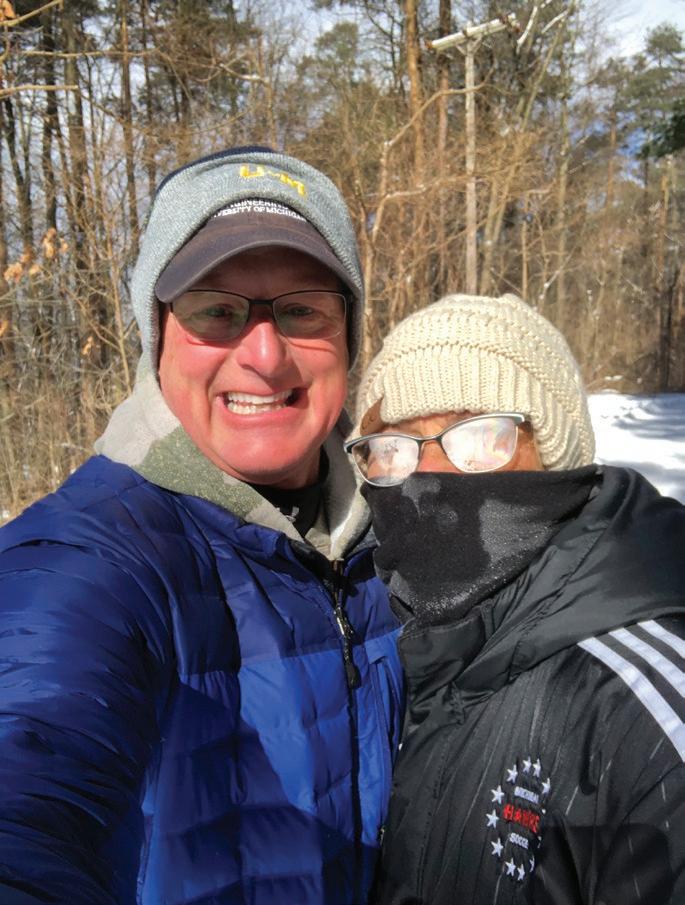
of being dropped to competitive bid rates, which are unacceptable, that has been kicked down the road numerous times. It is still looming and was recently postponed, not addressed. The Complex Rehab Technology (CRT) separate benefit category legislation is still a necessity.
TECHNOLOGY AND EQUIPMENT ARE IMPROVING AND CONSTANTLY CHANGING, BUT ISN’T IT A FACT THAT YOU CAN’T ALWAYS PROVIDE THOSE
THINGS FOR YOUR PATIENTS BECAUSE OF FUNDING ISSUES?
I believe the progress of the equipment that could be provided to patients is quelled because the expense of the new technologies is not within the reimbursement that exists and cannot be justified. Medicare with their ‘included in the base code allowable’ frequently inhibits K0005 optimization with materials or features. Batteries are a classic power chair example. You provide them in a power chair at essentially your cost, and the batteries are low quality, which frequently creates inconvenience to the consumer and expense to the supplier. There is battery technology that can run cars halfway across the country, and obviously, someone with a power chair could have an advantage from that. With technologies that some consumers could integrate, there is the challenge of getting them funded. Items such as sensors so chairs cannot drive into a dangerous situation or bump into things exist but are a challenge to fund. We can usually only provide those high-tech solutions in niche applications where you can get some alternative or private funding. Even if you can get something approved, the amount usually is not enough to pay for it.
Something that has not changed is my family is near and dear to me. Although now my children are grown. My high school sweetheart/
(CONTINUED FROM PAGE 13)
wife of 33 years and I have three daughters – a teacher, a nurse and my youngest just graduated from the University of Michigan as a chemical engineer. They are all amazing. Currently, all three live in Michigan, but my youngest daughter is heading to Taiwan as soon as their coronavirus restrictions are reduced. My wife and I are very excited yet slightly anxious about that. We are an active family and love being together. We enjoy golfing, hiking and vacation activities as a family as often as we can. My wife and I are looking forward to our next act and the prospective things to come.

GIVE US AN EXAMPLE OF HOW YOUR WORK HAS AFFECTED YOUR PERSPECTIVE ON LIFE?
I learned long ago to appreciate life and simple things. I continue to have a wonderful sense of gratification and enjoy working with a group of individuals dedicated to helping our patients. It takes a lot to make me have a bad day.
You may contact Brian at BCOLTMAN@MED.UMICH.EDU.
Brian Coltman, ATP/SMS, CRTS® has been employed by Michigan Medicine/University of Michigan Wheelchair Seating service in Ann Arbor, Michigan for 10 years. He is a member of the Michigan Medicine Pranger ALS Clinic/ALS Center of Excellence and PM&R physician wheelchair clinic. Coltman provides consultation and supplier coordination, detailed evaluation for and provision of power and manual mobility systems, custom seating, and Complex Rehab equipment. He has 41 years in DME and CRT direct patient care and has been a NRRTS Registrant since August 1996. In his personal life, he enjoys family, hunting, fishing, physical activity, and all things outdoors.
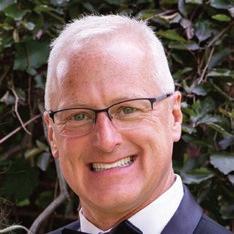
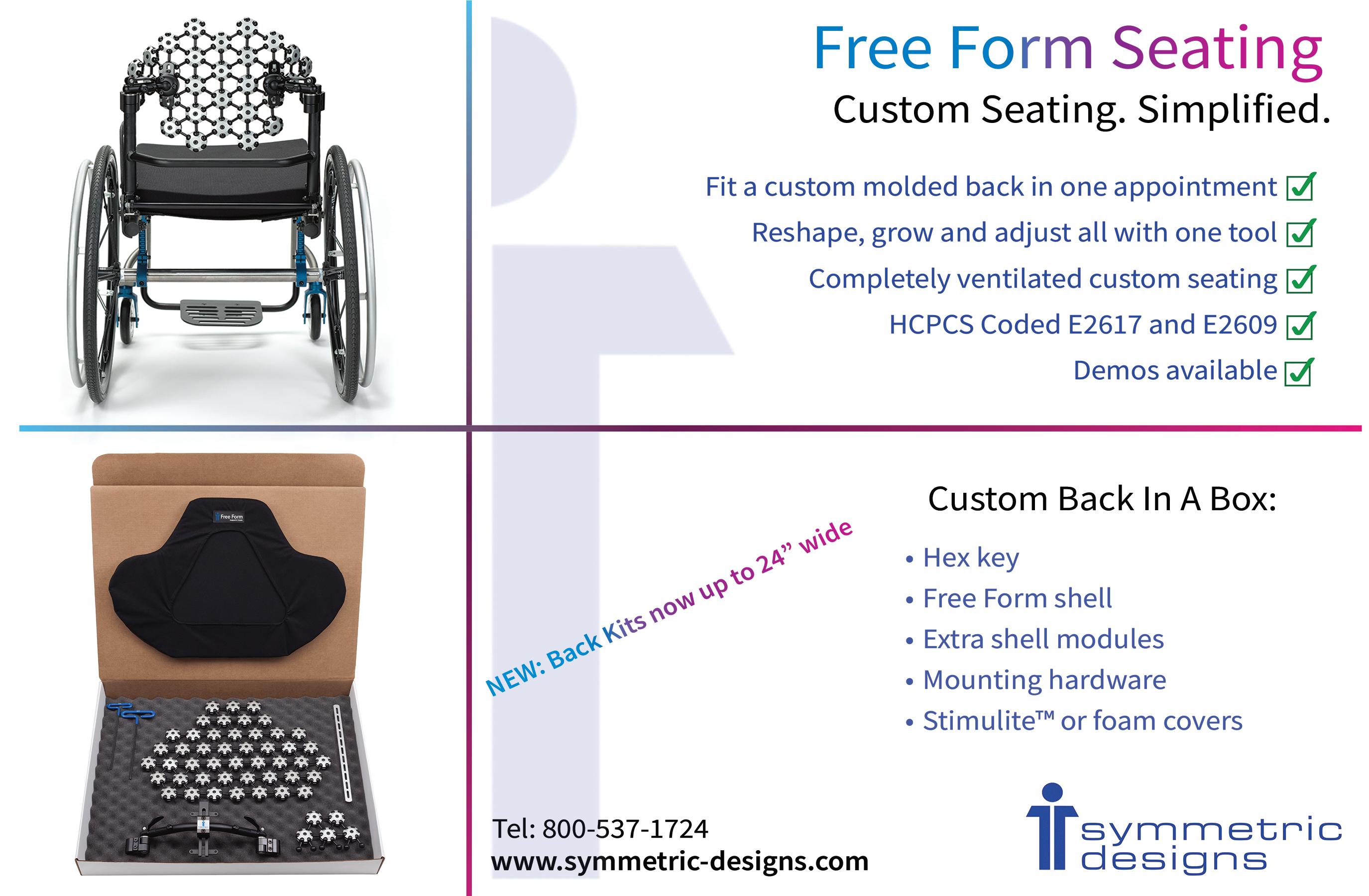

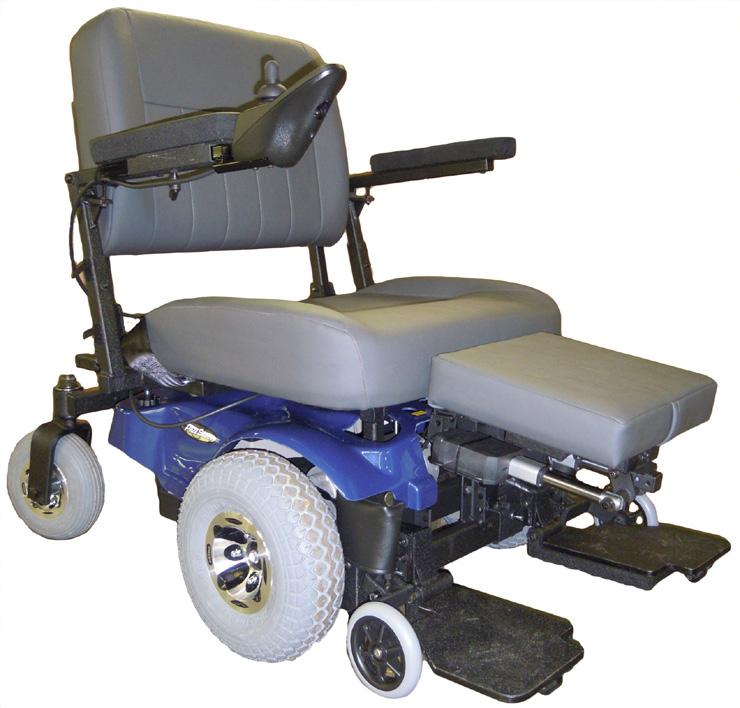
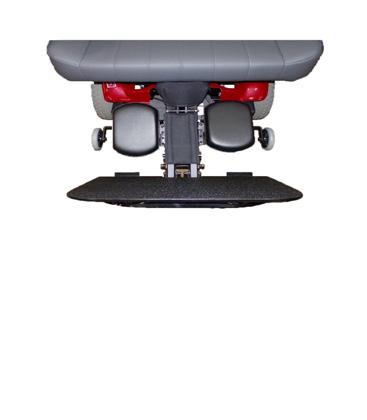


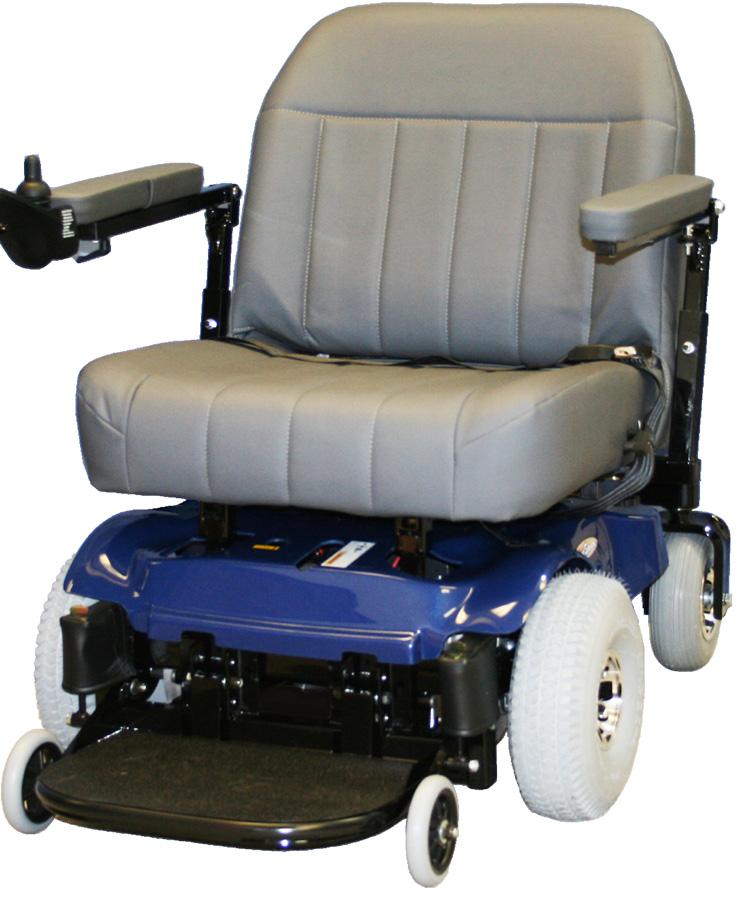
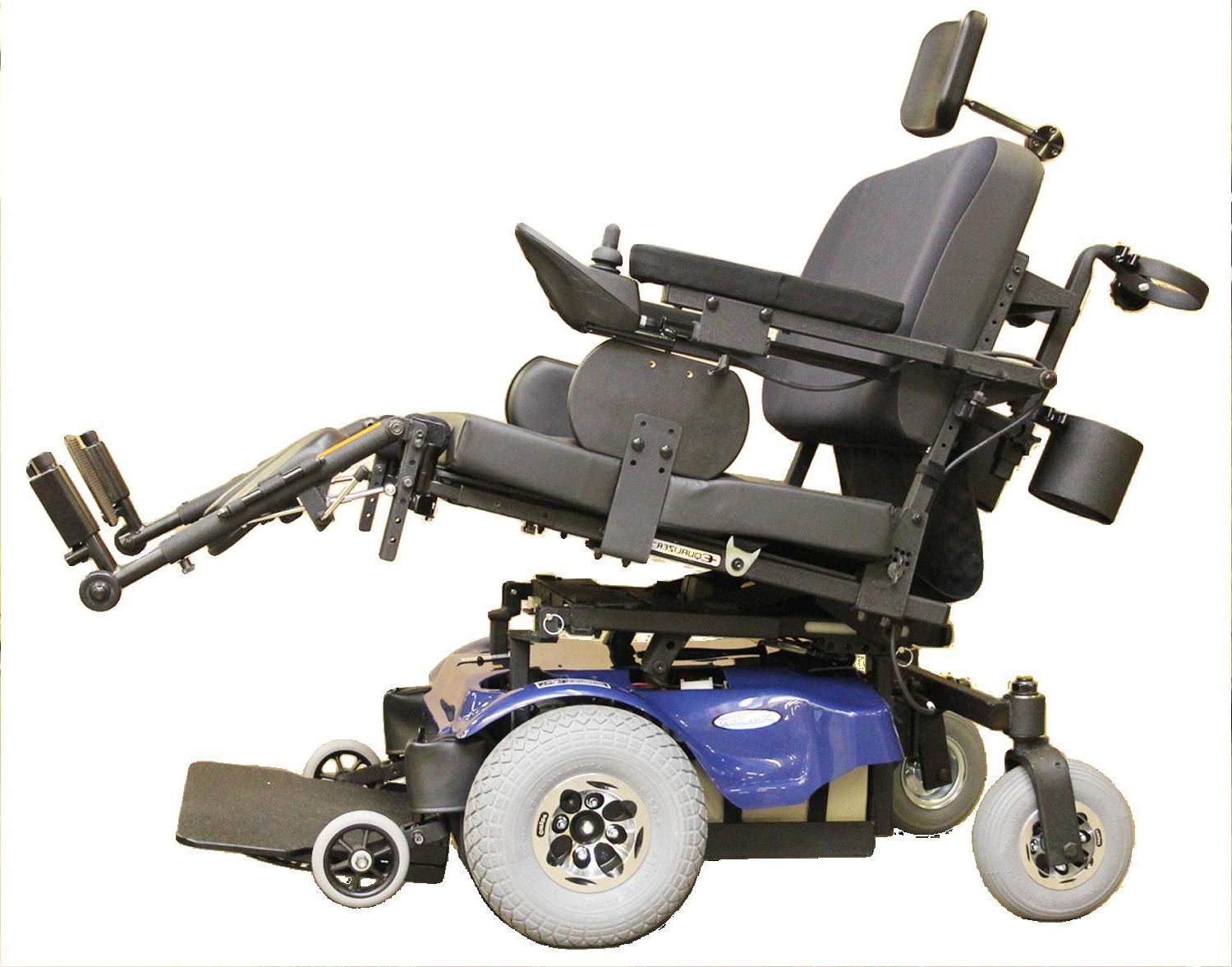
Written by: DON CLAYBACK, EXECUTIVE DIRECTOR OF NCART
While we still have work to do, Complex Rehab Technology (CRT) manual wheelchair users got a big win thanks to the advocacy of CRT stakeholder organizations and individuals.
On June 23, the Center for Medicare and Medicaid Services (CMS) announced a 90-day delay in the scheduled July 1 Medicare cuts to CRT manual wheelchair accessories. If allowed, these cuts would be a result of an inappropriate application of Competitive Bidding Program pricing information. The suspension will stay in place through Sept. 30 and, accordingly, there will not be any payment reductions or claims processing changes during this time.
While this is not a permanent fix, it shows the concerns of the CRT community were heard and listened to. Given the delays in the seating of the new Department of Health and Human Services secretary and CMS administrator, along with all the other dynamics in the past 12 months, this was a positive interim solution that we will build on to secure the needed permanent policy.
This outcome was the result of many months of collaborative CRT advocacy to ensure these damaging cuts did not go into effect July 1. We want to thank Rep. John Larson, D-Conn., and his congressional colleagues, including Rep. Lee Zeldin, R-NY, and Sens. Bob Casey, D-Pa., and Rob Portman, R-Ohio, for their leadership and support. We also sincerely thank CMS for their action that protects access to CRT manual wheelchairs during this extended period.
WE REMAIN COMMITTED TO SECURING A PERMANENT FIX AND HAVE BEEN COMMUNICATING WITH CMS. WE WILL STAY IN CONTACT AS WE MOVE THROUGH THIS DELAY PERIOD TO ACHIEVE THE NEEDED POLICY TO PERMANENTLY PROTECT ACCESS TO CRT MANUAL WHEELCHAIRS FOR THE PEOPLE WITH DISABILITIES WHO DEPEND ON THEM.
Special thanks to all the consumer, clinician, supplier and manufacturer individuals and national organizations for coming together to urge CMS and Congress to take needed action. Consumer and clinician groups included the ITEM Coalition, United Spinal Association, Christopher and Dana Reeve Foundation, ALS Association, Spina Bifida Association, Paralyzed Veterans of America, Center for Medicare Advocacy, and the Clinician Task Force. Provider and manufacturer groups included NRRTS, U.S. Rehab,
AA Homecare and RESNA. Thanks also to the NCART Legislative Committee and the advocates who held in-person meetings in Washington, D.C.
We remain committed to securing a permanent fix and have been communicating with CMS. We will stay in contact as we move through this delay period to achieve the needed policy to permanently protect access to CRT manual wheelchairs for the people with disabilities who depend on them.
The expectation is Congress will be passing national telehealth legislation later this year, in advance of the expiration of the Public Health Emergency. Our objective is to make sure that the availability of a CRT-related telehealth services is made permanent.
We have been having ongoing discussions with representatives in congressional offices and supporting advocacy from the American Physical Therapy Association (APTA), American Occupational Therapy Association (AOTA) and American SpeechLanguage-Hearing Association (ASHA).
Our primary focus is support of the “Expanded Telehealth Access Act” HR 2168, introduced by Reps. Mikie Sherill, D-N.J., and David McKinley, R-W.Va. This bill provides a permanent designation of physical therapists, occupational therapists and speech-language pathologists as authorized telehealth practitioners.
Members of our National CRT Telehealth Consortium are staying active. The Clinician Task Force has conducted a survey of physical and occupational therapists to gather examples of how telehealth has been a benefit to individuals with disabilities having CRT-related needs. These real-life cases will be shared with Congress, policymakers, and others to increase awareness of the application and positive outcomes that result from the use of telehealth by physical and occupational therapists in the CRT provision process.
While Congress continues to have discussions about a national policy, it is important advocates deliver the CRT request to their individual members. It only
takes 5 minutes to visit www.protectmymobility.org and send the prepared email asking for support of legislation to permanently authorize physical and occupational therapists and speech-language pathologists as telehealth practitioners. Please share this with others and send your own emails today.
As reported for several months, we are eagerly awaiting CMS’ announcement requesting public comments on their reopening of the National Coverage Determination (NCD) to potentially extend Medicare coverage to include power seat elevation and power standing systems used with power wheelchairs. This comment period is the next step in securing Medicare coverage of these important technologies that will provide significant benefits to people with disabilities.
Our hope is that with new CMS Administrator Chiquita Brooks-LaSure now in place, we will see progress on this initiative. We continue to work with the ITEM Coalition and will be supplying resources to allow organizations and individuals to submit supporting comments to CMS once the comment period begins.
While the pandemic has produced the need for many changes, what has not changed is the need to continue to communicate the
CRT access message directly to Congress. Since we are not having our traditional in-person National CRT Conference in Washington, D.C., this year we will be doing something new.
We are proud to announce that NCART and NRRTS will be holding a first-time Virtual CRT Congressional Fly-In on Tuesday Sept. 21 from 9 a.m. to 5 p.m. ET. We’re excited to offer the opportunity for stakeholders to communicate important CRT messages to their members without having to leave the comforts of their home or office. We will take care of scheduling your appointments and preparing you with the materials needed to have effective and productive virtual meetings.
Plan to join us on Sept. 21 for a day of sharing the needs and benefits of access to CRT with your congressional representatives and senators. Save the date in your calendar and watch for additional details to get registered.
In conjunction with our Virtual CRT Congressional Fly-In, we will also be holding this year’s National CRT Awareness Week from Sept. 20 to Sept. 24.
This annual event is designed to allow suppliers, manufacturers, clinicians and consumers to collectively share and promote a better understanding of CRT across the
CONTINUED ON PAGE 18
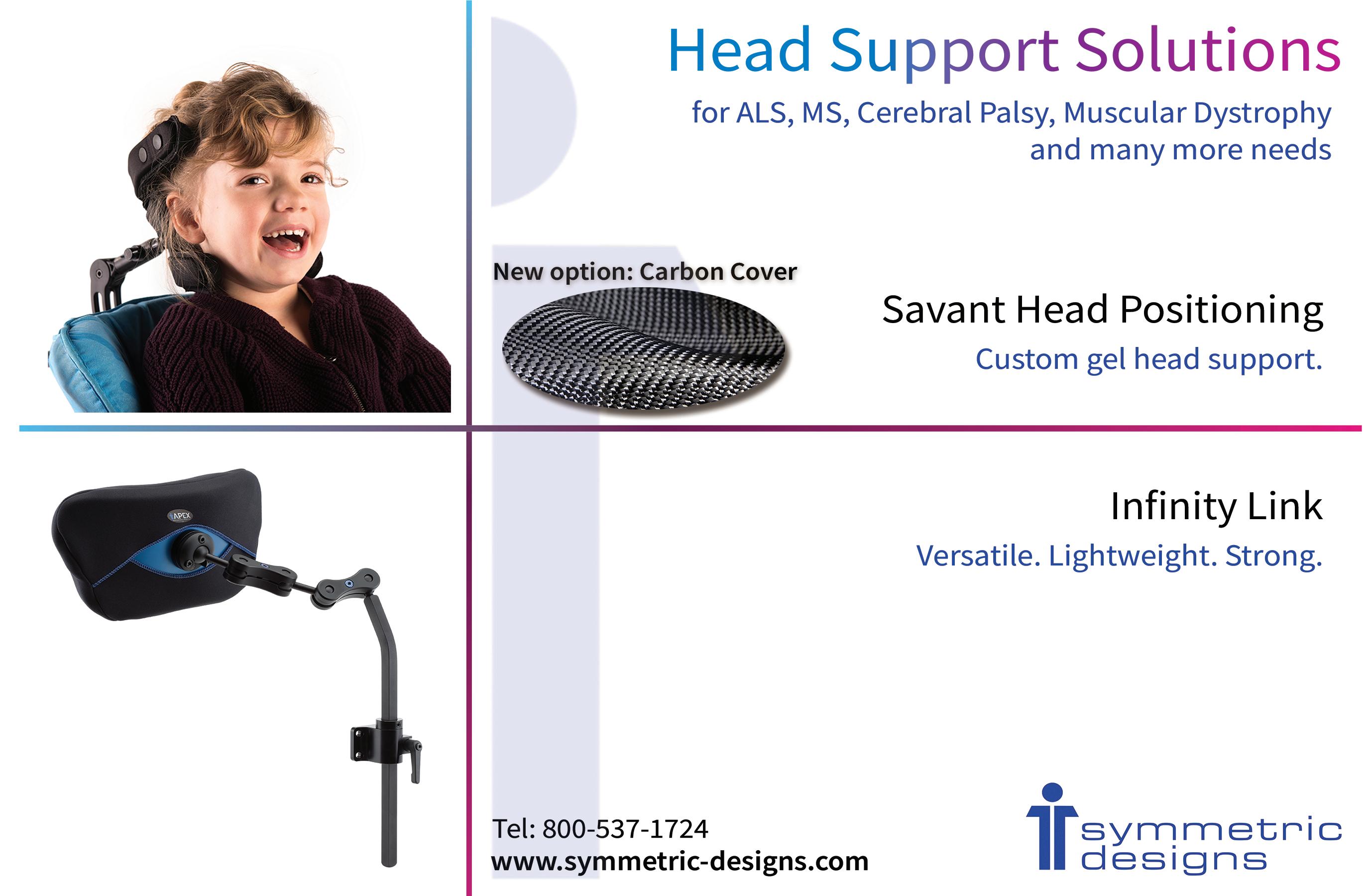
MID-SUMMER CRT UPDATE (CONTINUED FROM PAGE 17)


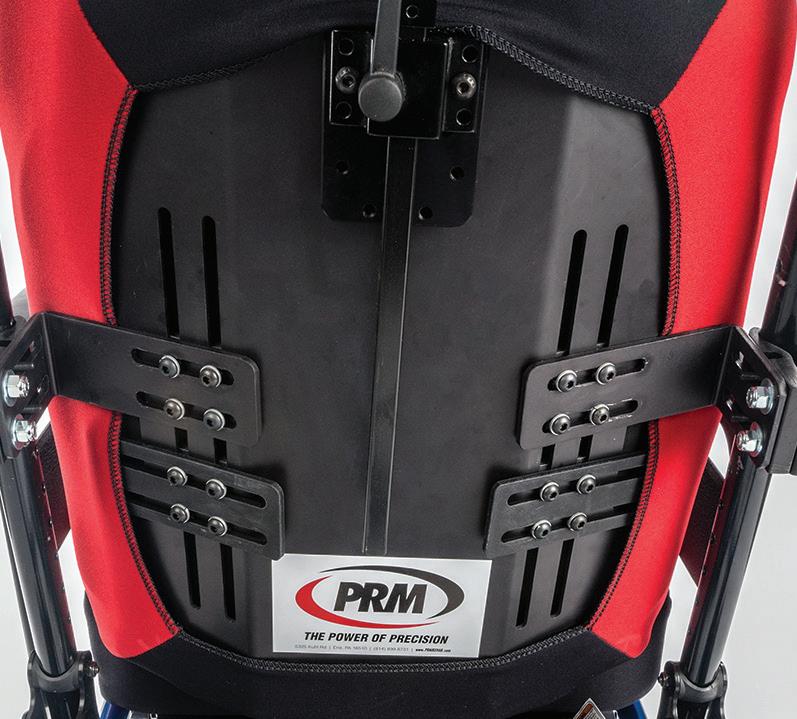
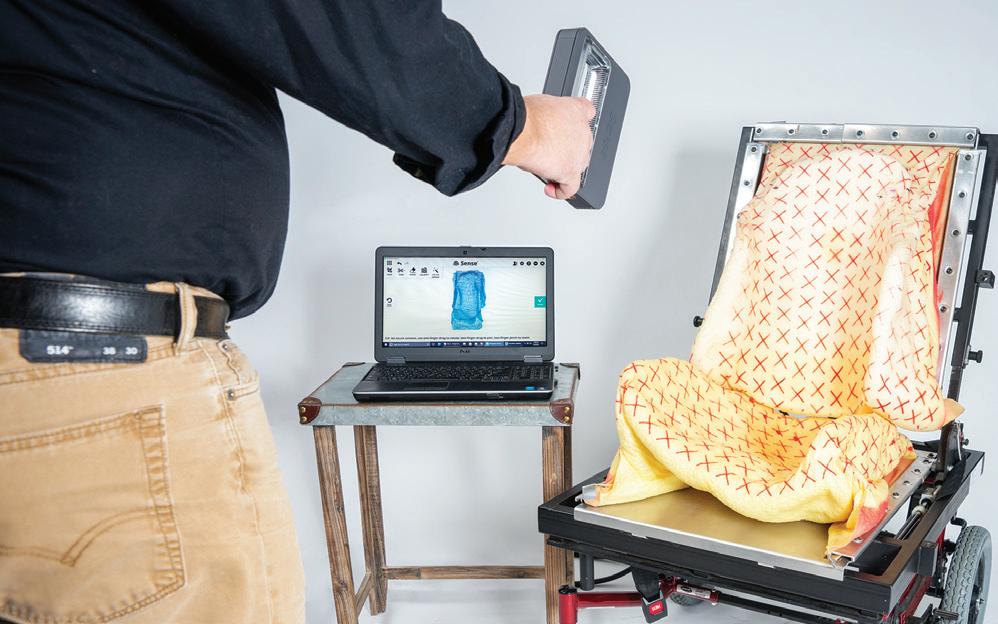
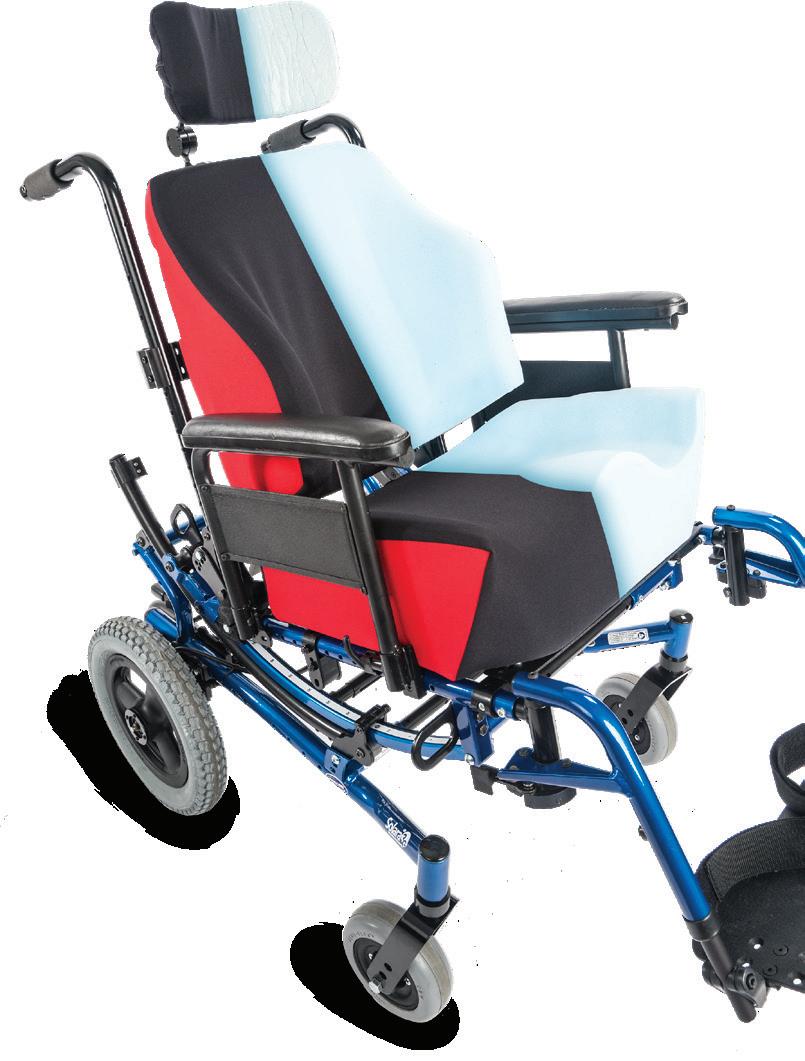
Last year over 65 organizations and thousands of individuals participated by sharing stories, writing articles, posting videos, holding webinars and broadcasting podcasts. It was great to see everyone come together to share the CRT message. We look forward to having even more organizations and individuals participate this year.
NCART is the national advocacy association dedicated to protecting CRT access. To continue our work, we depend on membership support to take on important federal and state activities. If you are not an NCART member, please consider joining. For information visit the membership area at www.ncart.us
CONTACT THE AUTHOR
Don may be reached at DCLAYBACK@NCART.US
Don Clayback is executive director of the National Coalition for Assistive and Rehab Technology (NCART). NCART is national organization of Complex Rehab Technology (CRT) providers and manufacturers focused on ensuring individuals with disabilities have appropriate access to these products and services. In this role, he has responsibility for monitoring, analyzing, reporting and influencing legislative and regulatory activities. Clayback has more than 30 years of experience in the CRT and Home Medical Equipment industries as a provider, consultant and advocate. He is actively involved in industry issues and a frequent speaker at state and national conferences. country. That understanding includes the people who use it, how it is prescribed and provided, the benefits it brings, and why access is so important.

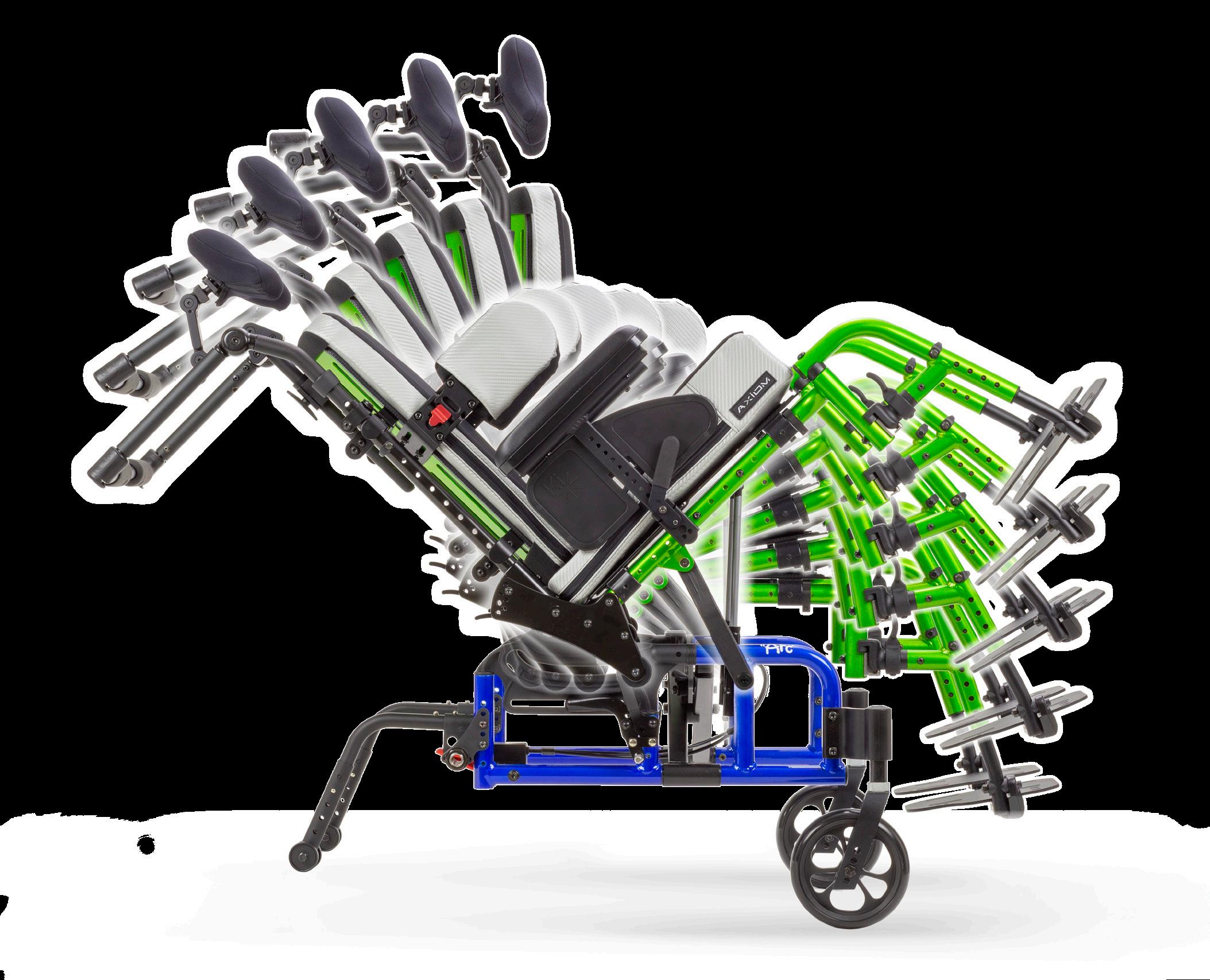
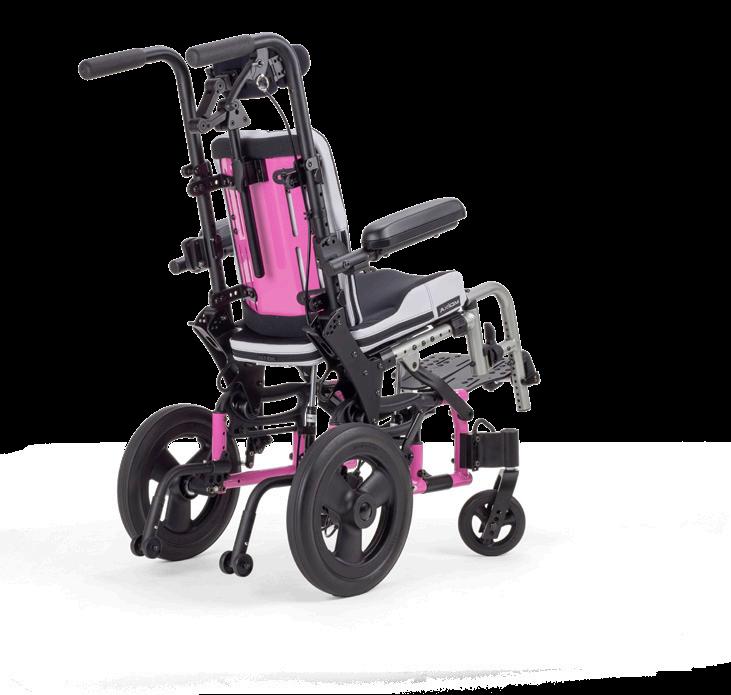
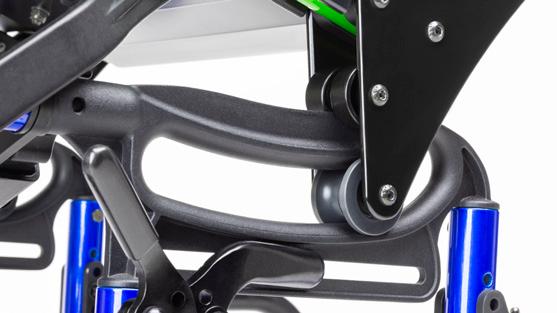
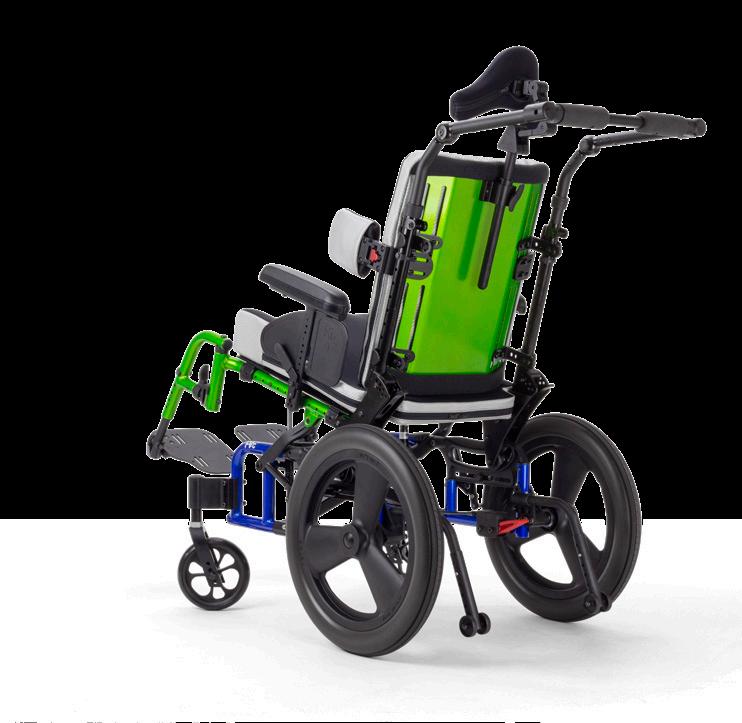
Written by: PETRA CONAWAY, PT, DPT
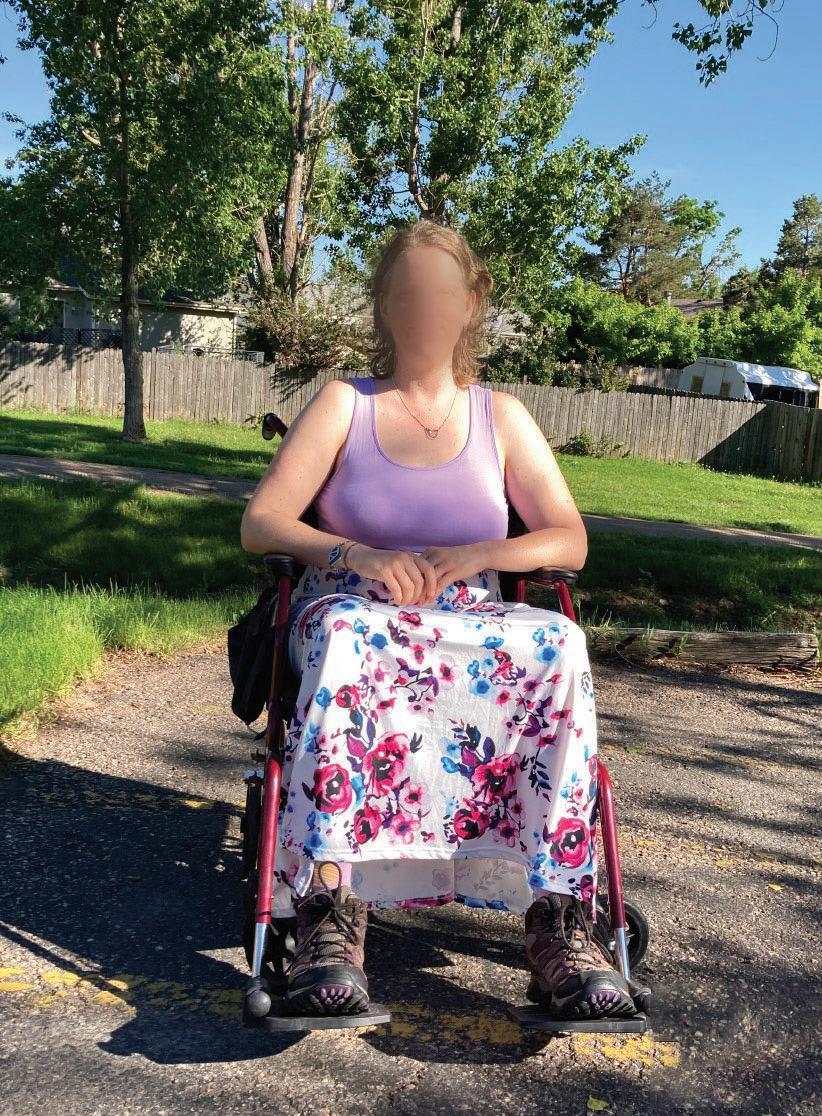
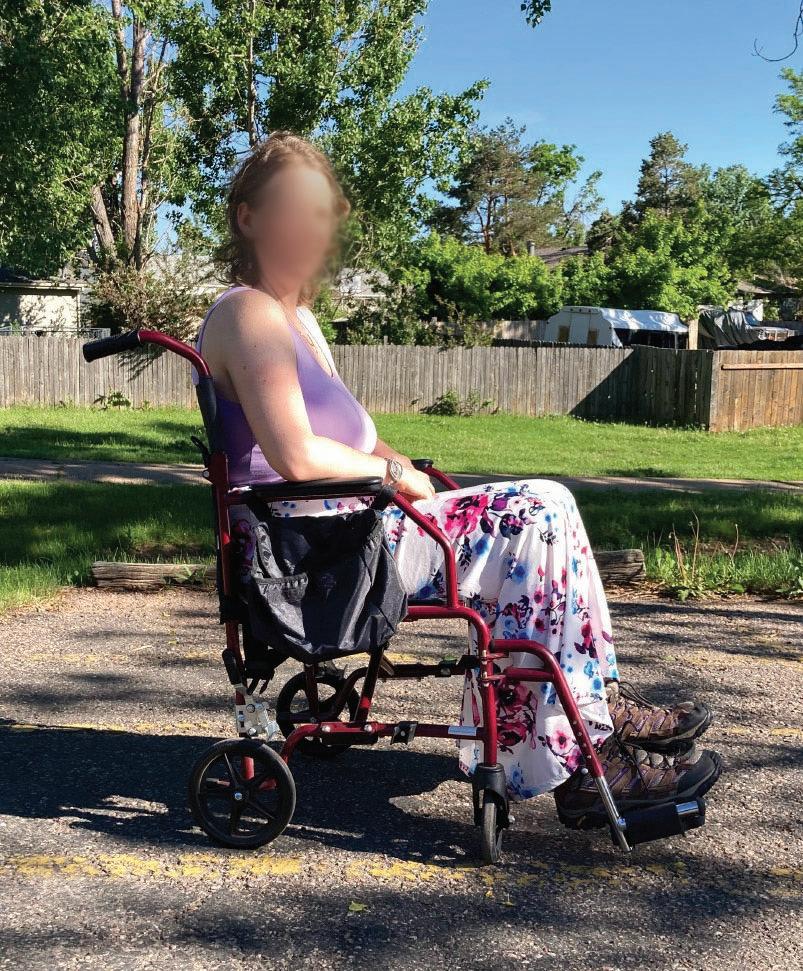
In the world of complex wheelchair seating and mobility, it is unusual to see clients walk into the clinic with apparent ease. Although individuals with Ehlers-Danlos Syndrome (EDS) can typically ambulate and may appear to have no disabilities, this debilitating condition significantly impacts health and function.
EDS is one of a group of inherited disorders that results in defective collagen production. The most common type is hypermobility EDS, causing hypermobile joints, muscle fatigue, chronic pain and premature arthritis. This condition is often associated with postural orthostatic tachycardia syndrome (POTS), which is characterized by dizziness and increased heart rate.
This was the case for Madison, a 33-year-old woman who came seeking an ultra lightweight manual wheelchair with a power assist device. She presented with hypermobile EDS, chronic pain and a mild case of POTS. Her symptoms were characterized by widespread pain in her joints, particularly the sacroiliac joint, jaw, bilateral shoulders, wrists, knees and feet. She was also prone to frequent joint subluxations and fatigue with minimal activity.
Madison had become increasingly dependent with her functional mobility and activities of daily living (ADLs) since the onset of her symptoms seven years prior. She had to give up her career as a professional violinist, though was able to teach online classes up to two hours a day. On a good day, her ambulation was limited to indoor distances only (50-100 feet). When fatigued, she had to remain in bed and relied on her partner and mother to assist with ADLs. She started using a transport wheelchair for all her community mobility, which resulted in very poor posture and limited sitting tolerance due to the incorrect fit and size of this base (see Figures 1 and 2). She was unable to use a cane, crutches or a walker for ambulation as these created stress through her upper extremities, resulting in intractable pain. Pain is often the primary reason why clients with EDS are unable to tolerate typical ambulation aids and require a wheelchair for all mobility-related ADLs.
Objective assessment of clients with EDS can be challenging. A thorough mat exam is rarely needed, as postural asymmetries and/or passive range of motion limitations are not typically a concern. The reported subjective symptoms are often very difficult to verify with comprehensive objective testing. While manual muscle tests are often normal, functional tests of strength and endurance, such as gait or balance assessments, reveal mobility deficits related to fatigue. Performance is also largely dependent on the time of the day these tests are conducted due to of varying levels of activity-related pain and fatigue.
The 2-minute walk test is a strenuous task for clients with EDS. Madison ambulated 75 feet before needing a rest due to rapid onset of pain in her affected joints. She scored 21/30 on the Functional Gait Assessment, indicating she was at fall risk due to limited postural stability, particularly during the more challenging tasks on the assessment. The Brief Pain Inventory revealed similar average scores (4-4.5) for pain severity and interference with her ADLs. She achieved a score of 50 on the Fatigue Severity Scale, indicating moderate to high fatigue severity during all of her ADLs. All of these outcome measures indicated a severely limited activity tolerance due to early onset of pain and fatigue with minimal exertion.
To write a comprehensive letter of medical necessity, clients may be asked to provide a diary of their ADLs over a period of seven to 14 days, depending on the timing of the next appointment. Because pain and fatigue can be harder to measure,
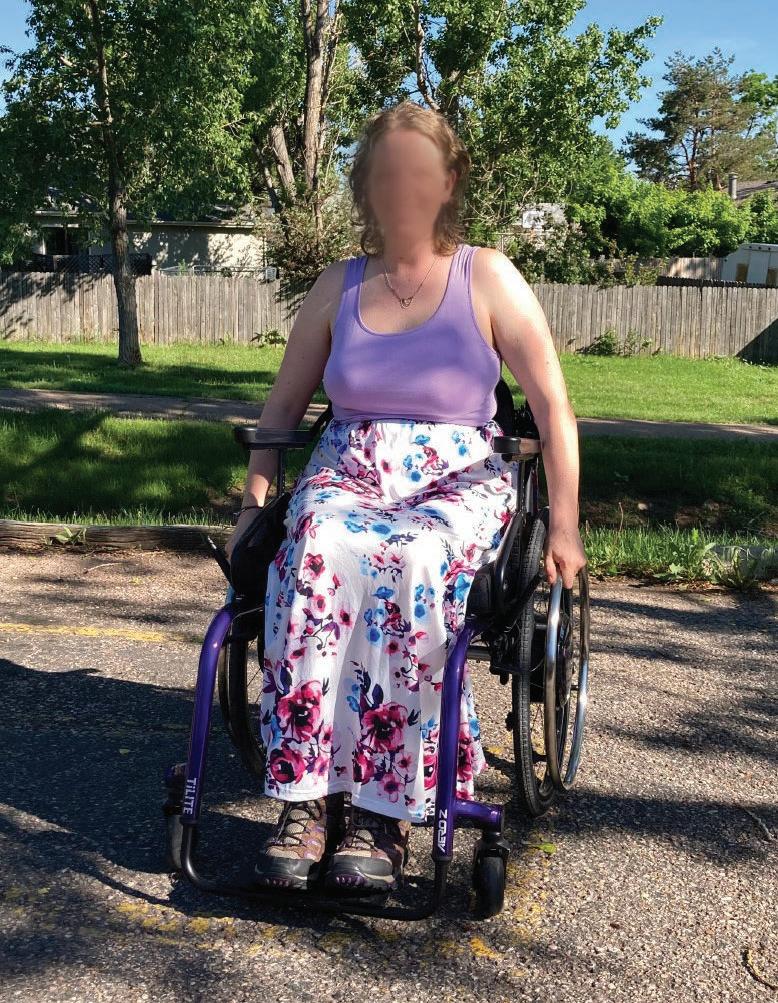
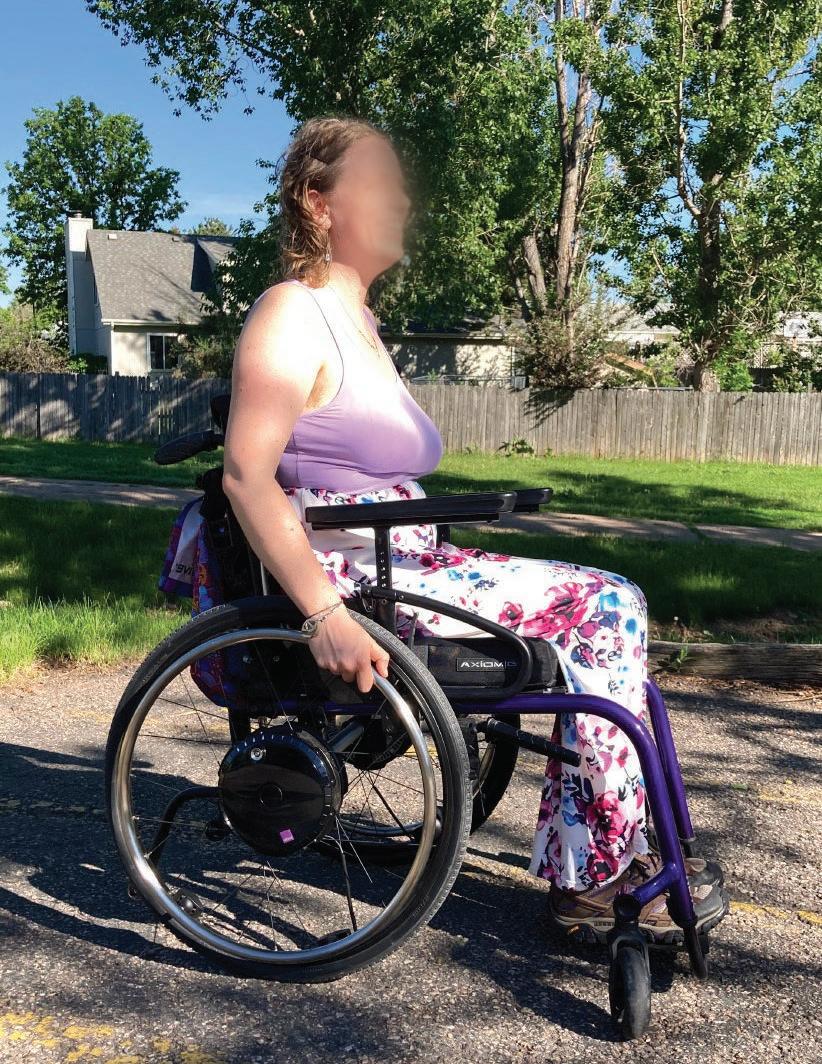
having written detail of varying fatigue levels, pain severity and tolerance of ADLs from day to day is extremely useful for justification purposes. This helps paint a more organic picture of how these symptoms alter the daily lives of those affected by EDS.
For Madison, a series of product trials were conducted over two, two-hour long visits, to ensure Madison had plenty of time to consider all her options. Her goals were to obtain the lightest weight manual wheelchair to reduce her effort to propel and a power assist device to improve her ability to manage longer distances in the community. She needed a seat cushion that would provide stability to reduce joint pain and a back support to align her trunk in midline without inhibiting her function.
A TiLite Aero Z manual wheelchair, the Twion power assist wheels, a Matrx PB Elite back support and an Axiom seat cushion (see Figures 3 and 4) were selected. The assessment was completed in September 2020. In late October 2020, she returned to the seating clinic for the fit and delivery of her new equipment, so adjustments could be made and for a review of wheelchair skills training. Madison was very happy with her new equipment and excited that she could finally give up her transport chair.
THIS NEW EQUIPMENT OFFERS HER MANY MORE OPTIONS TO BECOME AN INDEPENDENT, ACTIVE INDIVIDUAL WHILE MAXIMIZING HER FUNCTIONAL POTENTIAL AND MINIMIZING HER SYMPTOMS OF EDS.
A few months later, Madison reported she loved the wheelchair, and her sitting tolerance greatly improved. However, she was not yet able to use her wheelchair full time due intractable pain and weakness in her upper extremities. During the COVID pandemic, her community mobility was very limited, but her physical therapist helped her build up strength and walking tolerance to manage short distances on foot. Her next goal was to focus on strengthening of her upper extremities so that she could eventually become an independent self-propeller in the community.
Even though Madison has not yet fully explored the benefits of her new equipment, the new wheelchair has contributed to improved health and a much better quality of life than if she continued to use her transport chair. This new equipment offers her many more options to become an independent, active individual while maximizing her functional potential and minimizing her symptoms of EDS.
REFERENCES:
EHLERS DANLOS SYNDROMES. (2017). NATIONAL ORGANIZATION FOR RARE DISORDERS. RETRIEVED FROM HTTPS://RAREDISEASES.ORG/RARE-DISEASES/EHLERS-DANLOSSYNDROME/
CONTACT THE AUTHOR
Petra may be contacted at PETRA.CONAWAY@UCDENVER.EDU
Petra Conaway, PT, DPT, is a physical therapist with the Center for Inclusive Design and Engineering, University of Colorado, Denver. She specializes in Complex Rehabilitation Technology (CRT) in wheelchair seating and mobility, as well as nighttime positioning. She began her clinical career in spinal cord injury rehabilitation, as well as inpatient acute care and outpatient orthopedics prior to specializing in CRT. She earned her doctorate degree at A.T. Still University, Arizona. She lives with her husband in Denver, Colorado.

Written by: ROSA WALSTON LATIMER
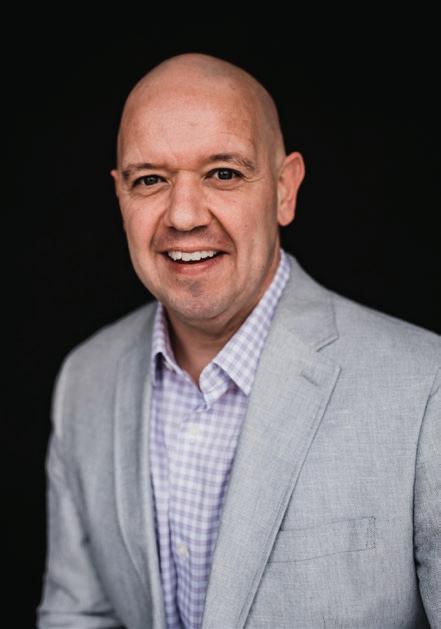
Mike Longo, a lifelong resident of Toronto, Ontario, Canada, is in his 20th year with Sunrise Medical. He began as a sales rep in the field and worked his way up to management. “I’m currently responsible for commercial operations in Canada,” Longo said. “That includes field sales reps, consumer and technical service, marketing, and clinical education. Basically, I’m responsible for anything that involves working with the clients in Canada.”
THAT IS A BROAD RANGE OF RESPONSIBILITIES. HOW MUCH ARE YOU INVOLVED IN HIRING AND WHAT DO YOU LOOK FOR WHEN CONSIDERING SOMEONE NEW TO YOUR TEAM?
I am involved in all of it! I believe when you are trying to bring someone in who was not previously involved in our industry you need to be sure they have a very strong customer focus. A willingness to work with the customer until a need is met or a problem solved is essential. I must make sure that we hire people that are ready to go above and beyond for our clients. When I am hiring customer or technical service staff, although they are interacting through the telephone, they must understand that at the other end of the line is a client that is depending on us to help them.
When I’m hiring a clinical educator or a sales rep, industry experience is important, but I also look for someone with a good work ethic and an outgoing personality. I’m always striving to maintain a strong team culture, so I look for things on a resume that have to do with working in a team environment. If someone has a hobby that involves working with others or plays team sports, that is an indication that they understand how we approach our work.
In recent times, it has been rewarding to bring on new team members with a clinical background in a sales capacity. Our reps in the field have become less sales rep but are instead clinical advisors working with clinicians and vendors helping them understand how to prescribe our products effectively. I especially appreciate the experience of bringing people into our industry who might not have had a true understanding of what we do and then, after two or three months, for them to totally “get” why I have been here this long and why I’m still passionate about our work.
When I was younger, I was fortunate to grow up near an integrated sports facility called Variety Village that my uncle, Joe Millage, managed. The seed of passion I now have for our clients came from him.
From the age of 7 until I was 12, I played wheelchair basketball as an able-bodied participant. I got to see the potential and ability rather than the disability. When I was 24 years old, I had the opportunity to begin my career with Sunrise Medical. I already knew what a Quickie wheelchair was and had experience with individuals who use our products. Right away I knew this is what I wanted to do.
Some of the individuals I met through my experience at the integrated sports facility remain friends today. Of course, we are all a bit older now. I have been able to watch Jeff Adams develop into a world-class track athlete, a six-time world champion in wheelchair sports, and see Tracey Ferguson, a seven-time Paralympian, become a multi-gold medal winner in wheelchair basketball. I first met them at a very young age, and now, and because of my career with Sunrise, I’ve had the opportunity to support them and work alongside them.
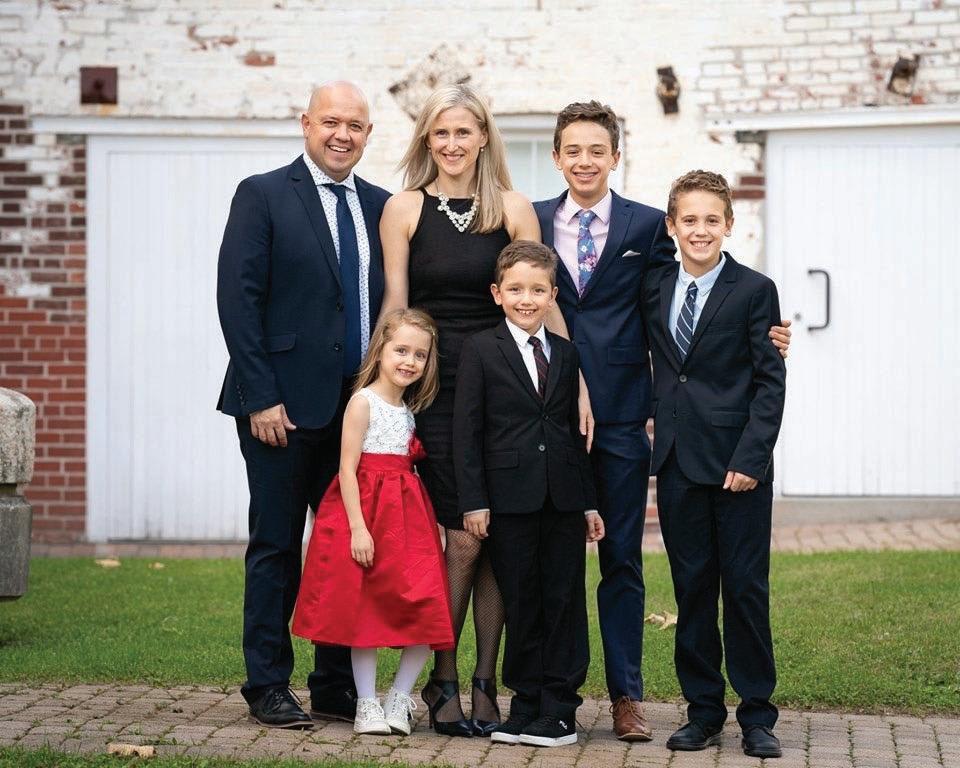
Another mentor who greatly influenced my career is Michel Papillon. I worked with him for the first 15 years I was at Sunrise. He was a great example to me and helped deepen my commitment to helping others.
YOU HAVE MANY PEOPLE LOOKING TO YOU FOR GUIDANCE AND LEADERSHIP. WHAT KEEPS YOU ENGAGED AND ENERGIZED?
First and foremost, what keeps me engaged is there is always a new challenge or a new product. Every day is a new day. When I come to work, without fail, I feel the spirit of team – not only with my company but also with the vendor and the clinician we are working with – all working together to find a solution for our clients. I love coming to work, and I always feel good at the end of the day. I believe in my company, my colleagues, and our products and I know that we are helping people.
WOULD YOU EXPLAIN WHAT LED TO THE RELATIVELY NEW ALLIANCE BETWEEN CANADIAN COMPLEX REHAB TECHNOLOGY SUPPLIERS AND NRRTS?
Canadian Assistive Device Association was looking for something to strengthen the level of credibility with our funders, which are very different than in the U.S. From the very beginning, NRRTS was willing to work with us and adapt and develop specific programs for the Canadian market. We started this program in the throes of a global pandemic and went from a few Registrants in Canada to more than 240 today. It is a great success story. We have a NRRTS Advisory Committee that meets monthly with representatives from coast to coast. We worked hard to create awareness of this new opportunity. Everyone has been very quick to jump on board. We thought that the first year we might get 100 Registrants and we have far exceeded that.
Of course, we had heard of NRRTS, but I only got firsthand knowledge of the scope of the organization from working with the organization’s executive director, Weesie Walker. Talk about someone with passion and knowledge of the industry! How can you meet Weesie and not want to work with her?
For 10 years, I was on the executive board of the Canadian Assistive Device Association, and when my term was up with that organization, I was looking for another challenge.
The opportunity recently became available for a board position with Wheelchair Basketball Canada, and I applied. This is a nonprofit that is responsible for the organization of wheelchair basketball in Canada
and is the Canadian member to the International Wheelchair Basketball Federation.
It was a good fit because of my experience with adaptive sports and working with Team Canada. Also, I am fluently bilingual in French and English, which is an important ability to have in any national position in Canada. I was elected for a two-year term, and I am excited about the work that lies ahead.
Because of the pandemic, our first international competition since I have joined the board will be in Tokyo in August. It will be interesting to see how all the countries fare. The teams have been playing intersquad games so it will be fun to watch when they get into the spirit of competition. I am looking forward to it!
Family is a big part of my non-work life, and I love it! I am the father of four, three boys and a girl: Liam, 15; Joey, 13; Luc, 9, and Maëlle, 7. When I am home I’m with them. They are very involved in sports – hockey, baseball and golf. On the weekends, my wife and I are either coaching or we are the fans on the sidelines. We have attended wheelchair basketball games together and that has helped them understand the work that I do. Who knows? I would love it if they decided to work in this industry. My wife, Shannon, is a physiotherapist, so we may have a strong influence on them.
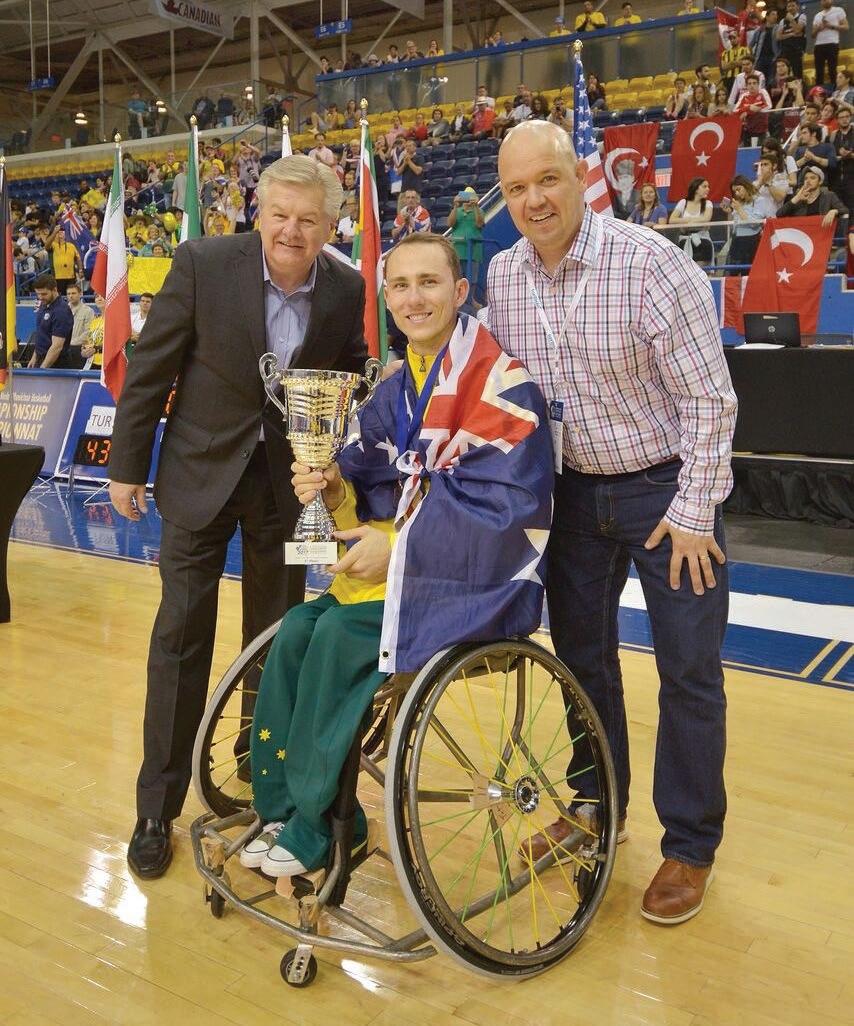
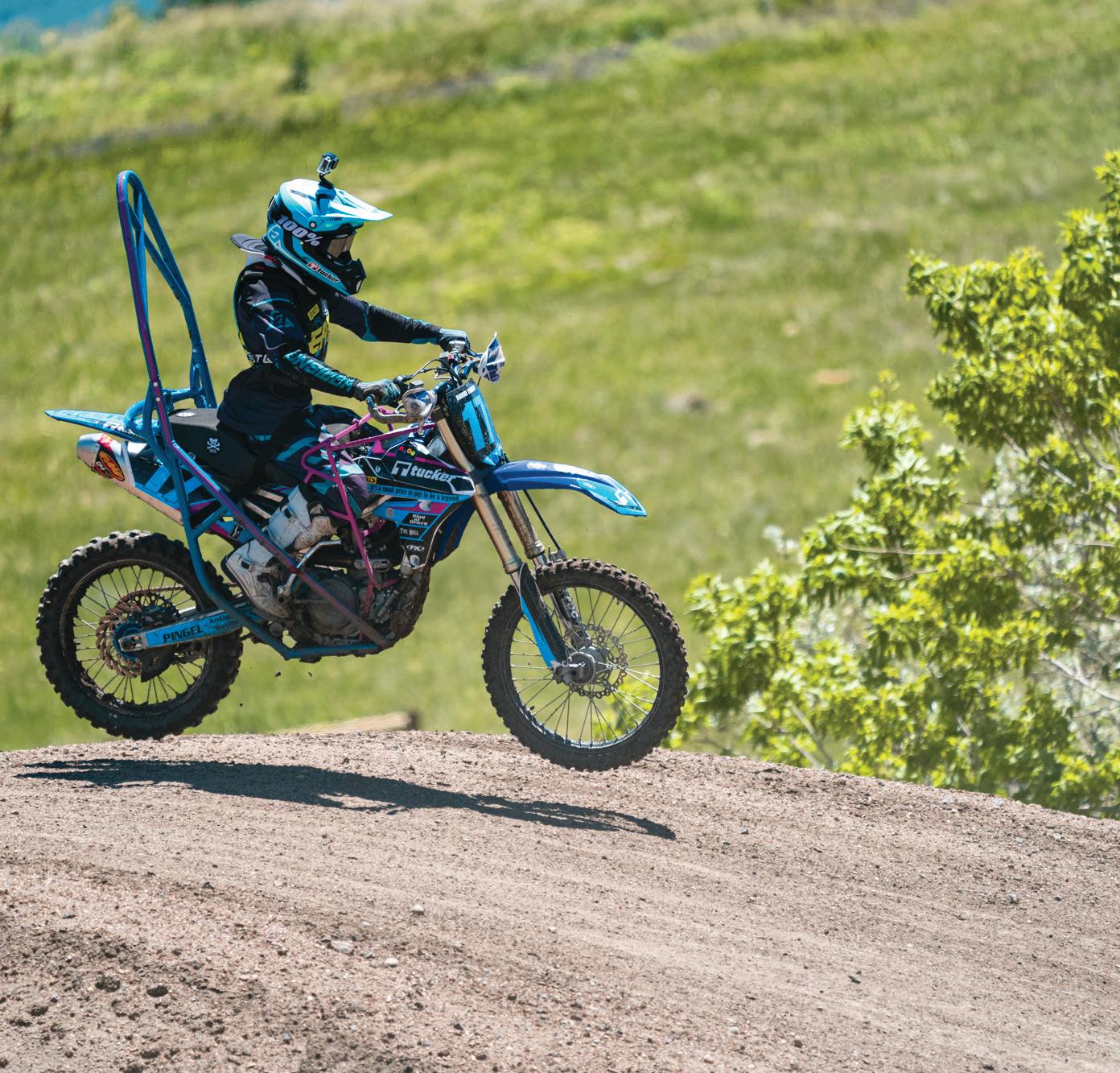
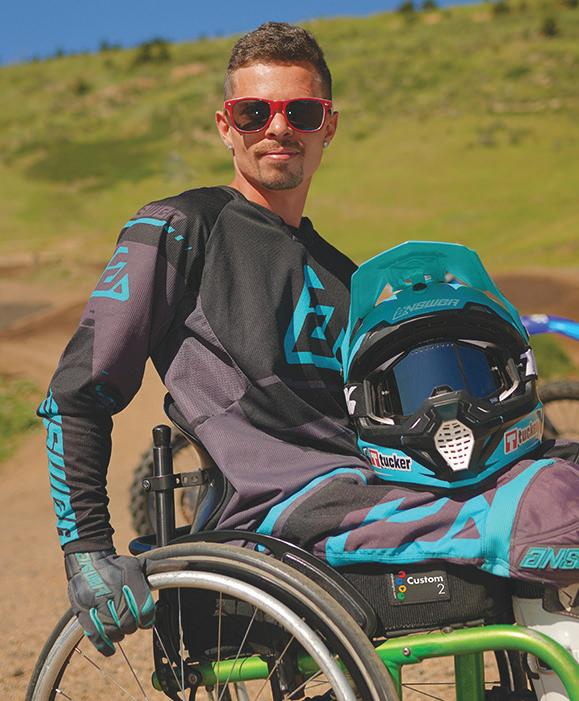
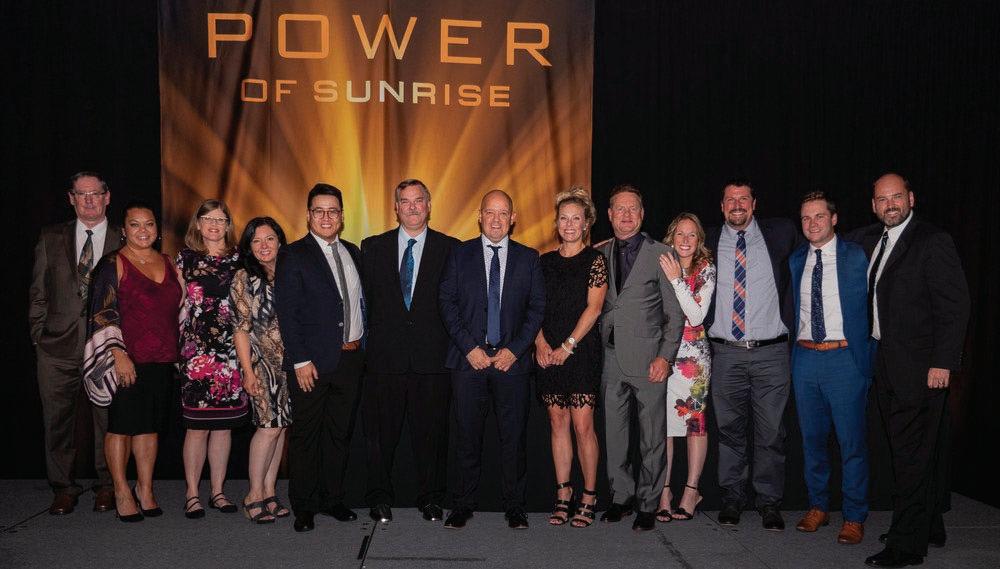
RECOGNIZE THE ABILITY... (CONTINUED FROM PAGE 23)
I also play hockey twice a week. I am 44, so I do not know how long I can continue with that. I also enjoy golf and that is something we do as a family. I love to run and, with my job, I travel quite a bit. I have found that running is a good way to see a town.
There are a couple of things that come to mind. First is the incredible innovation in products and services. We continue to have new technologies, and I am excited to see what the future holds on all levels. Second, we are a tight-knit community. When you are in CRT or high-end rehab, we may be a smaller part of the health care continuum, but we are an essential part. We are professionals who are in this work for the right reasons, and we sincerely do care for those we serve. I am confident that, in the future, we will continue to build upon that and become even stronger.
I am also very optimistic about our future because of organizations such as NRRTS that are working to maintain a high level of professionalism, credibility and ethics. I strongly believe there are many good things ahead for our industry and for our clients.
Mike may be contacted at MIKE.LONGO@SUNMED.COM

Mike Longo is a senior director of commercial operations for Sunrise Medical in Canada.
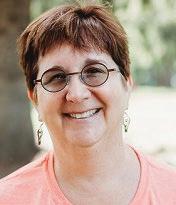
WEDNESDAY, AUGUST 4, 2021 AT 11 AM ET
When to Start to use Seating, Standers and Gait Trainers
Ginny Paleg, PT, DScPT
Sponsored by Prime Engineering
ATP Prep Content, Seating and Positioning, Beginner Level
We can now identify infants at 2 to 6 months who are at highest risk for needing mobility devices and postural management. Knowing this allows us to work closely with families to understand how equipment can be used as affordances for participation.
LEARNING OUTCOMES:
• The participant will be able to describe how the GMA and HINE can be used to identify infants at risk for lifelong sensory motor impairment and how this data could be included in the LMN.
• The participant will be able to describe how the GMFCS Levels can be used to predict equipment needs and how to include this information in the LMN.
• The participant will be able to describe focus on function and participation rather than a more traditional therapy model.
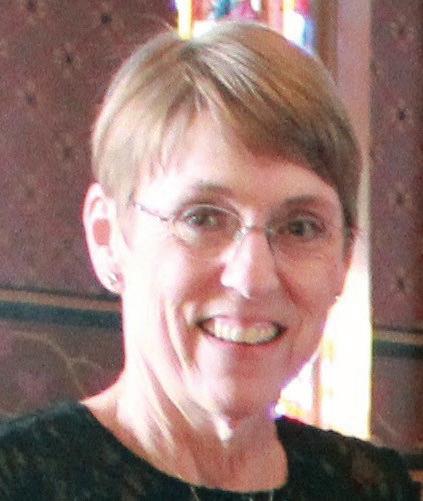
TUESDAY, AUGUST 10, 2021 AT 7 PM ET
Jill Sparacio, OTR/L, ATP/SMS, ABDA
ATP Prep Content, Business Practice, Beginner
The use of person-first terminology should be a simple concept where consistent rules are applied to all situations. However, it is more complicated with many exceptions and “don’ts.” In the current state of political correctness, person-first terminology is applied to so many aspects of life, not just those with disabilities. At times, use of person-first terminology can be found offensive by the individual being referred to, creating a personal preference for the individual being “labeled.” The use of labels can lead to stereotyping that predispose others to certain beliefs and characteristics about that individual. This webinar will provide increased awareness of the importance of person-first terminology and provide some guidelines, both to do and to not do, to insure the correctness of interactions. Although all areas of person-first terminology will be covered, the focus will be on those individuals with disabilities.
LEARNING OUTCOMES:
• The participant will be able to describe the difference between affirmative and negative phrases for describing individuals.
• The participant will be able to identify three commonly recognized exceptions in using person-first terminology.
• The participant will be able to list four techniques to help when describing an individual with a disability.
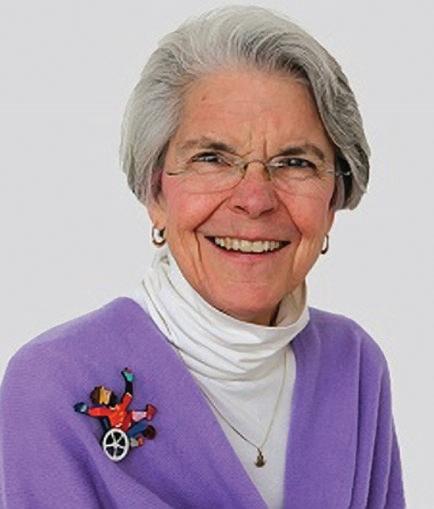
THURSDAY, SEPTEMBER 23, 2021 AT 5 PM ET
Palliative Care and CRT
Jean Minkel, PT, ATP
ATP Prep Content, Seating & Mobility, Beginner Level
The words palliative care are often linked to, confused with and erroneously used interchangeably with hospice care. While both palliative care and hospice care embrace the concepts of patient-centered care based on the patient’s symptoms and goals of care, they differ in the timing of implementation and the need to forego curative treatment. This webinar will review the outcome of the consensus statement, developed by the Consortium of Multiple Sclerosis Centers, on the Comprehensive Palliative Care in multiple sclerosis. By reviewing the statement, participants will learn where Complex Rehab Technology can fill unmet needs being experienced by health care providers and patients who think, ‘There is nothing more we can do,” due to the progression of a disease. As we know, there are TONS of interventions “we” can offer.
LEARNING OUTCOMES:
• Participants will be able to name and discuss the differences between palliative care and hospice care.
• Participants will be able to list the four domains of inquiry when following the principles of palliative care.
• Participants will be able to identify effective communication strategies including the importance of “Ask before Teaching.”

WEDNESDAY, OCTOBER 20, 2021 AT 11 AM ET
Adaptive Tricycles: The Other Wheeled Mobility Device and Therapy Tool Addressing Domains of the International Classification of Function, Disability and Health (ICF)
Dan Judson, registered physical therapist, B.Sc.P.T 1988, Western University, London Ontario
Sponsored by Freedom Concepts
Seating & Positioning, Business Practice, Beginner Level
Cycling is well-established in our culture as a tool for fitness, health, recreation, transportation and achieving independence. We celebrate learning to ride a cycle as a rite of passage and then may continue to reap the benefits for decades. Individuals with physical and/or cognitive challenges that make it difficult to ride safely can benefit from cycling if they are properly positioned and supported on a well-configured cycle. The benefits of cycling can include enhancements to gross motor skills, joint range of motion, muscle strength, bone growth, cardiovascular fitness, visual/spatial orientation, and quality of life for the child and family. This course will examine the clinical benefits and research regarding adaptive tricycles through the lens of evidence-based practice and justify them as a therapy tool to address domains outlined by the ICF: body functions and structures, activity, and participation in the context of environmental and personal factors.
LEARNING OUTCOMES:
• The participant will be able to list at least four benefits related to the ICF afforded to children with a disability from having access to riding an adaptive tricycle.
• The participant will be able to discuss evidence-based research related to the use of adaptive tricycles, and those areas that require further investigation.
• The participant will be better able to construct a letter of justification/medical necessity to support funding requests for adaptive tricycles.
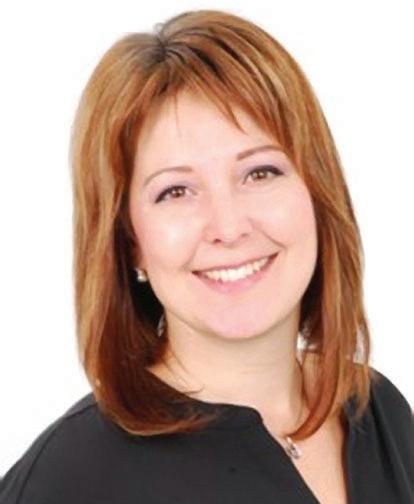
TUESDAY, NOVEMBER 9, 2021 AT 7 PM ET
Infection Prevention and Control
Anna Sokol, RN, MN, BScN, BScKin
Sponsored by Motion Concepts
ATP Prep Content, Medical Terminology, Intermediate Level
The world has recently been shaken by the COVID-19 pandemic. All industries have been affected and have had to change the way people work and provide services. This presentation will focus on the chain of infection transmission and the ways to break that chain in relation to seating and mobility.
Participants will be provided with information related to routine, contact, droplet and airborne precautions. Additional precautions required during the pandemic will be compared with routine practices during nonpandemic times. Special attention will be paid to proper handwashing techniques and methods. Examples and case studies will include components of assessment and decision making related to the use of an appropriate level of protection and personal protective equipment (PPE).. Pathogens will be classified according to the required methods of infection control. Discussion about engineering controls related to the reservoirs of infection will touch on the latest available technologies related to seating and mobility.
LEARNING OUTCOMES:
• The participant will be able to describe the six links of the chain of infection transmission and the ways to break it.
• The participant will be able to identify at least three routines and at least two additional practices recommended during the COVID-19 pandemic.
• The participant will be able to list at least three modes of transmission requiring use of the PPE and additional precautions.

WEDNESDAY, NOVEMBER 10, 2021 AT 11 AM ET
Analysis and Development of the FMA/UDS Mobility Registry
Greg Packer, MS, MBA
Sponsored by US Rehab
ATP/SMS Prep Content, Best Business Practice, Intermediate Level
This course provides current information on general outcomes through the FMA. It gives the principles and applications for utilizing the tool in the current working environment with Complex Rehab Technology users. It also will show current data and performance of how users are tracked and monitored for specific types of outcomes like wounds, falls and hospital remittance.
LEARNING OUTCOMES:
• The participant will be able to identify 10 different ways data from the FMA/Uniform Dataset (UDS) mobility registry can be utilized.
• The participant will be able to identify three iterations of the FMA/UDS tool.
• The participant will be able to describe three benefits of utilizing the registry and one discrete analysis from the data set.
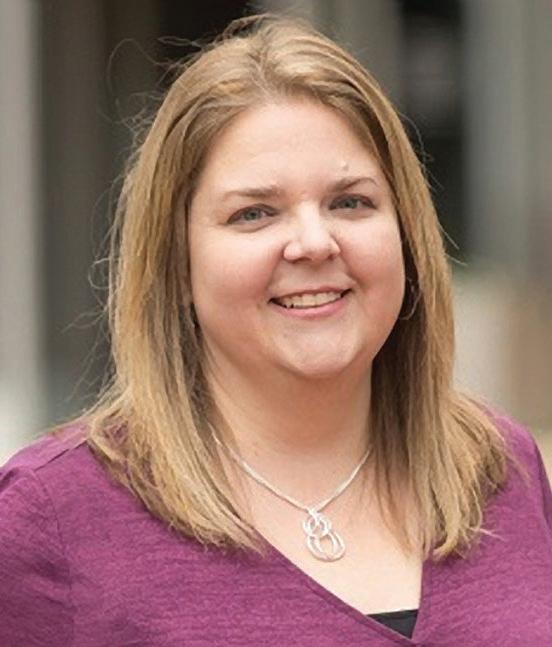
MONDAY, DECEMBER 6, 2021 AT 11 AM ET
Angie Kiger, M.Ed., CTRS, ATP/SMS
Sponsored by Sunrise Medical
ATP/SMS Prep Content, Best Business Practice, Intermediate Level
Has the thought “If only they would’ve told me that, I would’ve recommended a different type of wheelchair,” ever come to your mind when you realize things aren’t going well with a client’s new piece of equipment? What about the thought “They are over the top with the demands,” when you aren’t seeing eye to eye with a caregiver about their loved one’s Complex Rehab Technology (CRT) needs? If you can relate to either of those questions, you have probably experienced other communication breakdowns when attempting to provide the most appropriate CRT for a client and/or the best overall client experience for them. Establishing a solid rapport with a client is vital to not only ensuring improved outcomes but also to your client’s overall level of satisfaction. This educational session will provide participants with strategies to building effective professional relationships with their clients for successful outcomes in the provision of CRT.
LEARNING OUTCOMES:
• The participant will be able to list and describe six key areas of communication to focus on to enhance client-centered communication skills.
• The participant will be able to identify at least three strategies to incorporate into the evaluation process to foster open communication and build rapport with clients.
• The participant will be able to describe three examples of how information gathered outside of the traditional interview method, measurements, and diagnoses can impact the selection process for the most appropriate complex rehabilitation technology for a client.

TUESDAY, DECEMBER 7, 2021 AT 7 PM ET
Theresa Marie Crytzer, PT, DPT, ATP
ATP/SMS Prep Content, Medical Terminology, Seating & Positioning, Intermediate Level
Cardiopulmonary function, particularly in people with neurological disabilities, is often compromised. The extent of compromise depends on physiological factors including neurological level and denervation of the muscles of respiration and the presence of scoliosis and kyphosis. Wheelchair positioning and mobility can impact cardiopulmonary function and chest wall expansion. Measurement of cardiopulmonary function is important to consider in therapist evaluation and to include in documentation for wheelchair seating. Adaptive exercise and daily physical activity can improve cardiopulmonary function. This course will provide a review of cardiopulmonary impairments and secondary conditions associated with neurological diagnoses, examine how outcome measures can support clinical judgment and inform letters of medical necessity, provide an overview of the impact of positioning and seating on cardiopulmonary function, and discuss options for improving cardiopulmonary fitness in wheelchair users.
LEARNING OUTCOMES:
• The participant will be able to discuss impairments associated with people with neurological conditions and secondary conditions that can impact morbidity and mortality.
• The participant will be able to review five cardiopulmonary outcome measures and ways that they can support clinical decisionmaking in wheelchair prescription.
• The participant will be able to examine the impact of wheelchair positioning and seating cardiopulmonary function.
• The participant will be able to examine the impact of physical activity on cardiopulmonary function and options for improving cardiopulmonary fitness in wheelchair users.

In a time of drastic change, it is the learners who inherit the future. We appreciate our learners’ willingness to adapt to the ever-changing sphere of Complex Rehab Technology, even before COVID hit our world.
We have over 100 on-demand webinars and CEU articles in our library that cover a variety of topics on seating and positioning, medical terminology, ethics, funding and best business practice.
The education program awarded over 1,356 CEUS from August 2019 to August 2020 — that equals 13,560 hours of education!
The numbers are proof that we are meeting one of our education objectives at NRRTS — to bring you quality education at an affordable price. Registrants receive education at no cost, as a benefit. FONS pay half-price and others only $45 per course!
We’ve made access to education affordable, and NOW, even easier for our learners!
NRRTS is accredited by the International Association for Continuing Education and Training (IACET). NRRTS complies with the ANSI/IACET Standard, which is recognized internationally as a standard of excellence in instructional practices. As a result of this accreditation, NRRTS is authorized to issue the IACET CEU.
IACET CEUs are accepted by NRRTS for the RRTS® and CRTS® credentials and by RESNA for the ATP and SMS certification renewal. The National Board for Certification in Occupational Therapy Inc. (NBCOT) accepts the IACET CEUs as PDUs for the American Occupational Therapy Association (AOTA). State occupational and physical therapy associations also accept IACET CEUs for license renewal.
Written by CINDI PETITO, OTR/L, ATP, CAPS, CEAC

NRRTS is pleased to offer another CEU article. This article is approved by NRRTS, as an accredited provider, for .1 CEU. After reading the article, please visit http://bit.ly/ CEUARTICLE to order the article. Upon passing the exam, you will be sent a CEU certificate.
Over the past four decades, health care professionals and policymakers who provide services to older adults and people with disabilities have placed great emphasis on conceptualizing aging in place as an attainable and sustainable goal. While research heightened the awareness of the growing number of people over 65 years of age, a shift in priorities and resources toward deinstitutionalization resulted in payment policies and programs that reflect a paradigm shift away from long-term facility care as the most likely alternative for housing and to aging in place in the home. In 2018, the Centers for Disease Control and Prevention (CDC) reported one in four adults live with some type of disability, and two in five adults age 65 years and older have a disability (CDC, 2018). With much focus on the aging population, we cannot lose sight that disability impacts people of all ages.
This article will address the transition from aging in place to living in place as well as present specific strategies that can be used to help people successfully stay in their homes for as long as possible.
The evolution of aging in place dates back to the early1980s; however, heightened awareness was not until a decade later in 1990. Several research and book publications in the 1990s created widespread awareness of the potential impact on government-funded health care including acute and long-term care, income, work and retirement patterns late in life, and quality of life. Also, residential patterns and living arrangements were of concern for policymakers (Carr, Pemmarazu, & Rice, 1996). The availability of family members to provide care was an important factor in the lives of elders. From 1990 to 2010, an aging-in-place movement emerged as future socio-economic trends spawned uncertainties about the health and disability of seniors living in America.
At the forefront of research in older adults is fall prevention. As the aging population increases so do the health care dollars spent on falls and fall-related injuries. In 2018, the CDC reported falls as the leading cause of injury among adults age 65 and older. The average cost of treating a

nonfatal fall per year was $50 billion paid by Medicare, Medicaid and private insurances — 32,000 traumatic falls resulted in death, and those age 85 and older were at highest risk of fatality (CDC, 2020) (see Figure 1). Seniors and people of all ages with disabilities are at risk for falls. Included in our aging population are those who have more than 20 years with a disability related to a permanent injury. For example, people with spinal cord injuries (SCI), traumatic brain injuries (TBI), and other complex neurological diagnoses are living longer. Those who have lived with a disability since early in life are also aging and face the same risks in falls. Furthermore, caregivers of disabled children and adults are included in the number of seniors who are at risk for falls. Today, it is not uncommon to treat an aging parent for a fall-related injury who is also the primary caregiver for an aging adult-child with a disability.
The term aging in place has been widely used in research articles, public policy documents, national health care websites, nonprofit organizations, business names and more. The term has evolved over decades and is not consistently defined across health care disciplines and service providers. Below are examples of the variations and evolution of the definition of aging in place in gerontology and health care publications throughout the past 40 years (Rogers, et al., 2020).
CONTINUED ON PAGE 32
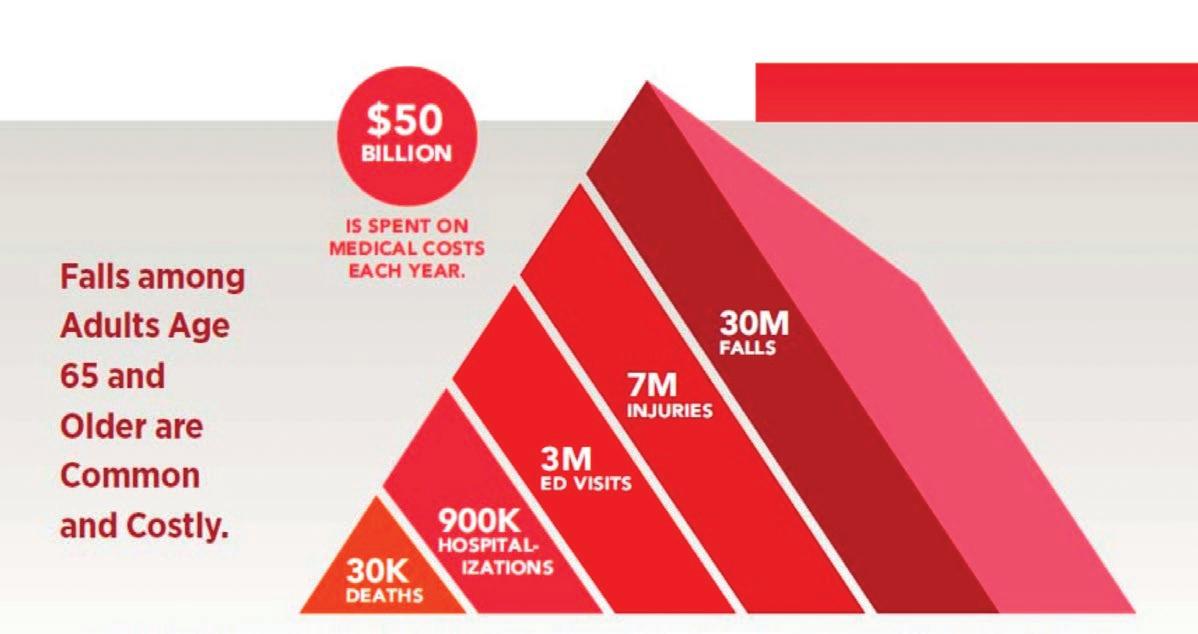
AGING AND LIVING IN PLACE...
(CONTINUED FROM PAGE 31)
“… aging in place is not only a demographic or political issue but also an emotional and lived experience that inherently involves the broader place or residence” (Coleman & Kearns, 2015, p. 206).
“This aging-in-place philosophy means residents will have to relocate to a new setting less often” (Chapin & Dobbs-Kepper, 2001, p. 43).
“The concrete strategy of ‘aging in place’ is to provide the elderly and the disabled with care services in their own community” (Chen, 2008, p. 183).
“The demographic processes involved in the numerical growth or decline of the elderly population over a fixed time period include both net migration and natural increase” (Lichter et al., 1981, p. 481).
There are several organizations such as Leading Age, AARP, Senior Living and the National Aging in Place Council (NAIPC) that define aging in place and connect seniors to various networks and resources providing services in homes and communities. The NAIPC describes aging in place as “the act of living at home as long as possible as you age while getting any services or assistance you need to remain at home.”
Remaining at home as long as possible and even until end of life is a desirable concept; however, recent studies report that aging in place has disadvantages seniors must consider before deciding to stay in their current homes. Aging adults in their 60s and 70s may need to relocate to downsize, live in a different climate or be nearer to family. Other seniors may need to invest in a continuing care retirement community to meet both current and future needs. In some cases, older adults may not be able to remain in their current home due to illness or injury, finances, physical limitations or cognitive challenges.
Many seniors and people with disabilities have difficulty leaving their home due to physical limitations and/or lack of accessibility. This leads to isolation and lack of social interaction and participation. This person may lack adequate finances to pay for private duty care.
Another important consideration is the condition of the residence and the costs related to cleaning and
upkeep. Seniors and people with disabilities may find themselves having to choose between paying out of pocket for personal care in the home and paying for home repairs needed to live safely in their environment. For example, older homes that have deteriorating roofs, inadequate heat and air conditioning, damaged flooring, and malfunctioning plumbing and electrical systems can pose serious health and fire safety concerns. Unsafe egresses such as damaged or cracked sidewalks and driveways, poor lawn maintenance, and inadequate lighting can create fear of falling and safety hazards leading to confinement and isolation.
Many seniors or people with a disability rely on a significant other as caregiver. If this caregiver experiences their own aging, changes in health and function, and even death, new assistance is required. Successful aging in place does not “just happen.” There must be a comprehensive and well-thought-out financial plan for healthy independent living during adulthood after retirement years.
As research continues to revolve around the aging population in the United States and around the world, how do adults view aging in place, and is this concept acceptable? AARP stated in 2014 that nearly 90% of people age 65 and older wanted to stay in their homes as they age. However, AARP’s most recent 2018 survey of adults age 50 and over reveals that only 76% want to remain in their homes as long as possible (Binette and Vasold, 2020). The shift in the desire to age in place may be related to several factors: (1) the shortage in direct care workers in the U.S., (2) family caregivers being stretched too thin leading to caregiver burnout, and (3) the increasing emphasis on wellness and prevention.
Over the past 10 years, as Americans are experiencing both the advantages and disadvantages of aging in place, this term has been taken to a new level - living in place. The Living in Place Institute was established in 2013 and has become popular because it removes the negative perceptions of aging and end of life, such as the doom and gloom stigma of institutional style bathrooms and hospital equipment. Aging in place
AGING IN PLACE IS DIRECTLY RELATED TO SENIORS OVER 65 AND FALL PREVENTION, WHEREAS LIVING IN PLACE FOCUSES ON ACCESSIBLE HOMES FOR 100% OF THE POPULATION REGARDLESS OF PHYSICAL, COGNITIVE OR VISUAL IMPAIRMENTS.
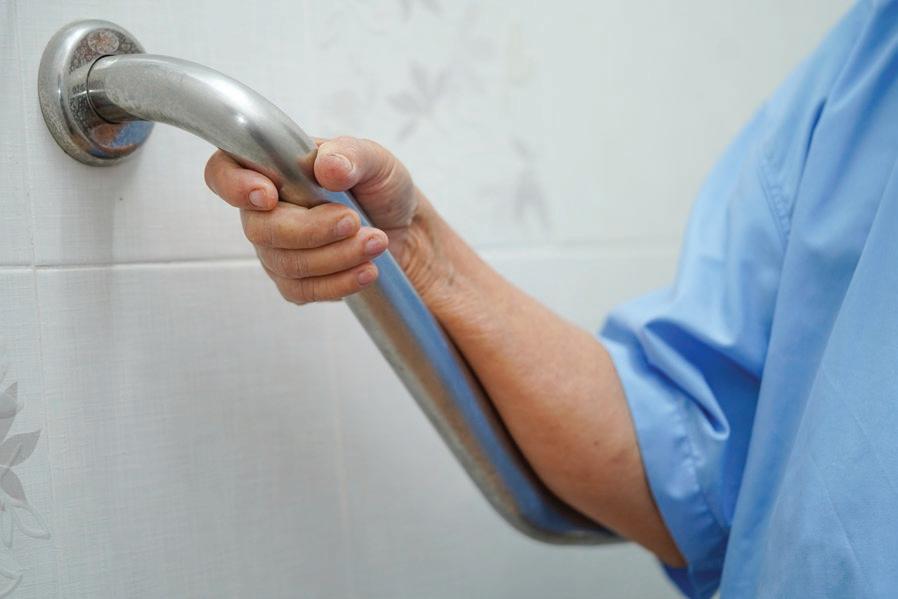

is directly related to seniors over 65 and fall prevention, whereas living in place focuses on accessible homes for 100% of the population regardless of physical, cognitive or visual impairments. Key principles of living in place include safe, accessible, healthy and comfortable homes for all ages (Living in Place Institute, 2021). The living in place concept is similar to universal design (UD), which is based on seven universal design principles that work to make environments, services and products usable by the highest number of people.
Whether considering aging in place or living in place, the home accessibility service delivery model uses a team approach that spreads across both health care and housing sectors. The home accessibility team usually includes the home dweller, family and caregivers, home remodelers and building professionals, health care professionals, architect and interior design specialists, referring organizations, and funding sources.
When completing home accessibility and home safety assessments, home accessibility specialists must answer two common questions before making recommendations:
(1) Will the access products or home modifications make the home “look handicapped” or “look institutional?” and (2) will insurance cover the products and services?
INCORPORATING DESIGN CONCEPTS THAT MEET THE INDIVIDUAL, CULTURAL, AND SOCIAL NEEDS OF AGING ADULTS AND PEOPLE WITH DISABILITIES MAINTAINS CONNECTION AND MEANING TO THEIR HOME ENVIRONMENT.
In the United States, it is common for clinicians and home accessibility specialists to use the Americans with Disabilities Act (ADA) standards as a standard of practice when making home safety and aging in place recommendations. However, ADA applies to places of public accommodation and commercial facilities. These standards do not extend to the home environment and so cannot be enforced. Strictly using ADA standards when making home accessibility and safety recommendations can lead to “minimal compliance” practice, which fits the person to a modified environment and is based on ADA standards alone. This practice potentially creates barriers to function and hinders independence for aging adults and people with disabilities. Furthermore, minimal compliance practice can lead to environments that look institutional and can create barriers for aging spouses, caregivers and other family members who reside in the modified home. For example, a grab bar installed on a wall next to the toilet at the height of 33 to 36 inches (per ADA guidelines) may be too low for a person 6 feet 5 inches tall or too high for a person who is 5 feet tall with limited shoulder range of motion and reach (see Figure 2).
Aesthetics is a very important aspect in how individuals will engage and emotionally connect with their environments. When the accessibility design is disguised within the environment, the disability essentially becomes invisible. For example, standard grab bars are stainless steel and are usually perceived as institutional to most homeowners; however, several manufactures design grab bars that are available in different styles and colors and are “disguised” as towel racks, toilet paper holders and shelving for bathing products (see Figure 7). Another example is a landscape ramp design which includes adding grassy landscape and garden designs with sloped concrete rather than using traditional wood or aluminum ramping. The landscape ramp design becomes a part of the exterior design of the home and not an obvious added ramp product (see Figure 3).
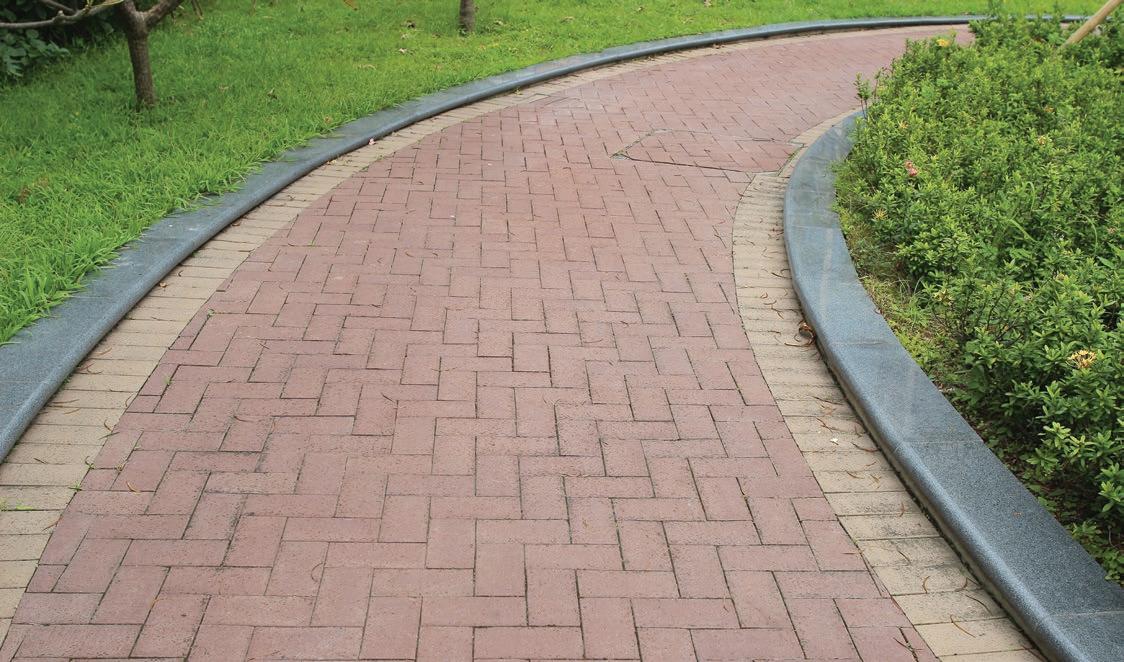
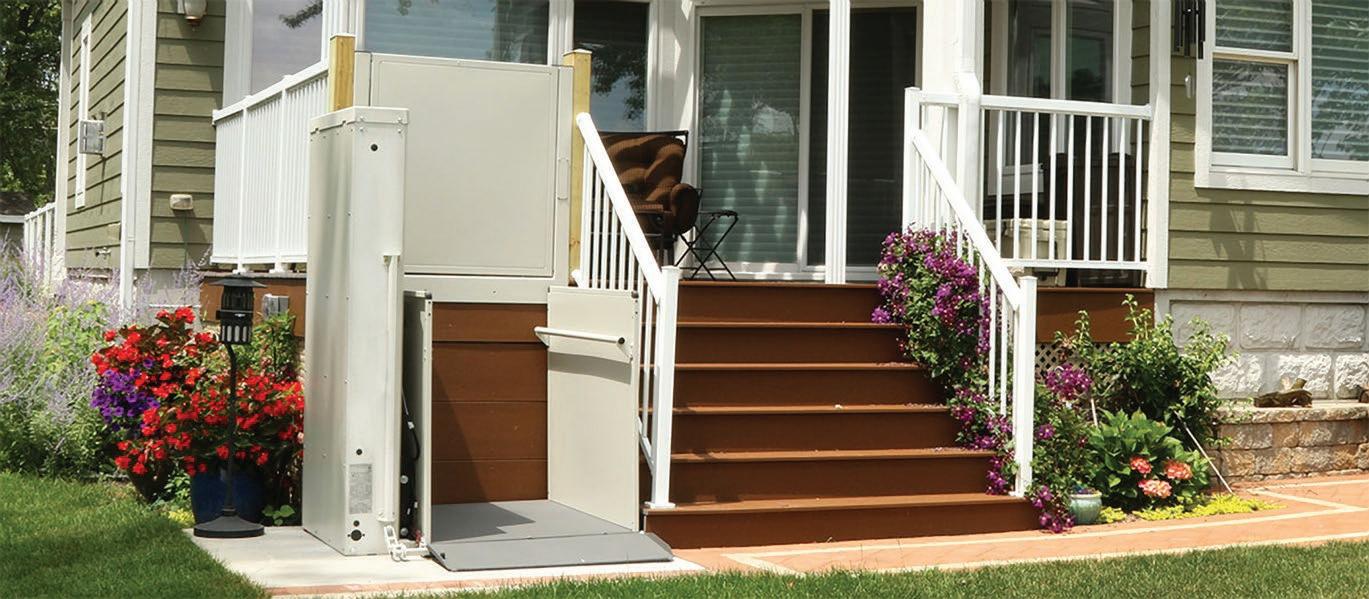
Best practice for home accessibility includes, but is not limited to, measuring the person and their reach ranges, the environment and any equipment used (occupied) in the home during the activity or task before making recommendations. ADA may be used as a guide; however, clinicians and home accessibility specialists must avoid minimal compliance practices. Incorporating design concepts that meet the individual, cultural and social needs of aging adults and people with disabilities maintains connection and meaning to their home environment. By individually designing aesthetically pleasing home environments, which are also safe and functional, clinicians and home access specialists will create environments that promote health and wellbeing throughout the lifespan.
There is a lot of confusion around Medicare, Medicaid and commercial insurance benefits and coverage of access products needed to remain safe in homes. Medicare beneficiaries have difficulty understanding why Medicare will cover Durable Medical Equipment (DME) and Complex Rehab Technology (CRT), which assist them in accessing their home environment, but not cover other products like ramps and grab bars. While traditional Medicare does not cover home accessibility products or structural modifications such as ramps, stairlifts, grab bars or curbless showers, there are Medicaid and Home and Community Based Services (HBSC) state programs that offer covered benefits of home accessibility and home modifications. These programs and covered benefits vary by state.
The most recent addition for coverage of home modifications includes a Medicare Advantage (MA) Supplemental Benefit federal rule, which became effective August 3, 2020, called the Special Supplemental Benefits for the Chronically Ill (SSBCI) (§ 422.102). Individuals must meet three criteria to qualify for the SSBCI benefit: (1) Has one or more comorbid and medically complex chronic conditions that are life-threatening or significantly limit the overall health or function of the enrollee; (2) Has a high risk of
hospitalization or other adverse health outcomes; and (3) Requires intensive care coordination.
Clinicians and home accessibility specialists should have knowledge of the federal and state programs in order to discuss available funding options with individuals seeking home safety recommendations and accessibility products. Offering this knowledge will help individuals make informed decisions about out-of-pocket expenses and financial planning for the future.
The most common home accessibility products and structural modifications aging adults need to remain safe, independent and healthy in their homes will be funded either out-of-pocket or by state Medicaid programs. These will include ingress and egress, stairs, interior doors, bathrooms, bedrooms and kitchens.
We all need to enter and leave our home, including in various lighting conditions, weather conditions and even during an emergency. People with mobility limitations of all ages and aging adults ideally need two safe means of ingress and egress (in case one is not accessible in an emergency, such as a fire) that have adequate lighting and accessible wheeled mobility space. This means that two doorways must be accessible in width and ramped, as needed.
Thresholds: Whether individuals use canes, rolling walkers or wheelchairs door thresholds and ramp transitions should have no more than ¼ inch rise. Door thresholds and ramp transitions with more than ¼ inch rise present fall risks for those who have balance impairments or use ambulatory devices. A higher threshold may be difficult for a person propelling a manual wheelchair to overcome. Ramps: A wide array of ramp styles and colors are available to match exterior home designs including threshold, wood and aluminum options. Ramps used by end users who use an ambulatory device or self-propel a manual wheelchair should follow ADA standards.

When a power wheelchair is used or a caregiver is pushing a manual wheelchair, the grade of the ramp can often be steeper, as required by the environment.
Platform lifts: In situations where landscapes are limited or individuals cannot safely and functionally negotiate long ramp runs, vertical platform lifts (VPL) should be considered. There are advantages to VPLs, which overcome the potential challenges of large ramps. For example, if a wheelchair end user has paraplegia and does not have the upper body strength to self-propel their manual wheelchair up a long 25-foot ramp run to accommodate a 25-inch rise to their front entrance, a VPL can offer a safer and more long-term functional solution. One long-term benefit to recommending a VPL includes maximizing independence throughout their lifespan as shoulder injury risk can increase from overuse (see Figure 4).
Steps and Stairs
Stairs inside and outside the home present challenges for individuals as they age. The individual may require access to multiple levels of the home. A ranch style home may also be indicated or a home with a bedroom and accessible bathroom on the main level. Handrails on both sides of staircases and adequate lighting located at both the bottom and top of the stairs are usually the first options recommended for safely negotiating steps and stairs for people who can still ambulate. When considering stairlifts, clinicians and home accessibility specialists must assess an individual’s ability to transfer on/off stairlift seats and maintain upright sitting balance before making their final recommendations. In addition, if aging individuals have caregivers who assist in their mobility and transfers throughout the day, the caregiver’s ability to safely assist in transfers is vital to ensuring a stairlift, or any access product, is the safest recommendation to meet accessibility needs. In situations where fall risks are a concern or safety is compromised by the use of a stairlift, alternative products should be considered such as vertical platform
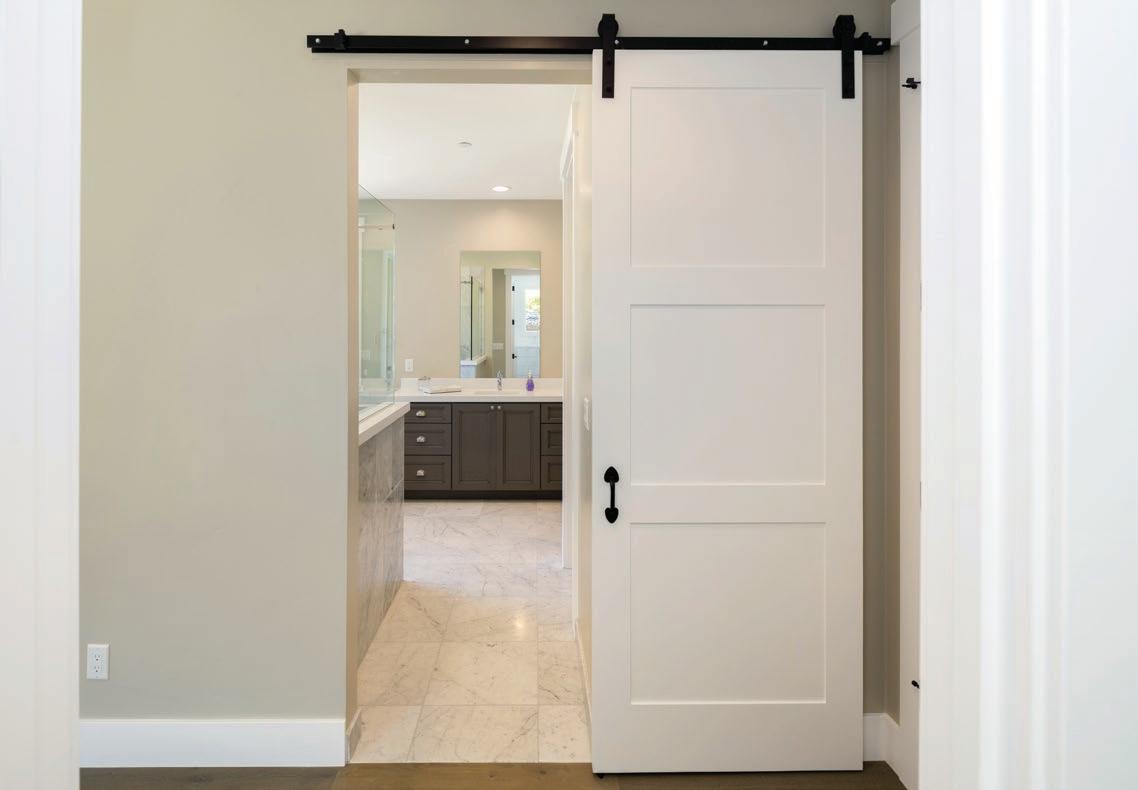
lifts (VPL), incline platform lifts, or residential elevators. Mobility equipment, such as a walker or wheelchair, must be available on all levels of the home. This means that the lift may need to accommodate this equipment.
Doors and entryways
People using mobility equipment must be able to get through doorways with adequate clearance. The interior doors and entryways of homes range from 21 inches to 30 inches in width, inside the door frame. Exterior doors have a opening width of 32 inches to 34 inches. When a door is fully open, it can take up 1 inch to 1 ½ inches of the user space inside the door frame, creating barriers to accessing bedrooms, bathrooms, laundry and kitchen areas, and other rooms in a home. Standard rolling walkers have an overall width of 22 inches to 24 inches, and standard manual or power wheelchairs (with an 18” seat width) will have an overall width of 25 inches to 30 inches rim-to-rim (depending on the wheelchair manufacturer and configuration). Several options can widen a doorway and increase accessibility. Swing-clear (or offset) hinges reclaim that 1 inch to 1-½ inches to the user space by allowing the door to clear the inside door frame when fully open. Doorknob gobblers allow doorknobs to recess into the wall, allowing the door to be opened fully without wall damage. Structural changes include installing a wider door, pocket doors, French doors or barn doors. Barn doors are a popular choice because these can accommodate large door frames without requiring the floor space for larger swing doors or wall space for pocket doors. Barn doors now come in single and double door styles and can accommodate most home interior designs (see Figure 5).
Bathrooms are not only the most common area where falls occur, but also where the costliest mistakes are made. Clinicians and home accessibility specialists must consider the short-term and long-term self-care needs and recommended accessibility products and structural changes in bathrooms that will meet individual’s safety and functional needs for a lifetime. Bathroom modifications may be required for bathing, toileting and other grooming/hygiene activities.
CONTINUED ON PAGE 36
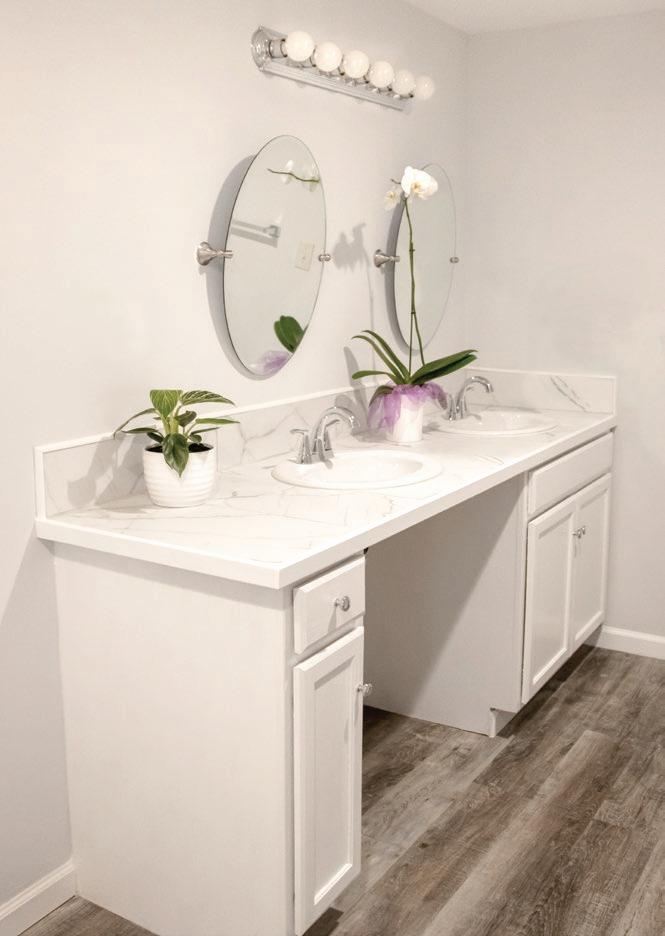
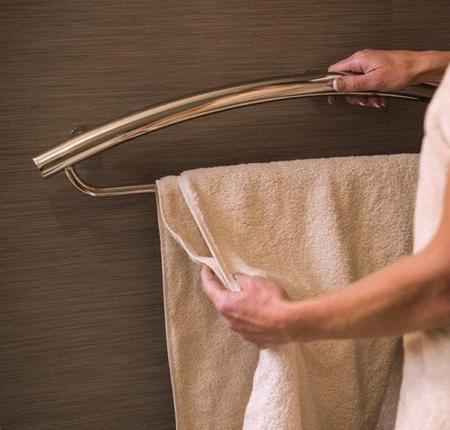
AGING AND LIVING IN PLACE... (CONTINUED FROM PAGE 36)
Bathing. If the aging adult does not have funding for a tub-shower modification or installation of a levelentry (curbless) shower, there are low-cost alternatives to meet their current needs in the short term. These include a wide array of grab bar styles and configurations, super-poles, flip-up toilet rails, sliding shower chair systems and tub cutouts. In the past 20 years, the bathroom accessibility market has grown significantly. Manufactures such as Moen and Kohler now offer a wide array of stylish bathroom accessibility products online and in stores such as Lowe’s and Home Depot. Bathroom modifications are costly and aging adults living on limited incomes will rely on home accessibility specialists to help them make the best choices to age in place. Installing a step-in prefabricated shower unit or tile shower with a lip to replace the tub-shower system may not meet individuals’ safety and functional needs as they age. For example, if the individual has multiple health issues and comorbidities or a progressive neuromuscular disease, which may warrant the use of a wheeled mobility device in the future, recommending a level-entry (curbless) shower must be discussed to avoid having to modify the bathroom a second time. The cost of removing the tub-shower and installing a prefabricated shower unit or tile shower can range from $10,000 to $30,000. Wet rooms for small bathrooms with slip-resistant tile patterns or textures is one way to reduce falls by eliminating multiple transfers. Wet rooms include a curbless shower area and waterproofing, which extends outside the shower and throughout the entire bathroom floor. Walk-in tub manufacturers market tubs for fall prevention; however, aging adults are still required to step up or transfer into and out of the tub, which is a fall risk. Too often, walk-intubs have to be replaced with curbless showers within 5 to 10 years because aging individuals can no longer safely transfer themselves, even with the assistance of a caregiver.
When individuals require a caregiver to assist with bathing, showers must be designed to accommodate the caregiver’s ability to safely carry out the bathing task. This will include where they stand to assist with bathing and their reach ranges. However, home accessibility
specialists should avoid designing over-sized showers that will require the caregiver to stand inside the shower with the individual because this creates falls risks for the caregiver.
Some other bathroom safety recommendations include, but not limited to:
• Adequate lighting throughout the bathroom and shower area, without glare or shadows.
• Color contrast for aging eyes and those with significant visual impairments.
• Water controls and hand-held shower placement that is easy to reach and accommodates all people using the shower.
• Toilet heights and grab bars that accommodate safe transfers and reach ranges.
• Accessible wall-mounted sinks, floating vanities and vanity lighting.
• Tilting vanity mirrors to accommodate people who stand and sit to groom. (see Figure 6)
• Touchless soap dispensers and faucets.
• Grab bar towel racks. (see Figure 7)
Falls that occur in the bedroom are usually the result of difficulty with bed transfers, reaching dresser drawers and closets, or trip hazards due to flooring or door threshold transitions. Low lighting can also be problematic for aging adults with visual impairments. In older homes, rooms with small windows and limited electrical outlets for additional lighting cause low light situations that create trip and fall hazards during early morning and evening dressing routines. A well-lit walkway from the bed to the bathroom can be accomplished using night lights or motion detector lighting in areas of the home with low light and can be helpful during nighttime trips to the bathroom.
The flooring may be cluttered with excess furniture and present with limited space for walkers and wheelchairs. Damaged flooring, high threshold flooring transitions, area rugs and thick-pile carpet all create trip and fall hazards that must be addressed. Flooring manufacturers offer both tile and durable, waterproof vinyl flooring that is textured for slip resistance. Tile and vinyl flooring come in an array of colors and patterns to
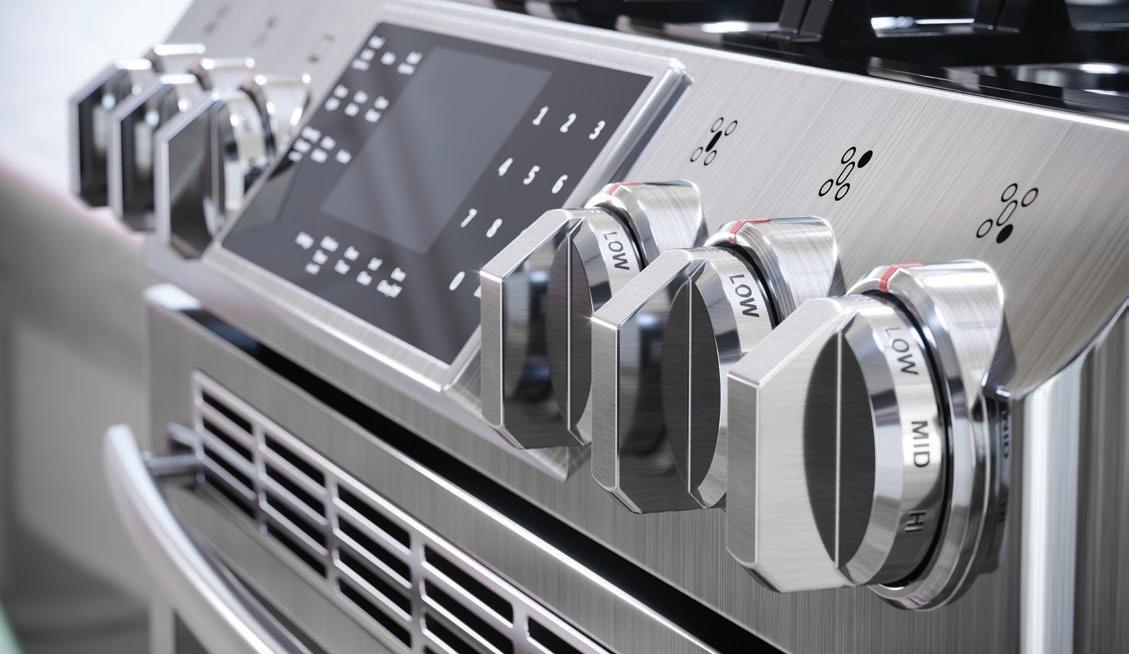
match existing home interior designs. Vinyl flooring such as DuraLife offers products that are scratch-resistant for those who use manual and power wheelchairs.
Clothes closets may be cluttered with excess clothes and used for storage in older homes with limited closet space. Clinicians and home accessibility specialists need to address cluttered, dark closets that impair reach ranges. Aging adults or wheelchair end users with balance impairments are at high risk for falls when reaching outside their base of support to access hanging clothes. Common solutions include adding lighting and lowering shelves for hanging clothes within safe reach ranges.
Kitchens and dining areas
A safe and healthy home includes the ability to access the kitchen and prepare meals. Aging adults and people with disabilities who are aging or living in place need proper nutrition to stay healthy. Clinicians and accessibility specialists can offer a wide array of no-cost and low-cost options for safely accessing cabinets and appliances needed for preparing and cooking meals. Solutions may include moving the most common dishes, cookware and food to lower shelving and cabinets and moving the microwave to a lower countertop height (or even use a microwave drawer) that is easily accessible from a sitting or standing position. Microwaves over the stove present safety hazards when aging adults with balance deficits reach hot plates above shoulder height. Other solutions include buying smaller containers of milk and other foods to reduce the weight of products kept in the refrigerator. Declining upper extremity and grip strength and joint range of motion related to aging decreases safe reach ranges and can create fear of falling.
Common kitchen modifications for aging in place and living in place includes pull-down shelving in upper cabinets and pull-out shelving in lower cabinets, pantries and refrigerators. Appliances can be replaced with accessible appliances, which meet the functional needs of all people living in the home. These include stoves with front panel controls and refrigerators with bottom freezers (see Figure 8). When cooking on a stovetop is no longer a safe option,

convection microwaves and toaster ovens may be a solution to cooking small meals. Existing kitchen sinks can be modified and lowered for safe access for those who sit and stand to wash dishes. Opting to install shallow kitchen sinks helps individuals who must sit at the sink and have limited reach when washing vegetables.
As we continue this aging in place and living in place journey, health care professionals, accessibility specialists, home builders and policymakers must come together and continue to research and advocate for the needs of our aging population and people with disabilities. Through these efforts, we will help them live safely in their environments with a quality of life that supports health and well-being throughout their lifespan.
RESOURCES:
1. BINETTE, J. AND VASOLD K . (2020). AARP RESEARCH: 2018 HOME AND COMMUNITY PREFERENCES: A NATIONAL SURVEY OF ADULTS AGES 18-PLUS. RETRIEVED FROM, HTTPS://WWW.AARP.ORG/RESEARCH/TOPICS/ COMMUNITY/INFO-2018/2018-HOME-COMMUNITY-PREFERENCE.HTML
2. CARR, D., PEMMARAZU, A., AND RICE, D. (1996). IMPROVING DATA ON AMERICA’S AGING POPULATION. RETRIEVED FROM, HTTPS://WWW.NCBI. NLM.NIH.GOV/BOOKS/NBK233241/
3. CDC (2018). DISABILITY IMPACTS ALL OF US. RETRIEVED FROM, HTTPS://WWW.CDC.GOV/NCBDDD/DISABILITYANDHEALTH/INFOGRAPHICDISABILITY-IMPACTS-ALL.HTML#:~:TEXT=61%20MILLION%20ADULTS%20 IN%20THE,HAVE%20SOME%20TYPE%20OF%20DISABILITY.
4. CDC (2020). COST OF OLDER ADULT FALLS. RETRIEVED FROM, HTTPS://WWW.CDC.GOV/HOMEANDRECREATIONALSAFETY/FALLS/DATA/ FALLCOST.HTML#:~:TEXT=FALLS%20AMONG%20ADULTS%20AGE%20 65,SPENT%20RELATED%20TO%20FATAL%20FALLS.
5. LIVING IN PLACE INSTITUTE (2021). LIVING IN PLACE INSTITUTE - FREQUENTLY ASKED QUESTIONS. RETRIEVED FROM, HTTPS:// LIVINGINPLACE.INSTITUTE/PROFESSIONALSFAQ#2. SLIVINGINPLACEANOTHERNAMEFOR#34; AGINGINPLACE#34;AND#34;UNIVERSALDESIGN#34; 6. ROGERS, RAMADHANI, MARCH, HARRIS. (2020). DEFINING AGING IN PLACE: THE INTERSECTIONALITY OF SPACE, PERSON, AND TIME, INNOVATION IN AGING, VOLUME 4, ISSUE 4. HTTPS://DOI.ORG/10.1093/ GERONI/IGAA036
CONTACT THE AUTHOR
Cindi may be reached at CINDI.PETITO@NSM-SEATING.COM
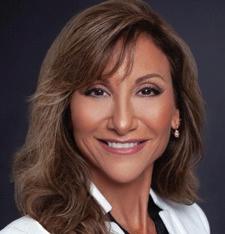
is a 25-year practicing occupational therapist and wheeled mobility and home modifications specialist. She is the centralized operations manager for accessibility and workers compensation programsat National Seating & Mobility.
Written by: ANDREA VAN HOOK, EXECUTIVE DIRECTOR, RESNA
RESNA is proud to announce we will be presenting an entire track of valuable education sessions at this year’s International Seating Symposium, October 28 – 30, 2021. We are pleased to partner with ISS to offer sessions that focus on technology convergence and standards.
Everyone working in assistive technology knows how technology convergence is greatly affecting careers and jobs. It is one reason the Assistive Technology Professional Certification exists, to encourage professionals to know about different areas of assistive technology and when situations demand it, refer to other ATPs with specific knowledge. If you work in seating and mobility, you understand that you need to know “more than wheelchairs.” In addition to knowing about the range of different technologies, understanding standards and research-driven best practices help all AT professionals find technology solutions for their clients that work and provide the best outcomes.
KNOWS HOW TECHNOLOGY CONVERGENCE IS GREATLY AFFECTING CAREERS AND JOBS. IT IS ONE REASON THE ASSISTIVE TECHNOLOGY
PROFESSIONAL CERTIFICATION EXISTS, TO ENCOURAGE PROFESSIONALS TO KNOW ABOUT DIFFERENT AREAS OF ASSISTIVE TECHNOLOGY AND WHEN SITUATIONS DEMAND IT, REFER TO OTHER ATPS WITH SPECIFIC KNOWLEDGE.
The presenters of these sessions are RESNA members who have years of experience in their chosen area of assistive technology. The RESNA Track sessions include:
• AAC for the ATP, presented by Adina Bradshaw, MS, CCC-SLP, ATP, Shepherd Center
• ATP Certification and Ethics for the New Era –Mike Seidel, ATP, CRTS®, Numotion; Carmen DiGiovine, PhD, ATP/SMS, RET, The Ohio State University; Julie Piriano, PT, ATP/SMS, Quantum Rehab
• RESNA Wheelchair Transportation Safety Standards – Nicole Orten, MS, and Miriam Manary, MSE, University of Michigan Transportation Research Institute
• Seating and Mobility Technology: What’s Annoying and What’s Fixable – Gerry Dickerson, ATP, CRTS®, National Seating and Mobility
• Smart Home Makeover Disability Edition –Antoinette Verdone, MSBME, ATP, ImproveAbility
• Start with the Client: Increasing Your Value Through Client-Centered Practice – Weesie Walker, ATP/SMS, NRRTS; Susan Johnson Taylor, Numotion; Jean Minkel, MA, PT, ATP, Independence Care System; Emma Smith, PhD, ATP/SMS, Maynooth University, Ireland
• Supporting the Client: Extending the Impact of the ATP Through Caregiver Training – Daniel Cochrane, MA, MS, ATP, University of Illinois at Chicago; Brenda Sposato Bonfiglio MEBME, ATP, University of Illinois at Chicago; Emma Smith, PhD, ATP/SMS, Maynooth University, Ireland
• The ATP as the Case Manager – Sue Redepenning OTR/L, ATP, LiveLife Therapy Solutions , Mike Seidel, ATP, CRTS®, Numotion
• Using Wheelchair Cushion Performance Standards – Patricia Karg, MSBME, and David Brienza, PhD, University of Pittsburgh.
More information, along with registration is available at www.seatingsymposium.us. This in-person event will adhere to all COVID-19 regulations and protocols in place at the time of the conference. Participants will have the ability to attend sessions online synchronously and asynchronously after the conference.
The Professional Standards Board (PSB) of RESNA conducts a regular job task analysis to identify the core competencies of assistive technology professionals and assess the knowledge, skills, and abilities required to perform those tasks. RESNA’s Job Task Analysis (JTA) is the largest research project worldwide related to the body of knowledge for assistive technology. The results of this study are used to verify and update the content to the ATP certification examination blueprint, the pre-requisites to sit for it and the continuing education requirements to maintain it.
The survey component of the Job Task Analysis Survey later this fall. If you work in assistive technology, we want your input! Keep an eye out for information from RESNA and NRRTS regarding this very important survey, coming soon.
CONTACT THE AUTHOR
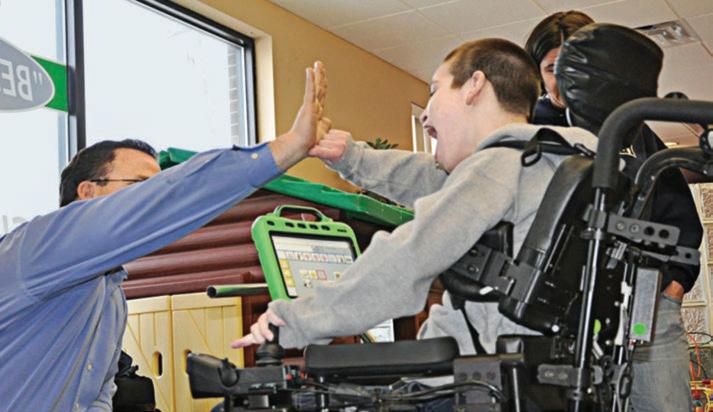
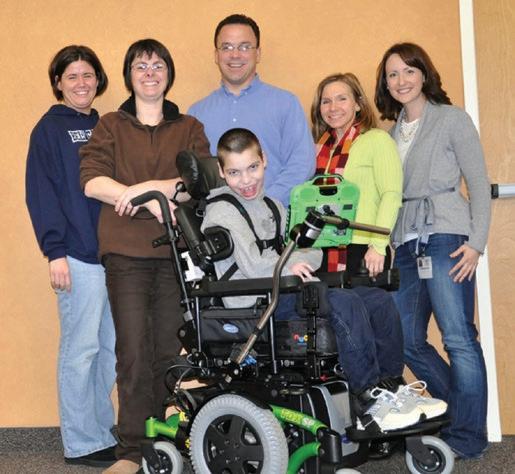
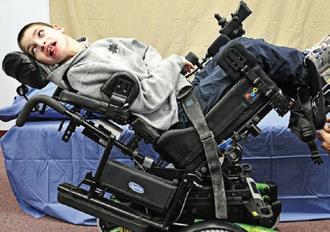
Andrea may be reached at EXECOFFICE@RESNA.ORG THE PRINTED COPIES OF
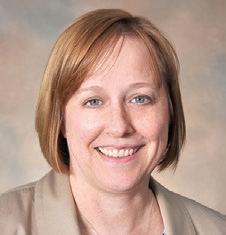
Andrea Van Hook is Executive Director of RESNA. She has over twenty years of experience in non-profit association management. She lives and works in the Washington, DC area.
Order this valuable tool to educate people about why CRT is critical. Every RTS knows it is virtually impossible to describe their profession. There are many different challenges in our field: access to the right technology, access to the right clinical team, funding limitations to name a few. There are many, many barriers, but the need for CRT will never go away.
Advocacy and awareness are everyone’s responsibility. This book provides the means to quickly educate anyone about all the reasons to continue to fight to provide independence and mobility for the people that need it!
Printed copy of COMPLEX is just $15 USD.
The digital version is available for immediate download for $10 USD.
Written by: KYLE J. WALKER, MHA, ATP
If you have ever been frustrated by the complexities and nuances of workers’ compensation, do not worry you are not alone. I often hear of the many pains associated with this market space, and rightfully so with no qualifying policies and cases that are highly situational and probably a small percent of your payer mix. However, there is an upside once you understand how to navigate it. Let me first start with several brief explanations of the involved parties at stake for a Complex Rehab Technology (CRT) referral, and we will keep it as simple as possible.
Claimant: Individual who has been injured and is receiving equipment or service aka patient/ consumer.
Insurance Carrier: Company issuing the insurance policy.
Claims Adjuster: The adjuster is the assigned representative from the carrier who approves the equipment or service.
Case Manager: Assigned to a claim to help manage the clinical care coordination for the claimant. Often has a clinical background like nursing and may or may not work for the carrier.
Utilization Review/Utilization Management: An entity that provides reviews appropriateness of care, costs, codes, etc. on behalf of the carrier. They may be a department of the carrier or contracted.
Third-party Administrator: Typically, an entity involved with selfinsured organizations to process claims on behalf of the insured.
Ancillary Service Provider: Similar to a third-party administrator, but typically offers a broader scope and depth of services, networks and industry expertise.
Customer Service Representative: In this realm, the customer service representative most often is the front person with the thirdparty administrator or ancillary service provider and highly involved with the day-to-day coordination of services.
State Fees: Fee schedule by state and procedure code.
Legal Representation: There may be times when the claimant and/
or carrier are represented by an attorney if the claim is in litigation.
Next, let us look at the process from a high level. This for the most part is nothing new to you, and in most cases is faster and easier than your traditional payer sources!
A referral can be generated several ways: from the carrier, a medical professional or the claimant themselves. You, the supplier, is usually contacted by the customer service representative, adjuster or case manager to fulfill a need. It is important you understand the timeliness expectations with these referrals as well. I know and understand that money is not the only variable at stake, but in this world, it is very important, and time is money. Money potentially spent in a hospital because the claimant does not have their chair to discharge yet.
From there you will perform your evaluation to assess the needs of the claimant, whether that is for service and repair or new/replacement equipment. It is imperative to understand this next piece of the workers’ compensation market. There are no federal, and very few state, policies in place related to medical necessity like we have with Centers for Medicare & Medicaid Services’ (CMS) local coverage determinations.
This can either be in your favor or against. I will clearly explain why. In your traditional payers, you basically must have X diagnosis to receive X. We are all also very familiar that to receive mobility equipment in most cases the patient has to meet the qualification needs for in the home. Not necessarily the case in workers’ compensation, and the “need” is many times up to the philosophy of the adjuster, case manager or both.
Often, we see carriers paying for mobility equipment solely used for recreational activities like hunting.

We even often see carriers paying for accessories like power seat elevation because they see the benefit of it for that claimant and do not have a local coverage determination saying it’s a statutorily noncovered item.
I must emphasize though, that this does not mean you can or should bill for items and accessories that are not medically necessary and would specifically improve the life of the claimant with evidencebased justification. Afterall, ATPs in the market have RESNA code of ethics and standards of practice we must adhere to as well as our character and integrity
Next, your typical documentation is obtained (like quotes, evaluation, justification, etc.) and sent to the ancillary service provider or thirdparty administrator to request authorization. Again, because this market does not have policies in place of when an licensed certified medical professional needs to be involved with an evaluation, they are typically only involved with a new acquired injury coming out of a rehabilitation hospital or at the request of the claims professional (I’m not here to talk about the appropriateness of this, rather educating you on how it currently works). There also may be some negotiation, as there may be state workers’ compensation fees that have to be satisfied to obtain approval.
After that, you know the drill. We must wait at least 30 days for a response … False (in my best Dwight Schrute voice). The authorization request to approval timeline is quite fast in workers’ compensation and rightfully so. Usually, these requests are approved in one to two weeks if not less! Average evaluation to delivery time is around 25 days.
Lastly, the delivery and follow up to the end user. Again, this could be in a rehabilitation center or to their home depending on the date of injury and where they are at in their life cycle. After confirmation of the delivery, it is customary for the ancillary service provider to bill the carrier who then in turns pays them and then pays you, the provider.
Just like our typical line of work, it is all situational and may vary case by case just like the populations we serve daily. I do believe that this is an opportunity that has historically been overlooked by many CRT providers and an opportunity to bring some best practices we are accustomed to into the workers’ compensation space. An
opportunity to show your value, an opportunity to supplement your traditional income, and another way to serve those who in many cases are trying to figure out a way to live after a life-altering injury.
CONTACT THE AUTHOR
Kyle may be reached at KYLE.WALKER@VGM.COM

Kyle Walker is the vice President of rehabilitation program development with VGM Homelink. Most of his professional career has been in the field of assistive technology. He is active on several RESNA boards and educational advisory committees, and participates in scientific peer reviews. He is an advocate for consumers and providers alike.
Don’t Miss U.S. Rehab Tech Training at the Heartland Conference!
Sept. 14–15 | Waterloo, Iowa
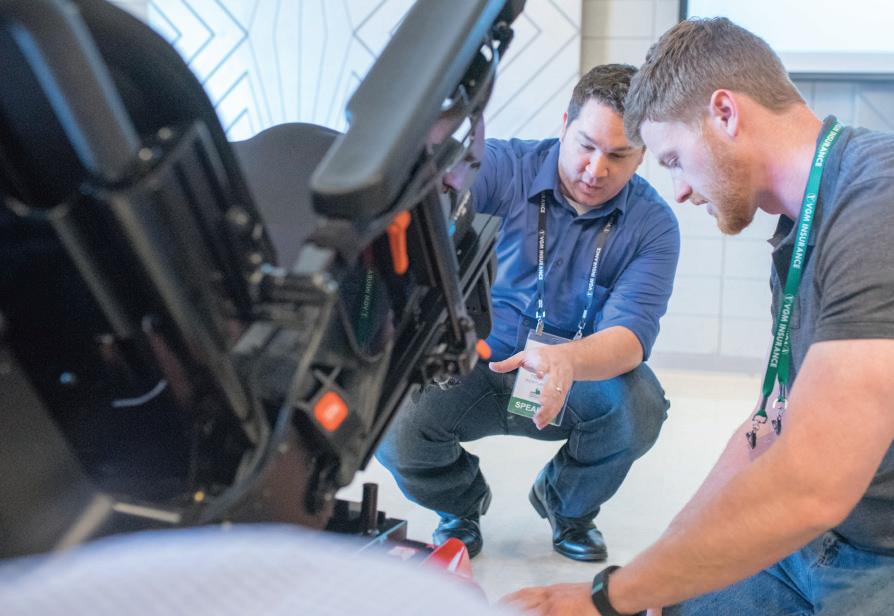
Properly trained repair technicians are critical to your business. U.S. Rehab’s Tech Training offers handson training that helps your technicians meet CMS DMEPOS Quality Standards.
• Limited class sizes for one-on-one intensive training
• CEUs available to attendees
• Education tracks tailored to attendees’ skill levels
Learn more and register at vgmheartland.com/agenda/us-rehab-tech-training
Written by: CINDY DUFF, PT, ATP/SMS
As the global population continues to grow, the average life span is increasing, resulting in a larger proportion of older people. A demand for health care for this population is also growing. With longer life spans comes chronic conditions such as arthritis (affecting the spine and multiple joints), osteoporosis (increasing the risk of spinal changes and fractures), and cardiopulmonary insufficiency (resulting in limited endurance). Some neurological conditions are more likely to occur after the fifth decade of life including Alzheimer’s disease, vascular dementia, diabetic and idiopathic peripheral neuropathy, stroke, epilepsy and Parkinson’s disease. Many elderly people experience dementia, chronic pain, impaired hearing, limited vision, incontinence and balance deficits resulting in an increased frequency of falls. The cumulative effects of these impairments may require a person to transition to wheelchair use for increased safety in daily mobility. Wheelchair seating for the geriatric client can be challenging when addressing both new and chronic conditions. Goals for seating include maximizing function to improve self-propulsion, reducing energy consumption, decreasing pain and minimizing progression of existing pelvic and spinal asymmetries.
These case studies illustrate seating challenges with two geriatric clients: one client without a significant past
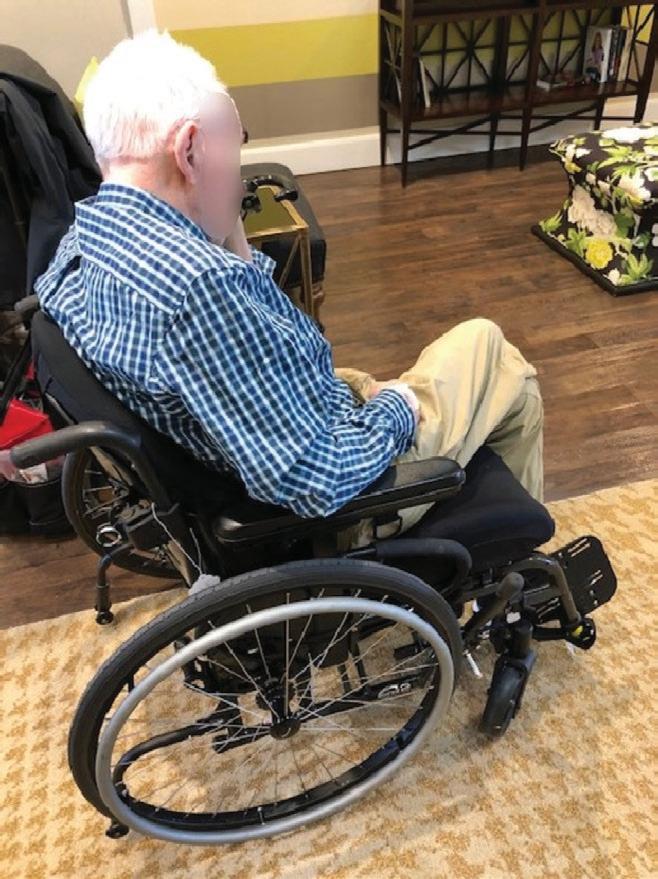
medical history, but with a recent onset of a progressive neurological disorder and one client with existing musculoskeletal conditions with acute onset of stroke.
George is an 80-year-old male diagnosed in 2018 with progressive supranuclear palsy (PSP), a neurological disorder caused by gradual deterioration of brain cells, primarily in the brain stem. This disease is similar to Parkinson’s disease but progresses much faster; symptoms are more severe and life expectancy is significantly reduced. Multiple systems are affected including vision, balance, muscle tone, coordination, swallowing, speech and cognition. Onset is typically after age 60, and men are affected more often than women.
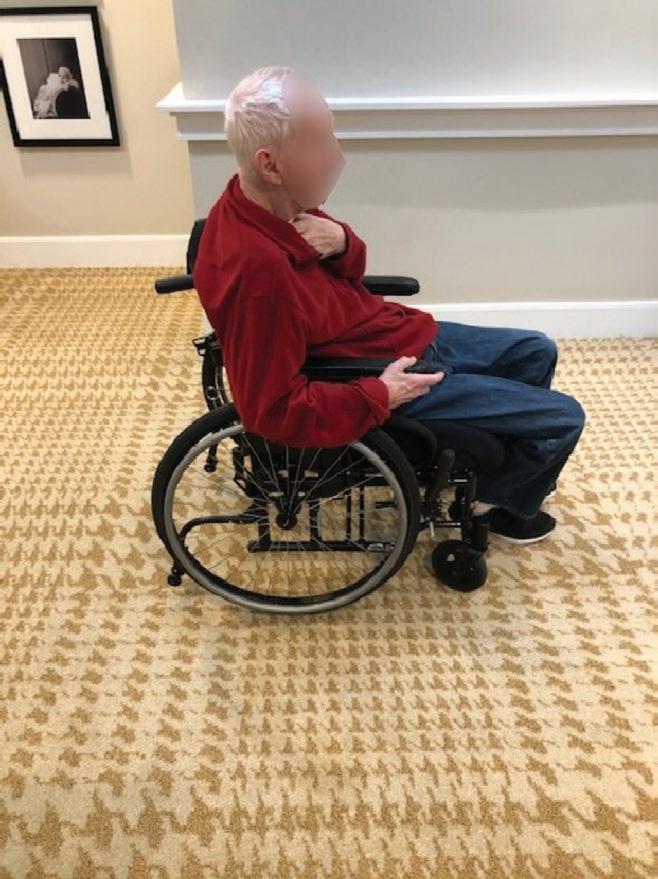
When he was first diagnosed, George was living with his wife in their single-family home. His wife provided supervision and assistance as needed. As his balance worsened, George began using a U Step walker for household and community mobility. A year after his initial diagnosis, George’s wife passed away after a brief illness. Without the assistance he needed at home, George moved into a senior assisted living facility. He initially received assistance with medication management, meals, housekeeping and laundry but was independent with personal care and activities of daily living (ADL). He was independent in transfers and ambulation with his U Step walker in his apartment and within the facility. During the following year, George experienced significant disease progression with increased weakness and impaired coordination in his right arm and leg, increased truncal and extremity extensor tone, dysphagia and dysarthria. He also demonstrated impulsivity and poor carryover in safe transfer techniques. Due to repeated falls with multiple facial, scalp and extremity lacerations, George was no longer able to safely ambulate even with caregiver assistance. He began using a facility-loaned K0001 manual wheelchair, attempting to propel with his left hand and both feet. After several months, George struggled more than ever to propel his chair. He often abandoned it and attempted to walk instead, resulting in more falls. A seating evaluation for a more appropriate wheelchair was ordered by his primary care physician.
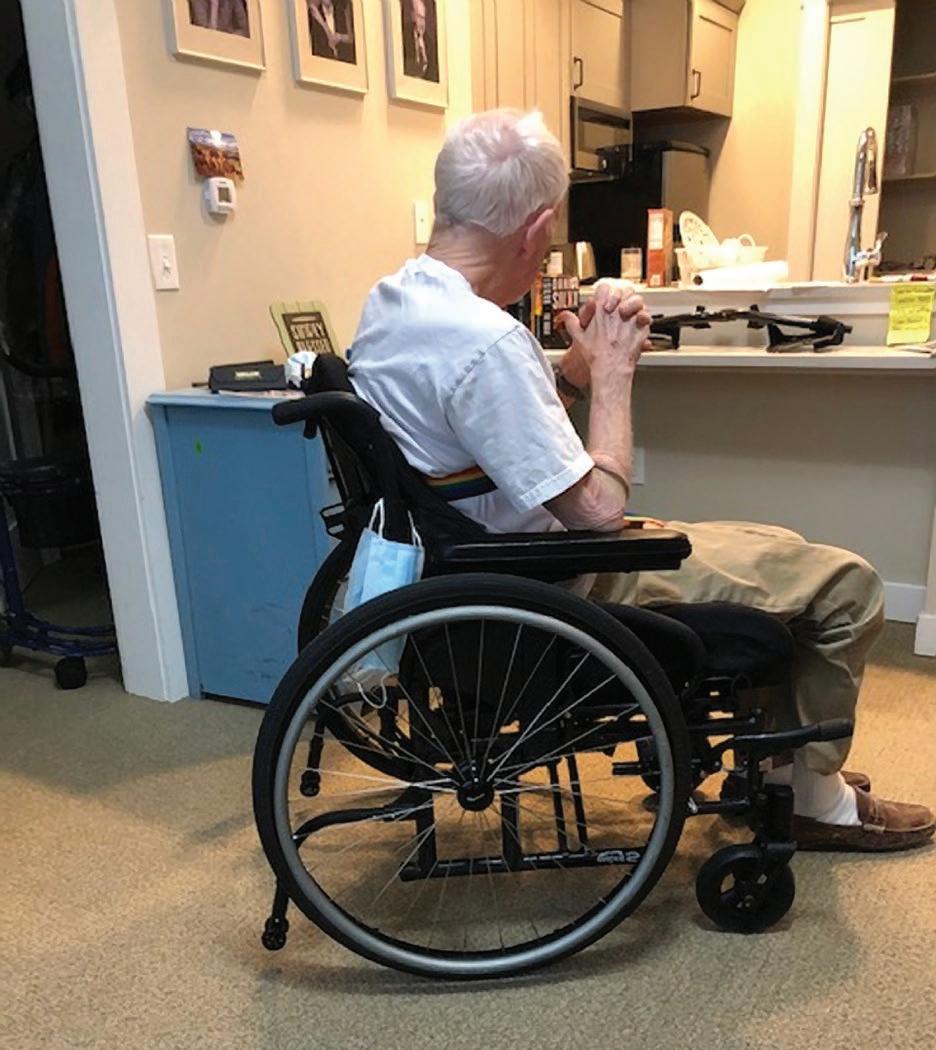
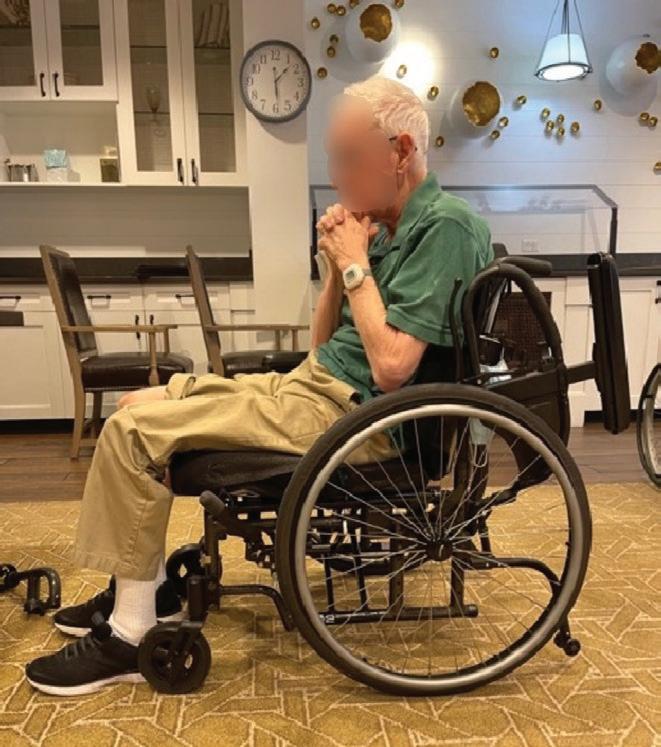
On mat evaluation, George presented with a fixed posterior pelvic tilt, left pelvic obliquity and right anterior trunk rotation. In sitting, he demonstrated an often-observed tendency to sit with his right leg crossed over his left, leaning his trunk to his left side. His fixed pelvic and trunk asymmetries resulted in a windswept position of his legs to the left and a sacral sitting posture. Due to poor trunk control in sitting and standing, George was unable to safely perform position changes to correct his posture or shift his weight, putting him at high risk for pressure injury.
In the trial of a K0005 manual wheelchair, he was able to self-propel with his left hand and both feet from his apartment to the dining room, but his sacral sitting posture increased significantly as he slid forward on the seat to propel. Due to his impulsivity and difficulty learning new motor skills, he was not a candidate for power mobility.
Based on the seating evaluation, a K0005 manual wheelchair with an adjustable skin protection and positioning seat cushion and a positioning back was recommended. He required an adjustable drop seat to accommodate his anatomical measurements in order to achieve the low floor to seat height required to facilitate foot propulsion. George has a short excursion in his foot movements, and he rarely pulls his feet back under the seat frame. Therefore, he did not require the shorter seat depth typically recommended for foot propulsion.
On delivery, George almost immediately slid forward on the seat and crossed his legs (see Figure 1). Sliding forward is a common
problem in seating. This position places the client at greater risk of pressure injury due to shear forces between the skin and seating surfaces and can contribute to worsening pelvic and spinal asymmetry. The tendency to slide forward can occur due to multiple reasons, requiring a step-by-step approach to reach a solution. Of note, a pelvic positioning belt is often an effective approach to help stabilize the pelvis and decrease forward sliding.
Unfortunately, “seat belts” are considered a restraint in assisted living facilities, even if the resident can don and doff the belt independently (for more information about the restraint debate, refer to the RESNA position paper on this topic at www.resna.org). This option was ruled out at the time of the evaluation. To approach a solution, we first opened his seat to lower back angle to accommodate his hip flexion angle and his fixed posterior pelvic tilt. We also moved his cushion forward on the seat pan to lengthen his seat depth. These steps decreased his tendency to cross his legs, but he continued to slide forward while propelling (see Figure 2). Next, we dropped the rear of the seat pan one inch to “bucket” his pelvis by positioning the front of the seat higher than the rear. We also added a solid seat insert to provide more support under the front of the cushion where it extended beyond the seat pan. This change improved his pelvic position, but the seatto-floor height still appeared too low (see Figure 3). Finally, we placed a 1-inch foam wedge under the front of the cushion to provide an increase in the seat-tofloor height and facilitate more efficient foot propulsion (see Figure 4). With the addition of each of these modifications, George was able to successfully propel his manual wheelchair within the facility without sliding forward on his seat.
SEATING FOR THE... (CONTINUED FROM PAGE 43)
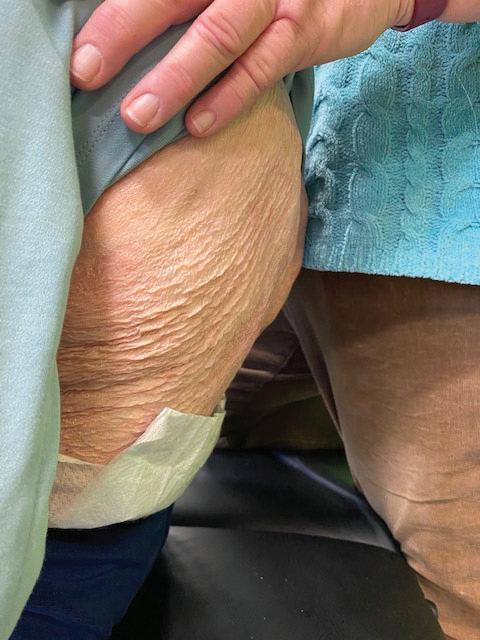
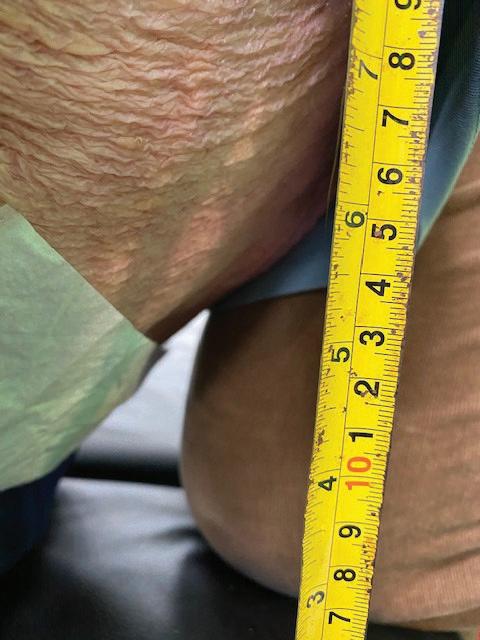
Rose is an 83-year-old female with a history of dementia, diabetes, bilateral knee and shoulder osteoarthritis, and both scoliosis and thoracic kyphosis secondary to osteoporosis. She resides in a senior assisted living facility where she initially received assistance with medication management, meals and showering. She was independent in transfers and able to ambulate community distances without an assistive device, but with supervision for wayfinding.
In November 2020, Rose experienced a rightbrain stroke with residual left hemiplegia, dysphagia, and receptive and expressive aphasia. Following her stroke, Rose presented with increased flexor tone in her left arm with elbow, wrist, and finger flexion contractures and increased extensor tone in her left leg with an ankle plantarflexion contracture. She demonstrated no voluntary movement of her left arm and less than anti-gravity strength in her left leg.
On return to her assisted living apartment, Rose was using a K0001 manual wheelchair for all household mobility. She currently requires moderate assistance for transfers and is unable to effectively change her position while sitting. She has not regained the ability to ambulate.
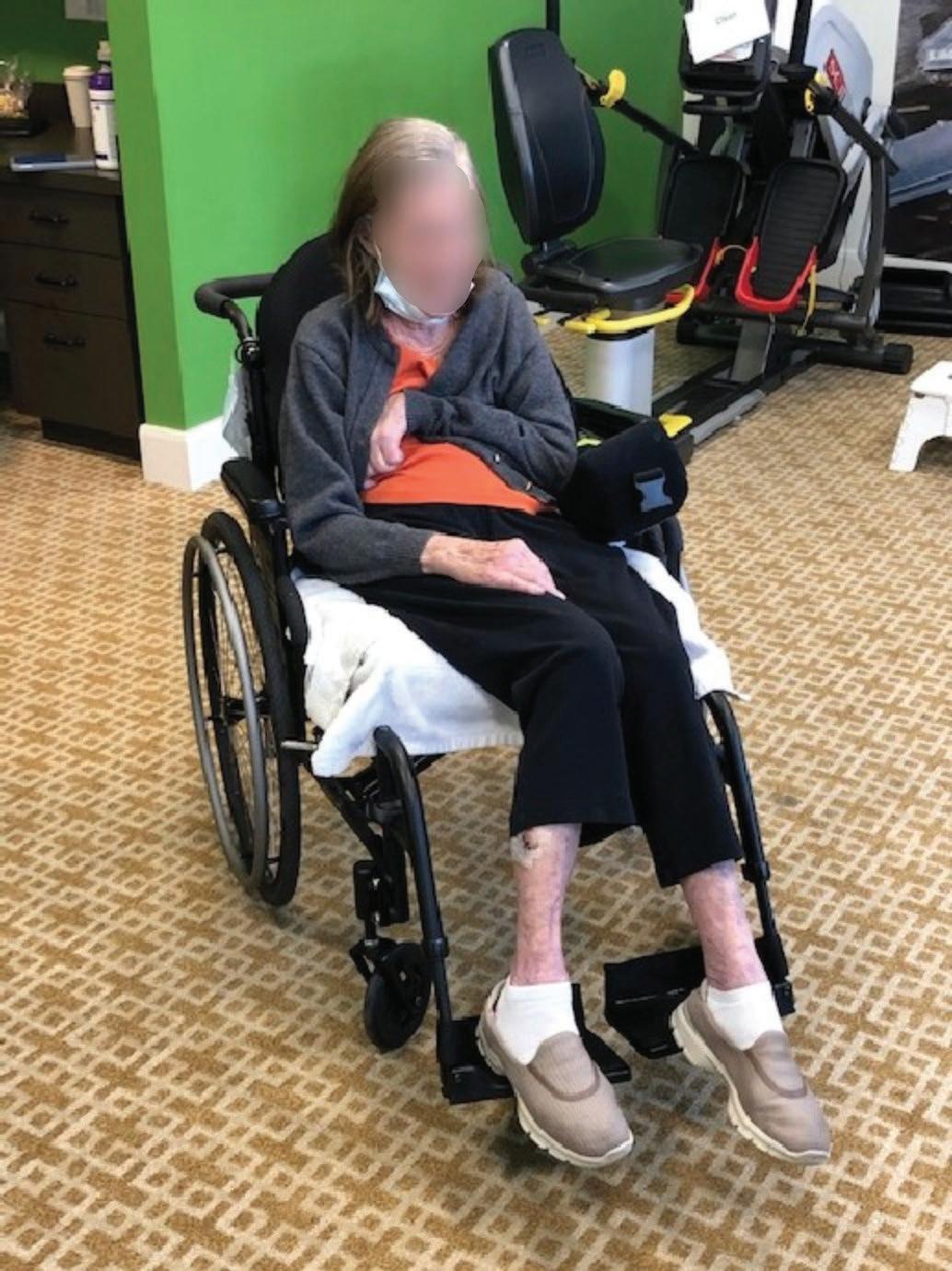
She was unable to effectively propel her current wheelchair and staff were unable to achieve adequate positioning in the chair to facilitate safety in swallowing. Due to poor positioning, her sitting tolerance was less than an hour, and she was spending the majority of the day in bed. She had also developed a Stage II coccygeal pressure injury. A seating evaluation for a more appropriate wheelchair was ordered by her primary care physician.
In the mat evaluation, Rose presented with a pre-existing fixed posterior pelvic tilt, severe fixed thoracic kyphosis with forward head position, and moderate fixed left scoliosis with posterior trunk rotation. Due to new left-sided trunk weakness, she now also has a flexible left pelvic obliquity, and her lower rib cage collapses on to her left iliac crest when sitting with upright back support (see Figure 5). When her hip flexion angle is opened, the trunk collapse is lessened (see Figure 6). In supine, we were able to use wedges to accommodate her trunk rotation and kyphosis, resulting in improved trunk elongation with notable improvement in breathing and comfort when in bed. Her spinal and pelvic asymmetries did not cause systemic issues prior to her stroke but, now with prolonged sitting, they contribute to decreased respiratory support, increased difficulty swallowing, and high risk for pressure injury. The primary goal of the seating system was to achieve the trunk elongation needed to support swallowing and respiratory function.
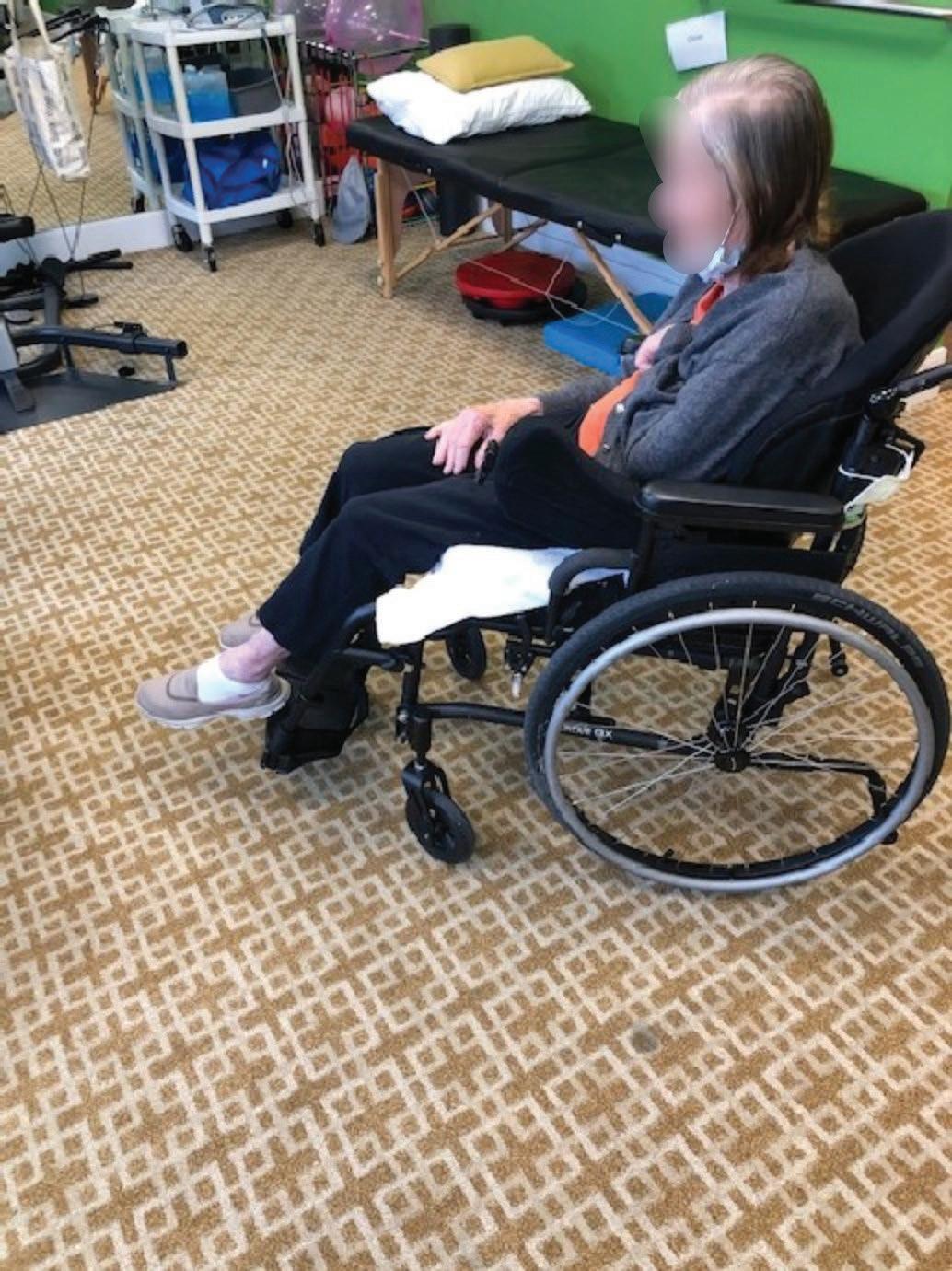
To determine the most appropriate base, Rose trialed a K0005 manual wheelchair for several weeks. Due to impaired motor planning, she was unable to propel this ultra lightweight chair despite daily training sessions. We were not able to achieve an optimal seated posture even with a deep contour back and adjustable positioning seat cushion. We were unable to correct her left pelvic obliquity or accommodate her left thoracic curve or kyphosis. Her poor pelvic positioning also resulted in excessive right hip adduction. (see Figure 7). We also noted that the 80-degree angle of the front-rigging on the demo chair was too small to allow accommodation of her left ankle contracture even with an angle-adjustable foot plate (see Figure 8). She was not able to achieve adequate positioning to facilitate a sitting tolerance longer than an hour. As with the K0001 base, Rose was dependent in position
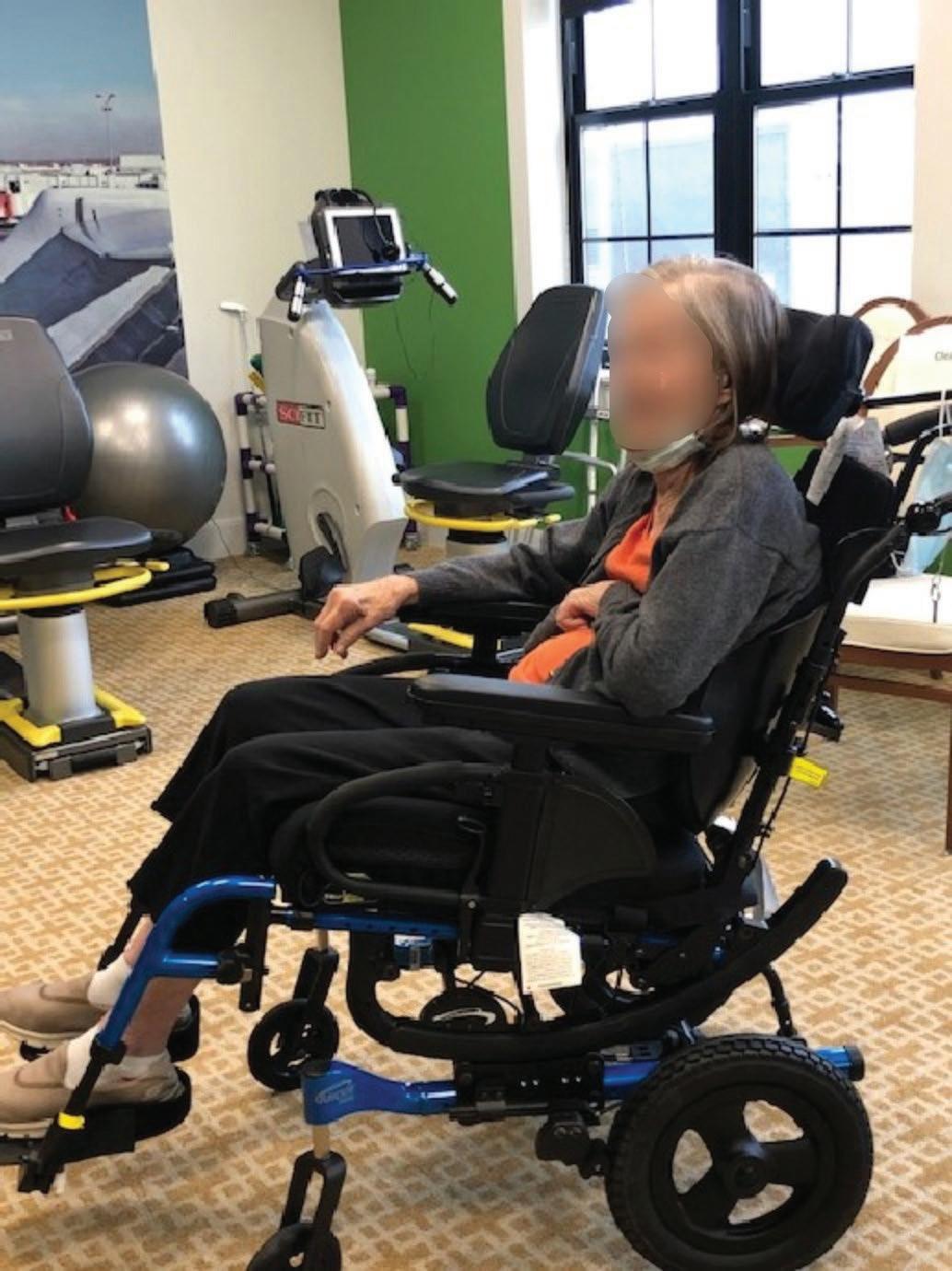
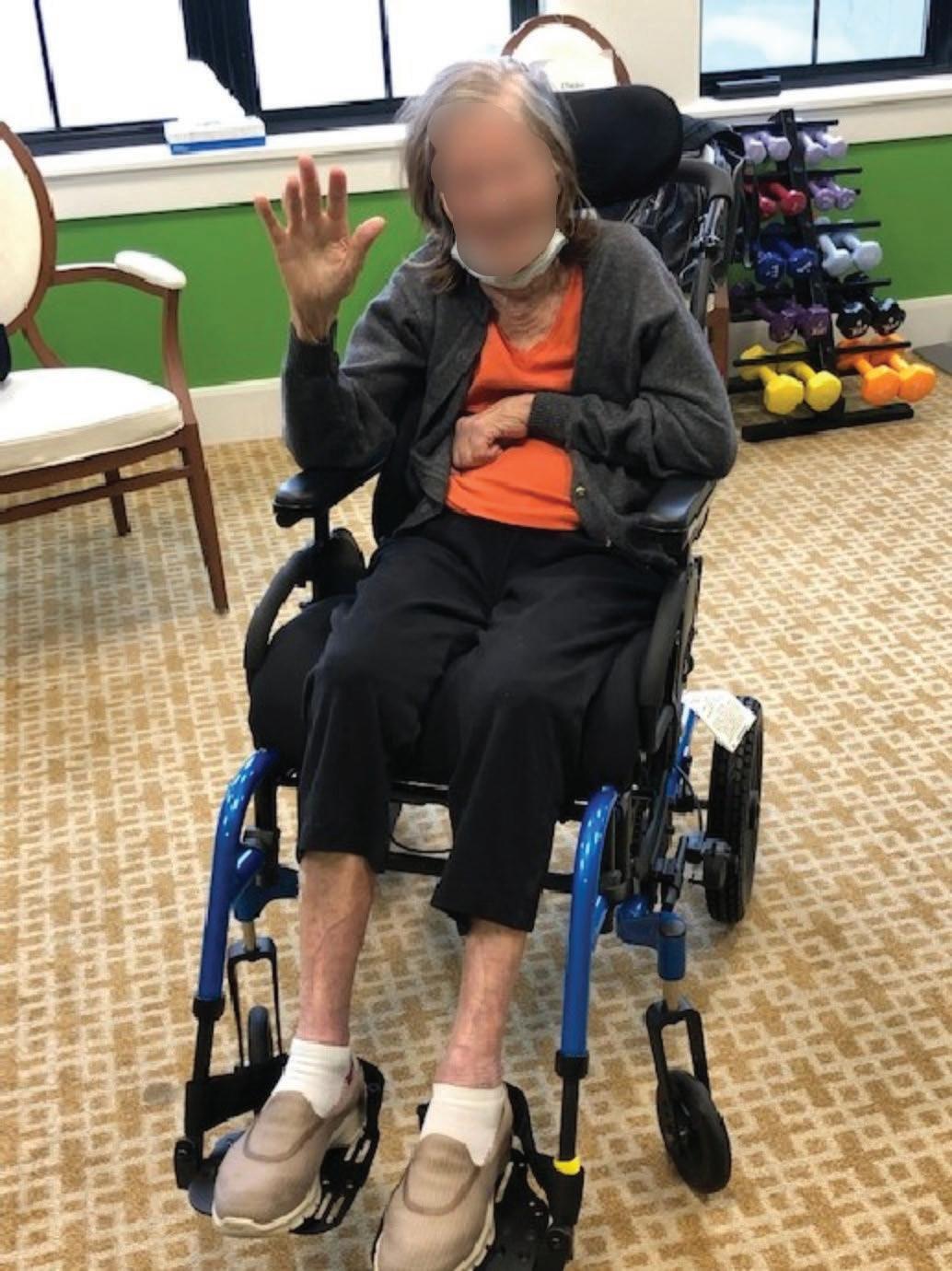
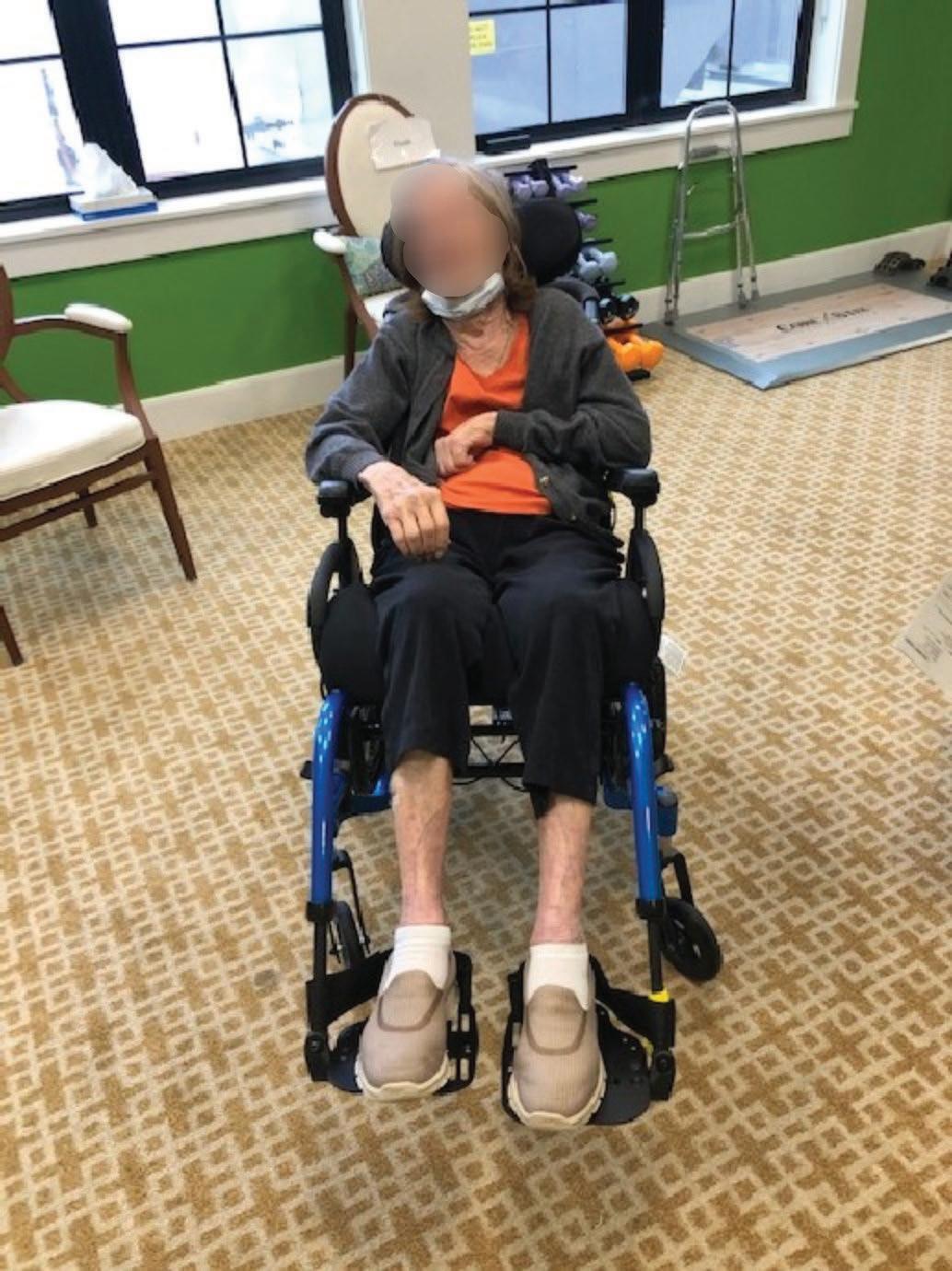
changes in the K0005 chair. Caregiver support was not sufficient to provide frequent posterior tilt or lateral weight shifts while in her wheelchair, so she again spent most of the day in bed.
Rose then trialed a manual tilt chair with the same seating system with a more successful outcome. With the use of the posterior tilt function, she had increased sitting tolerance and the staff were able to perform position changes more effectively. The deep contour back did not provide sufficient trunk elongation even while tilted posteriorly, and her trunk continued to collapse to the left.
Based on the seating evaluation, a manual tilt wheelchair was recommended. Seating specifications included an adjustable skin protection and positioning seat cushion to correct her left pelvic obliquity and decrease risk of worsening pressure injury. As noted during equipment trials, her extensive fixed spinal and pelvic asymmetries could not be accommodated by a prefabricated back. A custom-molded positioning back was recommended to achieve the trunk elongation needed to facilitate improved swallow and respiratory support and decrease risk of pressure injury on the apex of the kyphotic curve.
On delivery, we adjusted the mounting hardware to position the back and accommodate her kyphosis and the trunk rotation caused by the scoliosis (see Figure 9). Her pelvic alignment is improved with decreased obliquity, and her lower extremities are positioned in midline (see Figure 10). We were able to attain good trunk elongation, which improved even more with the use of 25 degrees
of posterior tilt (see Figure 11). Rose responded to this change by saying, “I feel so much taller.” Caregiver staff were trained in positioning Rose in her new seating system and in use of posterior tilt to perform position changes throughout the day.
Assessment and provision of appropriate seating systems can be challenging when working with geriatric clients who present with chronic medical complexities as well as the onset of new health issues. Considering all contributing variables, trialing different products and problem-solving modifications of seating systems is key to a successful outcome.
CONTACT THE AUTHOR
Cindy may be reached at DUFFCYNTHIA63@GMAIL.COM
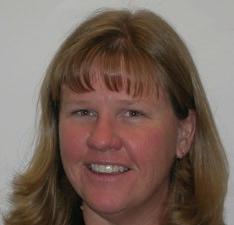
Cindy Duff, PT, ATP/SMS, has practiced physical therapy for over 30 years. She has performed seating and mobility evaluations on inpatient critical care, acute and rehabilitation units and in outpatient clinics. She is currently working in an outpatient clinic in a senior living community.
Written by: CLAUDIA AMORTEGUI, THE ORION CONSULTING GROUP, INC.
Although the Complex Rehab Technology (CRT) industry has secured some small wins lately, we need to make sure we do not forget some basics that provide a foundation for proper reimbursement.
Exactly what does this mean?
As I read through documentation, I see more and more simple errors that cause issues. I have always said getting CRT claims paid should not be that hard. The end users’ needs are normally rather specific, and as long as the right products are prescribed and the documentation is detailed, then it should be an easy review. So, what errors do I find? How can they be fixed?
Copy and Paste – I understand for certain items (e.g., batteries), the justification is not going to change. However, for many other items the primary reason may be the same, but how does that relate to the individual? For example, a power tilt may be required due to the client’s inability to perform a functional weight shift, but how is this supported within the mat evaluation? A high-level quadriplegic’s inability to weight shift would likely be documented differently than a person with multiple sclerosis. But of course, it depends, which is really my point.
I also tend to see errors in the diagnoses listed and/or the gender of the client being changed from he to she, or she to he, or simply a mix of both.
I do recognize time is limited for many, but the time and effort spent on the front end will help the end user obtain their equipment more quickly. It should also eliminate the need for a provider to come back and ask for more documentation to appeal a denial – this would end up taking more time when the therapist has likely moved on to treat other patients.
Separating Orders – I have seen and heard of orders where a key item(s) is purposely not included as part of the primary order. Instead, the provider separates the item(s) onto its own claim. The justification is then separated as well. First and foremost, most funding sources would deem this as unacceptable. If the item is medically necessary, then it should be on the same order. If the item is needed for the client to even use the wheelchair (e.g., custom seating), then it cannot be on a separate claim. In some cases, suppliers attempt to do this out of fear of an item being denied and slowing down the rest of the order. This practice will not help, especially for future orders. Again, if the item is truly medically needed for the full system to be functional for the end user it would only make sense to keep things together.
Not Tying All the Pieces Together – Many times I find a seating evaluation and/or letter of medical necessity that contradicts
itself in varying ways. First, there are orders where the information truly goes against itself within the documentation. For example, one section may read the end user has no pressure wounds, but then I look at the specific justification for a skin protection cushion and will read the client does have a pressure wound. Such contradictions are obviously an issue.
In other cases, the information does not necessarily contradict itself, but the need for certain options could easily be questioned when reading the bulk of the documentation. The reader may only understand the level of need when the line-item justification for a single item is reviewed. The problem is two-fold. First, the reviewer may never get that far as their mind is made-up when reading the initial information. Second, the line-item justification for a certain option may not match what the rest of the documentation states. It is not contradictory, but it certainly is not part of the story. One example I recently saw was when the documentation talked about a head array being broken and needing to be replaced. However, once I got toward the end of the documentation, I found out the entire specialty drive control was being changed as the end user could no longer drive with a head array. In this case, the fact the head array was broken was a non-issue. The documentation should have easily started with their physical inability to use such a drive control (even in working condition).
The point to all of this is the reviewer should not have to hunt for the key medical justification. I have always said, the documentation should paint the picture of the client, their medical needs and how they can be solved.
Not Taking a Chance – It is amazing how often I hear, “I want to order this for my patient because they need it, but I don’t think it will be covered” or “I want to order this for my patient, but I was told it was denied.” First things first, I always ask for “proof” of something being non-covered or of a denial. Not that I do not believe my suppliers, but because I need more details. We all know power seat elevators and power standers are not covered by Medicare, but some funding sources will pay for them, so do not assume. Other than these two items, there are very few items that would also be non-covered. As for denials, you need to find out if this is a funding source denial or just an internal supplier’s
denial. Either way, details are needed. This does not mean to simply give up. If we do not challenge such denials, the end users will never have the opportunity for new technology to be developed. For that matter, the “complex” part of CRT is greatly diminished if all orders look the same.
I understand time is limited for all. But it must be realized many of the “short-cuts” only make the road longer. The above issues typically cause initial denials, delays and even extra rewrites for the clinicians. Templates may be utilized, but clinicians would be more successful if they used them as a map to eliminate the chance of missing specific areas of documentation. Templates should not be used if only copying most of the information with only minor tweaks. I worry when I see documentation (and orders) look very much the same. As I have said many times over, CRT is complex – not only the end users and their needs but the supporting documentation as well. This only makes sense. Yes, we want equipment delivered as quickly as possible, but we also want the individual needs to be addressed. We have fought as an industry to differentiate CRT from standard Durable Medical Equipment. We cannot expect “standard” documentation to be the norm.
CONTACT THE AUTHOR
Claudia may be reached at INFO@ ORIONREIMBURSEMENT.COM.
Claudia Amortegui has a Master of Business Administration and more than 20 years of experience in the durable medical equipment, prosthetics, orthotics and supplies (DMEPOS) industry. Her experience comes from having worked on all sides of the industry, including the DMEPOS Medicare contractor, supplier, manufacturer and consultant. For many of these years, Amortegui has focused on the rehab side of the industry. Her work has allowed her to understand the different nuances of complex rehab versus standard DME. This rare combination of industry experiences enables Amortegui and her team at The Orion Group to assist ATPs, referrals, reimbursement staff and funding sources in understanding the reimbursement process as it relates to complex rehab.

PRESIDENT - Gerry Dickerson, ATP, CRTS®
PAST-PRESIDENT - Elaine Stewart, ATP, CRTS®
VICE PRESIDENT - Carey Britton, ATP/SMS, CRTS®
SECRETARY - Tom Simon, ATP, CRTS®
TREASURER - Mike Osborn, ATP, CRTS®
REVIEW CHAIR, DMAC A - Mike Harris, ATP, CRTS®
REVIEW CHAIR, DMAC B - Doug Crana, ATP, CRTS®
REVIEW CHAIR, DMAC C - Mike Seidel, ATP, CRTS®
REVIEW CHAIR, DMAC D - Andrea Madsen, ATP, CRTS®
AT LARGE DIRECTOR - Tim Robinson, ATP/SMS, CRTS®
AT LARGE DIRECTOR - Jason Kelln, ATP, CRTS®
AT LARGE DIRECTOR - David Nix, ATP, CRTS®
AT LARGE DIRECTOR - Robert Harry, ATP/SMS, CRTS®
AT LARGE DIRECTOR - Toby Bergantino, ATP, CRTS®
MICHELE GUNN, ATP, CRTS ® - Past President
JOHN ZONA, ATP, CRTS ® - Past President
DENISE HARMON, ATP, CRTS ® - Past President
MIKE BARNER, ATP, CRTS ® - Past President
SHEILA BUCK, B.SC.(OT), REG. (ONT.)
STEVE CRANNA
MICHELLE HARVEY, BSC HONS OT
MIKE LONGO
LINDA NORTON, M.SC.CH, PHD, OT REG. (ONT.)
JASON KELLN, ATP, CRTS®
EXECUTIVE DIRECTOR – Weesie Walker, ATP/SMS
DIRECTOR OF OPERATIONS – Amy Odom, BS
DIRECTOR OF EDUCATION – Annette Hodges, MA, BS
DIRECTOR OF MARKETING – Bill Noelting
CONTINUING EDUCATION CURRICULUM COORDINATOR –Michelle L. Lange, OTR/L, ABDA, ATP/SMS
CONSUMER RELATIONS & ADVOCACY – Andrew Davis
Written by: ROSA WALSTON LATIMER
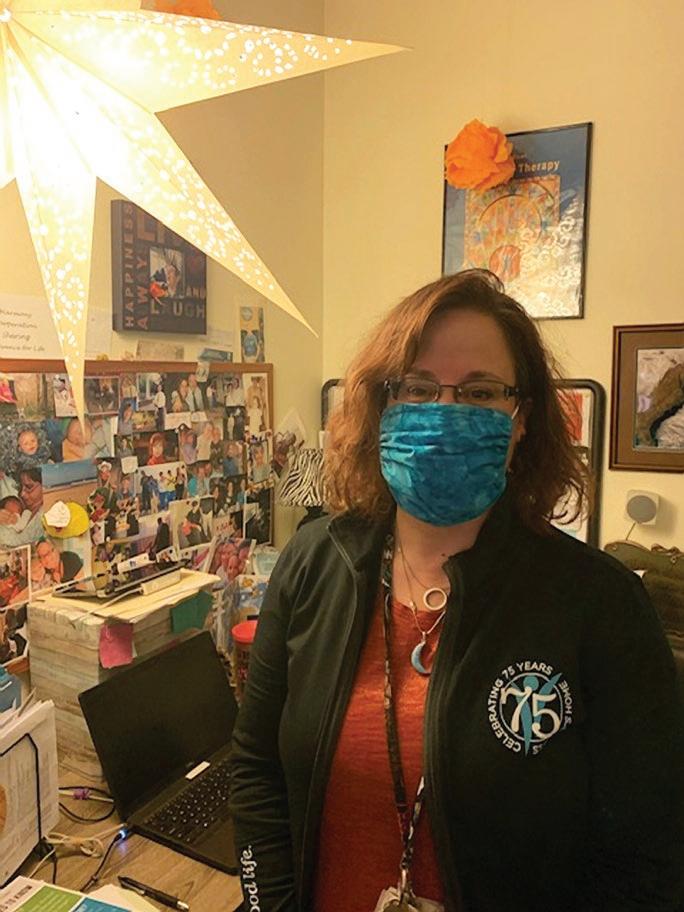
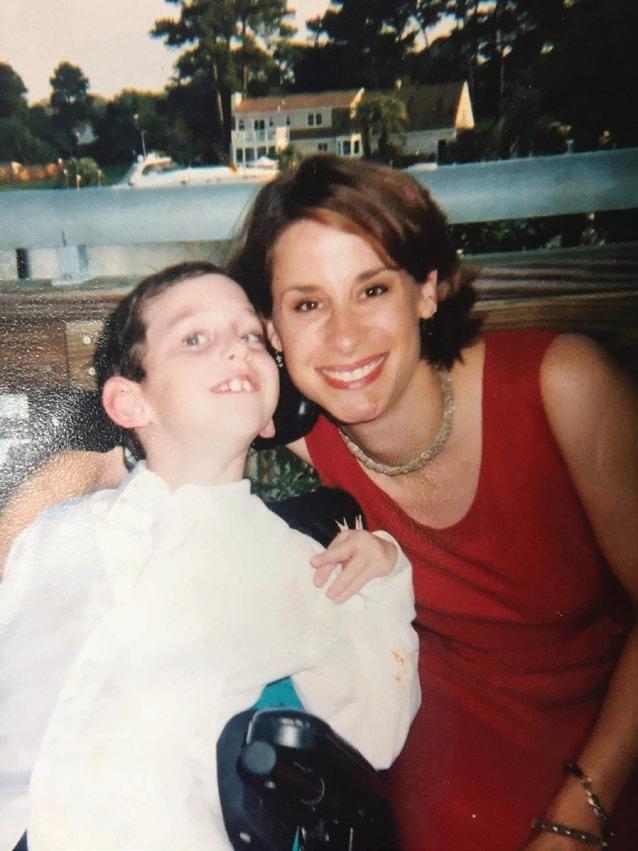
St. Mary’s Home in Norfolk, Virginia, is a home for individuals with severe and profound intellectual and physical disabilities. The intermediate care facility began in 1944 as St. Mary’s Infant Home, caring for abandoned and orphaned children and later for children with disabilities. Suzanne Eason, OT/L, is the supervisor of occupational therapy at St. Mary’s. “I’ve been at St. Mary’s almost 24 years, and worked the majority of my 30 years as an OT,” Eason said. “We have 100 residents. We focus on individuals with very complex medical needs who usually require around-the-clock care to help deal with neurological, cardiac and specialized feeding programs. Most residents have a diagnoses of cerebral palsy, and I have known many of them all of their lives.” Residents can live at St. Mary’s as long until age 21, and for many, that could mean their entire life. “We also have a 12 bed adult facility, and those residents can stay as long as they want.” The oldest individual living at St. Mary’s now is 28. “She has been here since she was a baby and is getting her fifth seating/wheelchair system in the next couple of weeks.”
The personal relationship with the residents keeps Eason engaged in her work and motivates her to continue to meet their challenges. “A good example is a young man named Brandon who had athetoid cerebral palsy and a brilliant mind,” Eason said. “You could see the brilliance in his eyes when he was only 2 years old. He was the first child I put into a power chair, and he used a head array. It was amazing! He would hang out in my office after school, and we would have the funniest conversations. His parents lived out of town, and they were OK with me taking Brandon to visit my home on occasion. We went to a Miley Cyrus concert in Washington, D.C. Brandon took a whole troop of people with him because he was a big guy and required a lot of people to help him. Unfortunately, he passed away about three years ago and it broke my heart! Brandon initially stirred the
dedication to this work in me. I believe he is still with me and reaches out to me. It is impossible to be with these patients, share the good and not so good times of their lives, and not get attached.”
The St. Mary’s staff provides 24/7 care, 365 days a year, as well as physical and occupational therapy and dietary services. “Everyone here from administration to the person that cleans the laundry or takes out the trash shares the attitude that the residents are our family and that’s how we want them to be treated,” Eason said. “I don’t know if I do a great job, but I treat them like they are my family. If you don’t have that philosophy in your heart, that every life matters and every life is important, St. Mary’s may not be the place for you.”
The primary responsibility of the OT department at the facility is to support everyone’s customized adaptive equipment needs. “That includes the entire range from wheelchairs and adaptive seating to orthotics, splints and positioning devices at nighttime. Everyone is on 24-hour positioning care and have been as long as I’ve been here,” Eason said. “We do feeding therapy and help with programs to support the mealtime assistance of individuals who eat by mouth. Our department also creates the adaptive toys that individuals need. We determine what sensations a patient has – can they see, can they hear, do they enjoy touch – and make leisure activities for them. For example, we have a young lady who loves music, but she is pretty rough on toys. We adapted her tray to hold a radio on a little shelf underneath her tray with a single switch that comes up through the tray. She can hit the switch whenever she wants to hear music and that delights her.” We have many individuals with visual impairments, so we do numerous lighted tray-top activities. When appropriate, we’ll put lights all around the rooms and beds of patients with cortical visual impairments. We have lots of books! Whatever the staff and the team think an individual needs, we make it happen.”
Eason considers her experiences at St. Mary’s as a “give and take” situation. “I’ve been through a lot of situations medically with my own family and had it not been for the experiences I’ve had with the ‘family’ that lives at St. Mary’s, I wouldn’t have been well-guided,”
Eason said. “My father had cancer and, unfortunately, he has passed away, but I remember one of the moms here telling me ‘I just don’t want my child to be in pain so do everything you can to prevent that.’ I applied that to the situation with my father and told the doctors we needed to do everything possible so he would not be in pain. I hadn’t known I had the right to ask for that.” Another strong connection with her St. Mary’s family was when Eason’s youngest son was born. “It was a normal pregnancy with a planned (cesarean section) delivery, but Truitt didn’t breathe when he was born,” Eason said. “His intubation and spending three days in the NICU were gut-wrenching and an eye-opener for me. It was a very strong reminder many of our parents had to go through that experience with their children for months, and, in cases, years. We were lucky that Truitt did not have life-altering issues due to his traumatic birth.”

When Eason went to college, she was a track runner and liked the idea of physical therapy. “However, the classes required to go into PT were not my strong points, so I decided on OT instead,” she said. “So occupational therapy chose me, which was a blessing. God is always guiding us! I’m happy with the results – I love OT.”
Of course, many things have changed since Eason began her career three decades ago. “When I went to school, we were taught that the brain was pretty static and did not change. So when someone had a disability, that was what you had to work with,” Eason said. “I’m not sure why, but I never believed that. I started reading the research done over the last 60 years about brain plasticity and how we can impact that. I thought, ‘I have all of these kids in these beautiful chairs. They look great, they are in line, their heads are upright, they are breathing well, and they are not coughing, but what can they do for themselves? How can I challenge that, and is that something I want to challenge? Would it cause increased tone or strengthen the muscles in a way that they shouldn’t go?’
I found a different way to impact the development of the neurologically challenged. If we allow someone to move, we are increasing the ability of the brain to create more connections and maybe more pathways. So, at St. Mary’s we started putting hardware onto the chairs that allowed the patients to move. Most of the individuals I work with at St. Mary’s had typically developing brains until some tragic incident occurred whether it was hypoxia at birth, intraventricular hemorrhage after birth or damage after a car accident. The care of our residents includes determining what can we do to support the development of their brain that will lead to a better life for the individuals who live here.”
Eason considers her patient and friend, Brandon, one individual who had a profound, positive influence on her life. A fellow occupational therapist, Michelle Lange, is also important to Eason, personally and in her work. “Michelle was the first person who truly made me want to do better,” Eason said. “She keeps me on my toes and believes in me.” The therapist also credits the support and inspiration of her team at St. Mary’s for motivating her. “I believe in the philosophy of hiring people who are way smarter than I am. Together, we have over 200 years of experience in this field.” On a less personal level, Eason follows podcaster Ginger Campbell, an emergency doctor (Brain Science with Ginger Campbell, M.D.). She also stays abreast of the work of behavioral neuroscientist Edward Taub, professor at the University of Alabama.
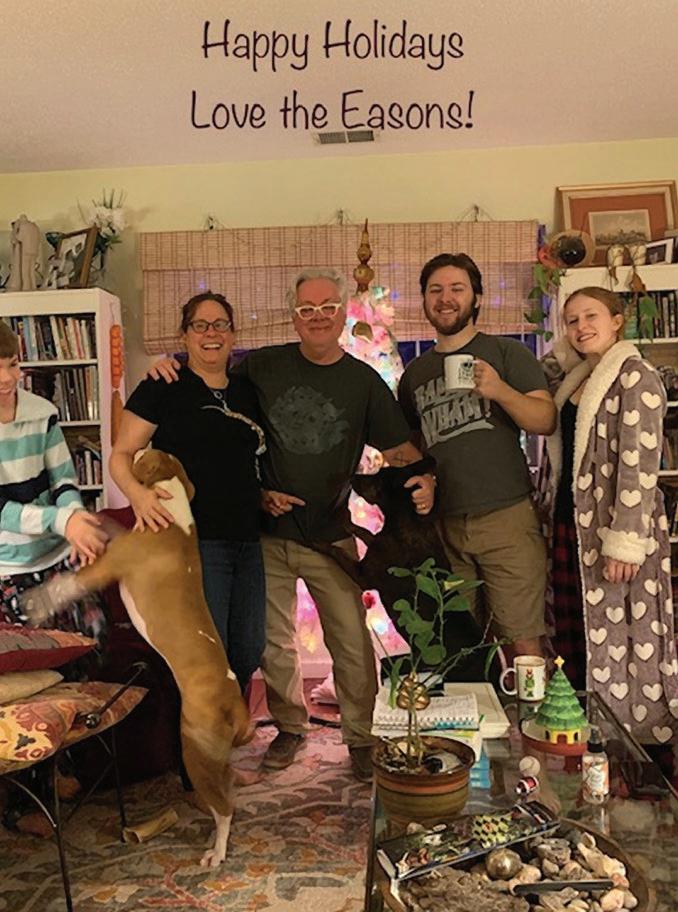
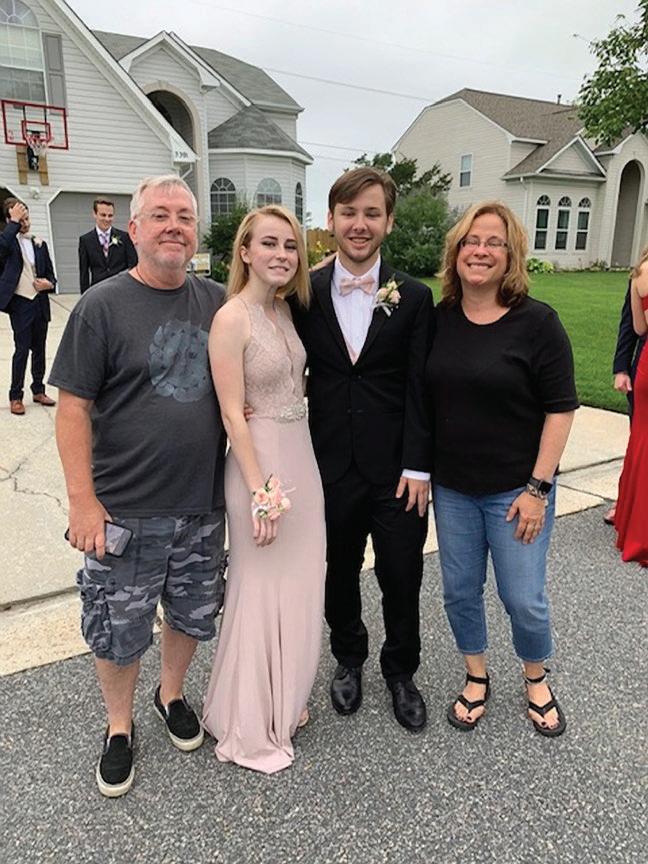
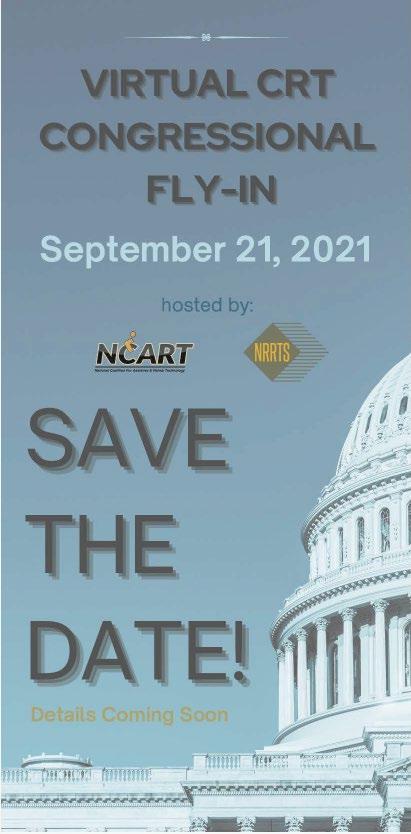
SEE THE ‘SPECIAL’... (CONTINUED FROM PAGE 49)
“I believe you should always be exploring and not take anything for granted. We should never give up searching for ways to make the lives of our patients better,” Eason said. “Don’t fall into a paradigm that leads you to believe there is only one way to do something. I would often tell Jane Shepherd, one of my college professors, that she did not teach me enough. She would answer, ‘The rest is up to you.’ That sentiment motivates me to continue to conduct research and to keep learning.”
Eason and her husband, True, have been married 26 years. “We met online, which in the ‘90s was unusual. It was ‘dial-up,’” she said. “We had our first child, Zachary, in 2000, and then we had Truitt when I was in my 40s. Through the years, we have had a gazillion four-legged animals. Before I had children, I was a wildlife rehabilitator and raised baby possums after their mothers had been hit by a car or met some other gruesome fate. That was a crazy time and a demanding responsibility because we had to tube-feed the babies.”
“When we do orientation at St. Mary’s, and when I make other presentations, the first thing I say is that I never, ever, ever consider that someone doesn’t understand what I mean and what I am trying to do,” Eason said. “I believe there is a conversation to be had with anyone at any level of developmental abilities or functioning levels.
“When people figure out what I do for a living, they often say, ‘You must be a special person.’ I answer, ‘No, I just see the ‘special’ in everyone.’ I had no idea when I started work at St. Mary’s what I was getting into. It is by the grace of God that I was delivered to this place. It saved me, and I hope I’ve helped it and all the individuals I have worked for and with.”
Suzanne may be reached at SEASON@SMHDC.ORG.
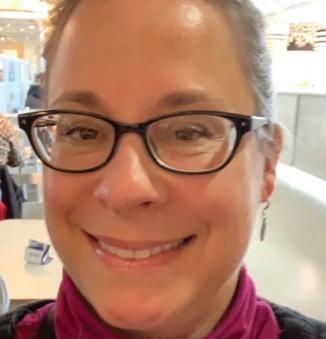
Suzanne Payne Eason, OT/L, has been an occupational therapist for more than 30 years. Eason has found her calling as an advocate for individuals with complex medical conditions. Her motto: “We provide the foundations for function” has evolved into a small private practice. In her spare time, she can be found at her busy home with her husband and her twoand four-legged children.
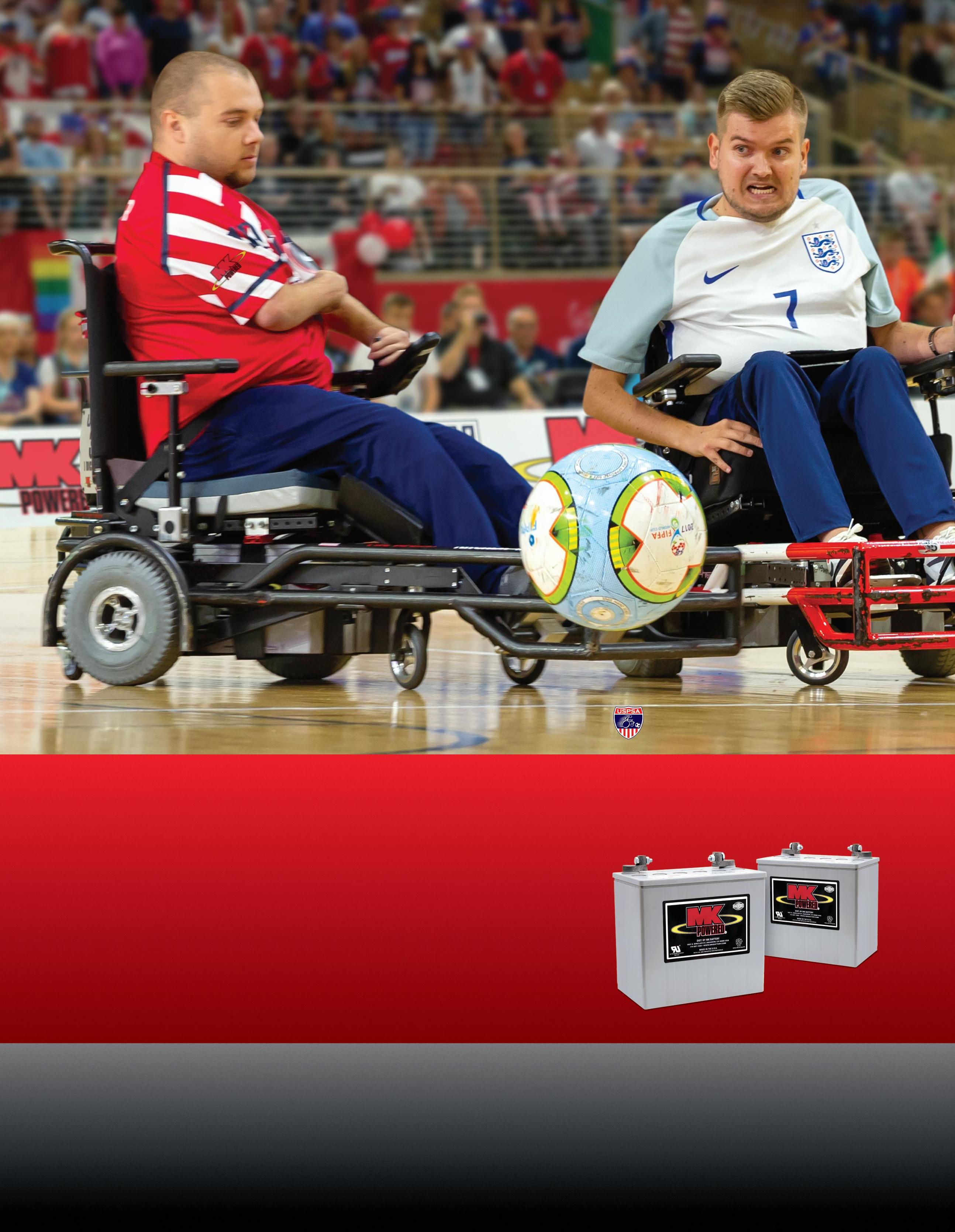
Written by: WEESIE WALKER, ATP/SMS, EXECUTIVE DIRECTOR OF NRRTS
“When it is obvious that goals can’t be reached, don’t adjust the goals, but adjust the action steps.”
— Confucius
As all Complex Rehab Technology (CRT) suppliers will attest, meeting the goals of their clients can be challenging on many different levels.
One of the greatest challenges is reimbursement rates for products. The skill, knowledge and service by the supplier is not a billable charge. The allowable for the CRT product must cover the acquisition costs, processing, delivery and fitting. In many instances, the allowable does not cover the acquisition cost!
How can this situation be handled?
The supplier can meet the goal of their client and provide the CRT at a loss. At some point, this practice becomes unsustainable. This is obviously not the answer for the supplier or the client.
The supplier can offer a lesser quality product that fits the reimbursement. This is a band-aid approach. This is obviously not the best answer for the client.
The supplier can look at providing the product as part of a system and not as a separate transaction. This does not work when just that part needs to be replaced.
The supplier informs their client that the reimbursement does not cover the cost. The client can decide to advocate with their funding agency for better reimbursement. And/or the client can look for alternative funding.
WE CAN ALL BE PART OF THE SOLUTION BY PROVIDING ACCURATE INFORMATION THAT IS EASY TO UNDERSTAND AND REALISTIC. THE CORRECT PROCESS OF PROVIDING CRT INVOLVES MANY STEPS BY MANY PEOPLE.
RESNA’s code of ethics states, “Seek deserved and reasonable remuneration for services.”
NRRTS’ Standard of Practice states, “Strive to avoid practices that in the short or long term may prove to be detrimental to the consumer.”
The CRT industry has put forth much effort to increase awareness of CRT and to protect access to appropriate technology. To protect access, we must fight for fair reimbursement of not only the products but also the service required to provide the best outcome. The conversation with the client must cover all these facts. Without their participation in the fight for fair reimbursement, funding agencies will not see that there is an access issue. And if they are not seeing an access issue, there is no issue.
We can all be part of the solution by providing accurate information that is easy to understand and realistic. The correct process of providing CRT involves many steps by many people. That is what makes CRT different from Durable Medical Equipment. Without the quality service component, CRT will not meet the goals of the client.
Let us not change the goal.
Let us adjust the action steps.
To learn more, check out the NRRTS webinar “Tough funding conversations: The tension between reality and best practice” by Jill Monger, PT, MS, ATP.
https://nrrts.org/courses/tough-funding-conversations/
CONTACT THE AUTHOR
Weesie may be reached at WWALKER@NRRTS.ORG
Weesie Walker, ATP/SMS, is the executive director of NRRTS. She has more than 25 years of experience as a CRT supplier. She has served on the board of directors for NRRTS and GAMES and RESNA’s professional standards board. Throughout her career, Walker has worked to advocate for professional suppliers and the consumers they serve. She has presented at the Canadian Seating Symposium, RESNA Conference, AOTA Conference, Medtrade, ISS and the NSM Symposium. Walker is a NRRTS Fellow.
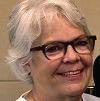
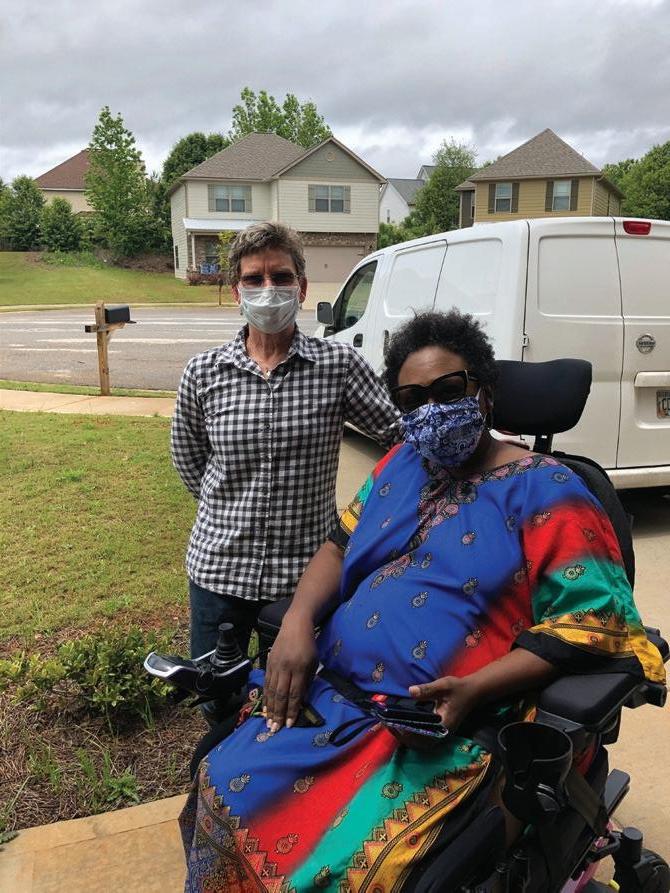
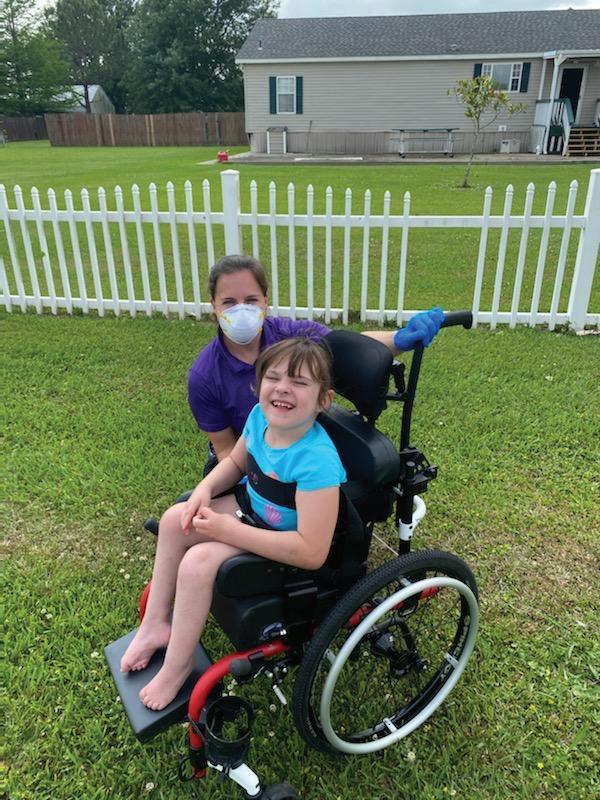

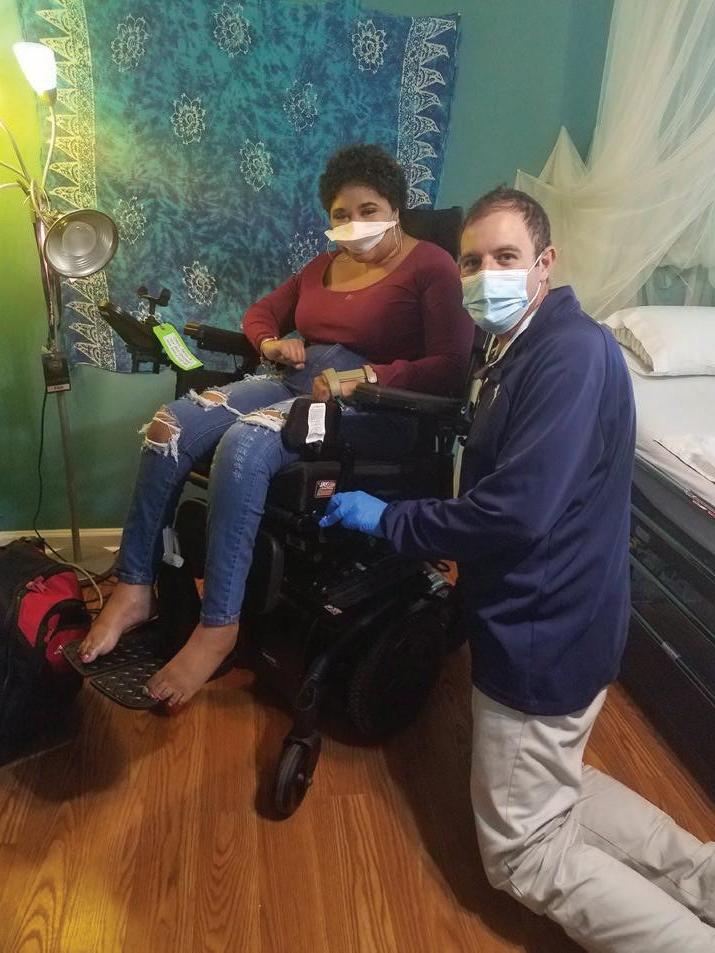
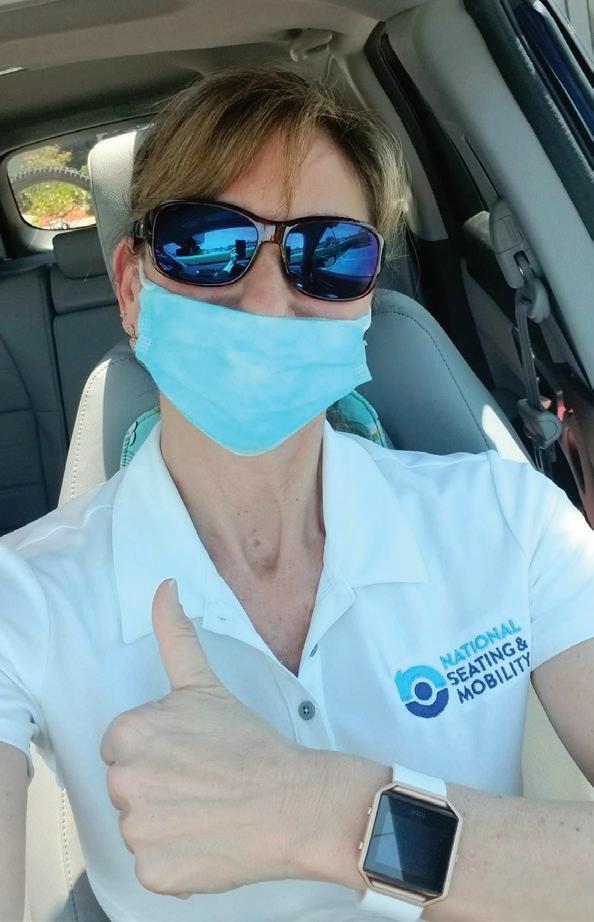
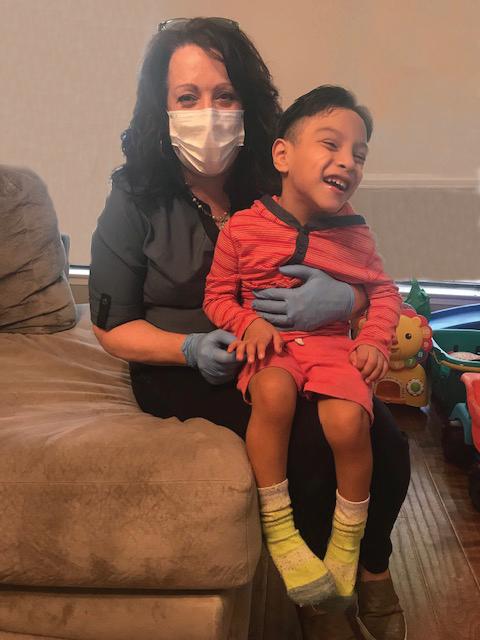
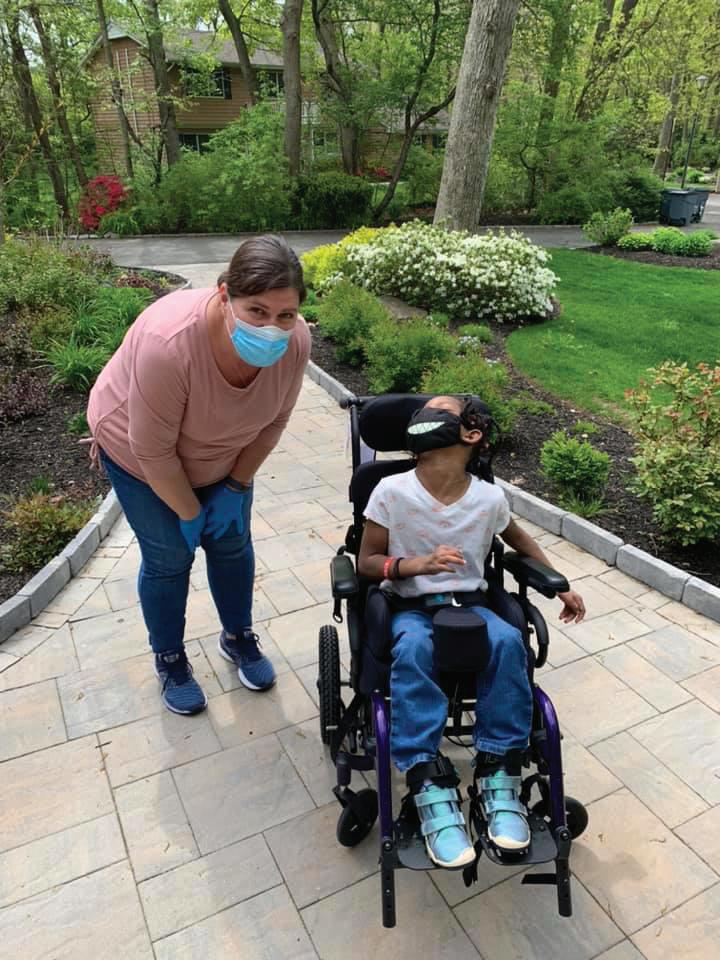
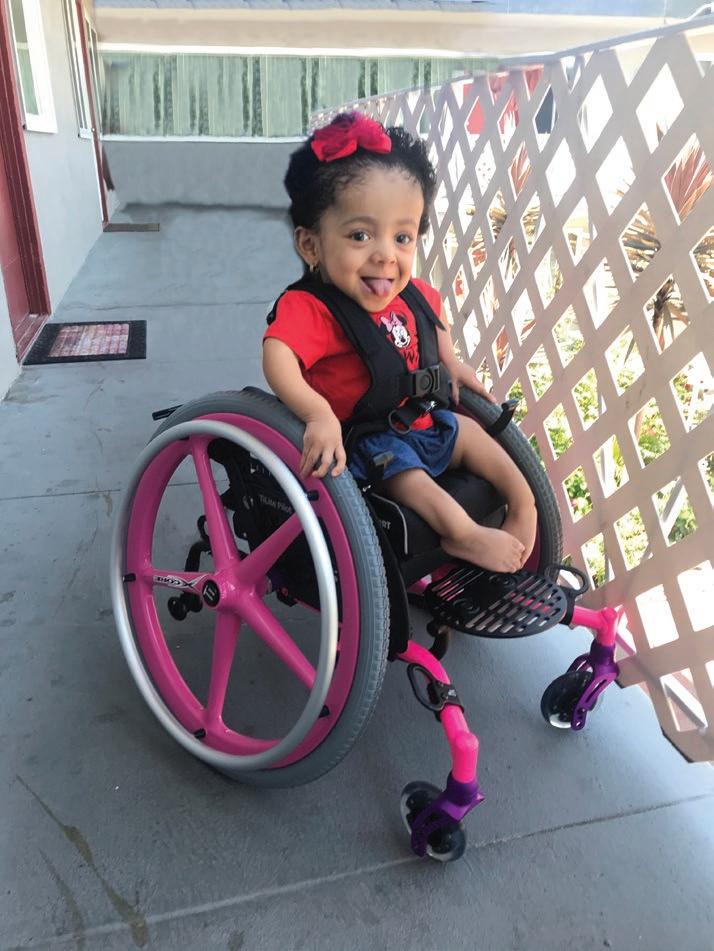
Written by: LINDA NORTON, M.SC.CH, PH.D., OT REG.(ONT)
Canadians have recognized the value of registration through NRRTS. Since NRRTS registration was promoted in Canada late last year, Canadian Rehabilitation Technology Suppliers have been eager to apply. As of the time of writing, there are 239 Canadian Registered Rehabilitation Technology Suppliers. This means Canadians make up approximately 25% of all NRRTS Registrants!
We have learned how much we have in common with other NRRTS Registrants, regardless of where they live. We have also accessed webinars, articles and attended education events that have grown our knowledge base.
As Canadians, we have recognized the value of ensuring people who provide Complex Rehab Technology(CRT) have the relevant education and experience to ensure the CRT provided meets the clients’ needs. It also means that we adhere to a common set of ethical standards. NRRTS and the Canadian Advisory Committee have been busy promoting this value of working with NRRTS Registrants to our therapist partners as well as our funding agencies.
We have also established this column – DIRECTIONS Canada. This is where we’d like your participation. We are looking for Canadian
Registrants and Canadian Friends of NRRTS to share their stories and perspectives. So far you have seen Jason Kelln, ATP, CRTS®, contribute to an article (https://issuu.com/nrrts/docs/210281_nrrts_directions_ issue_1_complete_lr/s/11714474) about government recycling programs in Canada. You’ve seen Darrell Mullen, RRTS®, write an article (https://issuu.com/ nrrts/docs/directions_2021v2_web/s/11993964) on the challenges we have in Canada with our vast geography, and low population density. You’ve also seen Randy Keith, RRTS®, write an article (https://issuu.com/nrrts/ docs/directions_2021v3_full/s/12361557) on the differences in industry terminology between Canada and the U.S.
Perhaps you have a story to tell about a client situation, or a collaboration with a funding agency. Maybe you have developed a unique solution you want to share, or an approach to managing your workload that might help others. Whatever your idea, writing a short article for Canadian Directions is a great way to share and collaborate. Previous writing experience is not a prerequisite, we will assist you.
Please reach out to Amy Odom at aodom@nrrts.org for assistance.
We look forward to hearing from you and seeing you share your perspectives.
Linda may be reached at LINDA.NORTON@MOTIONCARES.CA
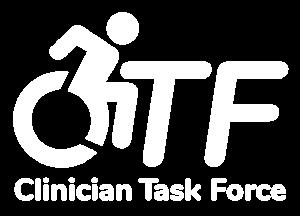
Linda Norton, M.Sc.CH, Ph.D., OT Reg.(ONT), is the manager of learning and development for Motion, leading mobility and accessibility solutions provider serving clients of all ages in Ontario, Alberta, British Columbia and Saskatchewan. Additionally, she is on faculty at the International Interprofessional Wound Care Course and Western University’s Advanced Health Care Practice–Wound Healing program. She also serves on the board for NRRTS Canada and the Canadian Pressure Injury Advisory Panel, an interprofessional representation of sectors of the health care community to address the issue of pressure injuries in the Canadian population.

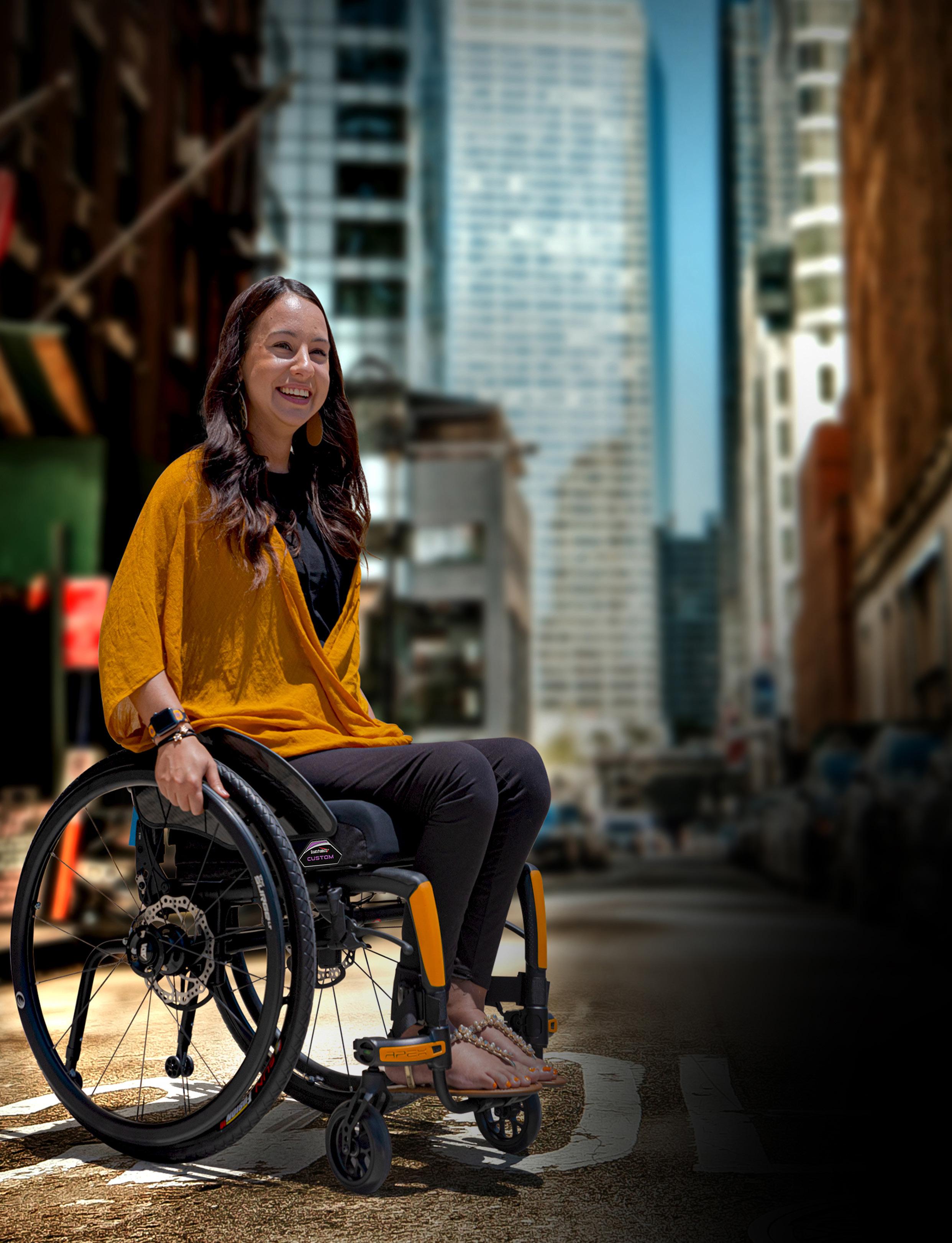
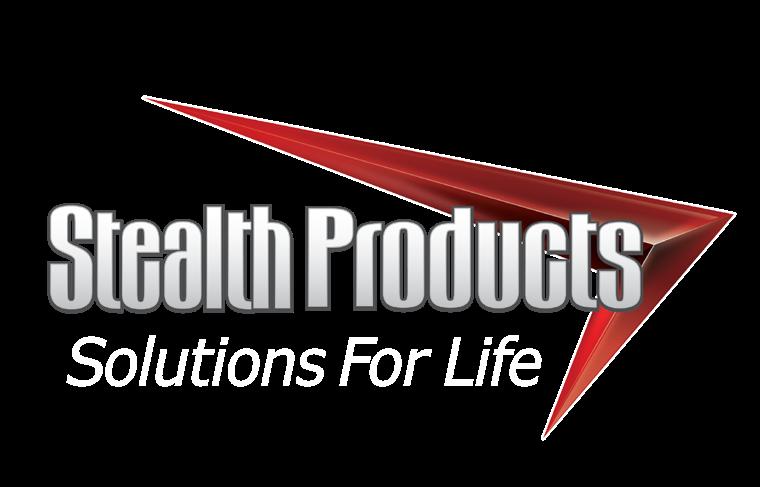
Congratulations to the newest NRRTS Registrants. NAMES INCLUDED ARE FROM MAY 8 THROUGH JULY 12, 2021
Aaron Mckenzie, RRTS® Motion
202 Sparks Ave Toronto, Ontario M2H2S4 Telephone: 416-706-2768 Registration Date: 05/18/2021
Aaron Miller, RRTS®
National Seating & Mobility, Inc. 7050 N Guion Rd, Ste A Indianapolis, IN 46268 Telephone: 317-454-7670 Registration Date: 05/24/2021
Aaron Harvey, RRTS® Family 1st Medical 8995 Commercial St New Minas, Nova Scotia B4N3E3 Telephone: 902-681-0202
Registration Date: 07/08/2021
Alison Meloche, RRTS®
Canada Care Medical Inc. 1644 Bank St Ottawa, Ontario K1V7Y6 Telephone: 613-234-1222 Registration Date: 05/17/2021
Andrea Callon, RRTS® Motion
3100 35th St, Ste 3 Vernon, British Columbia V1T9H4 Telephone: 250-390-2774 Registration Date: 06/29/2021
Brad Stephanson, RRTS® NSM-Canada 101-8620 Glenlyon Pkwy Burnaby, British Columbia V5J0B6 Telephone: 604-293-0002 Registration Date: 05/27/2021
Bradley Coughlin, RRTS® Lawtons Home Healthcare 800 Mountain Rd.
Moncton, New Brunswick E1C2R4
Telephone: 506-855-1874
Registration Date: 06/08/2021
Charles Fielder, RRTS®
National Seating & Mobility, Inc. 1650 S Sinclair St Anaheim, CA 92806-5927
Telephone: 714-939-9322
Registration Date: 06/03/2021
Colton Nelson, ATP, CRTS® CoxHealth Home Support 2240 West Sunset Ste 100 Springfield, MO 65742
Telephone: 417-830-6371
Registration Date: 05/17/2021
Cory Garfield, RRTS®
Pg Surg Med (an NSM company) 1749 Lyon St
Prince George, British Columbia V2N1T3 Telephone: 250-564-2240
Registration Date: 07/06/2021
Crystal Lee, ATP/SMS, CRTS®
National Seating & Mobility, Inc.
1957 Pioneer Rd, Bldg C Suite C Huntington Valley, PA 19006-2505
Telephone: 215-682-9760
Registration Date: 05/18/2021
Cynthia Wickens, RRTS® Xperience Home Health Care
55 Eddinborough St Unit 130 Windsor, Ontario N8X3C3
Telephone: 519-800-0000
Registration Date: 06/07/2021
Dan Tourond, RRTS® Motion
133 Dalton Ave Unit 3 & 4
Kingston, Ontario K7K6C2
Telephone: 613-384-0400
Registration Date: 05/17/2021
Dani El Asmar, RRTS® Handi-House Limited
203 Colonnade Rd S Units 13-14
Ottawa, Ontario K2E7K3
Telephone: 613-728-1115
Registration Date: 06/23/2021
Daniel Cohen, RRTS®
Canada Care Medical Inc. 1644 Bank St Ottawa, Ontario K1V7Y6
Telephone: 613-234-1222
Registration Date: 07/06/2021
David Black, RRTS® Motion
49 King Street W Oshawa, Ontario L1J2J3
Telephone: 289-385-3315
Registration Date: 05/27/2021
David Thompson, RRTS® Home Medical Solutions
6915 32 Ave NW Calgary, Alberta T3B0K6
Telephone: 403-800-3010
Registration Date: 05/11/2021
Elizabeth Wiese, RRTS® Motion
3032 Hawthorne Rd, Ste 200A Ottawa, Ontario K1G3J6
Telephone: 613-292-9768
Registration Date: 06/01/2021
Eric Lalonde, RRTS® Motion
3020 Hawthorne Rd #200A Ottawa, Ontario K1G3J6
Telephone: 613-739-4557
Registration Date: 06/03/2021
Ethan “Jake” McDonald, RRTS® Canada Care Medical Inc. 1644 Bank St Ottawa, Ontario K1V7Y6
Telephone: 613-234-1222
Registration Date: 05/28/2021
Felice “Phil” Ioculano, RRTS® HomEquip 385-550 Century St Winnipeg, Manitoba R3H0Y1
Telephone: 204-949-2300
Registration Date: 05/26/2021
Gary Bourget, RRTS® Motion
747 Notre Dame Ave Sudbury, Ontario P3A2T2
Telephone: 705-522-0025
Registration Date: 05/27/2021
James Arsenault, RRTS® Motion
133 Dalton Ave Unit 3 & 4 Kingston, Ontario K7K6C2
Telephone: 613-384-0400
Registration Date: 05/17/2021
James Taylor, RRTS® HomEquip 385-550 Century St Winnipeg, Manitoba R3H0Y1
Telephone: 204-949-2300
Registration Date: 06/14/2021
Jarrett Chalmers, RRTS® Motion
3020 Hawthorne Rd #200A Ottawa, Ontario K1V7Y6
Telephone: 613-739-4557
Registration Date: 05/17/2021
Jean-Francois Cormier, RRTS® Tango Medical 335 Elmwood Dr Moncton, New Brunswick E1A8R5
Telephone: 506-855-8842
Registration Date: 06/29/2021
Jeremy Booker, RRTS® Durham Medical 242 King St E Oshawa, Ontario L1H1C7
Telephone: 905-728-1112
Registration Date: 05/28/2021
Job Huckaby, ATP, RRTS® Doc Supply - Rehab 39 Three Way Ln Humboldt, TN 38343-8561
Telephone: 901-489-6641
Registration Date: 07/08/2021
Joseph Amaro, RRTS® Bexar Care Home Medical 7410 John Smith Dr Ste 108 San Antonio, TX 78229-6069
Telephone: 210-614-3804
Registration Date: 06/23/2021
Joshua Forester, RRTS® Pg Surg Med (an NSM company) 1749 Lyon St Prince George, British Columbia V2N1T3 Telephone: 250-564-2240
Registration Date: 05/17/2021
Katie Allesia, RRTS® HME Mobility & Accessibility 4011 Viking Way #130 Richmond, British Columbia V6V2K9 Telephone: 604-821-0075
Registration Date: 07/01/2021
Kevin Wilson, RRTS® Motion 1362 Victoria St Kitchener, Ontario N2B3E2 Telephone: 519-885-3160
Registration Date: 06/14/2021
Larry Turnbull, RRTS® Lawtons Home Healthcare 90 Main St Dartmout, Nova Scotia B2X1R5 Telephone: 902-480-3590
Registration Date: 06/02/2021
Lindsey Welch, RRTS® Pg Surg Med (an NSM company) 4206 25th Ave Vernon, British Columbia VIT1P4 Telephone: 250-351-4401
Registration Date: 07/06/2021
Marie Mete, RRTS® Motion
1-111 Fourth Ave
St Catharines, Ontario L2S3P4
Telephone: 905-688-0420
Registration Date: 07/06/2021
Mark Brazeau, RRTS® Motion
1501 Seymour St, Unit C North Bay, Ontario P1A0C5
Telephone: 705-476-6449
Registration Date: 05/17/2021
Mark Chamberland, RRTS® Med+ Medical Equipment
Distribution 285 Midwest Rd Toronto, Ontario M1P3A6
Telephone: 647-409-5619
Registration Date: 06/16/2021
Meghan Proctor, RRTS® Island Mediquip 2258 Dorman Rd Unit B-2258 Nanaimo, British Columbia V9S5G2
Telephone: 250-824-0390
Registration Date: 06/18/2021
Michelle Harvey, RRTS® HME Mobility & Accessibility 4011 Viking Way #130
Richmond, British Columbia V6V2K9 Telephone: 778-980-2427
Registration Date: 07/08/2021
Munish Prashar, RRTS®
Calgary Coop Home Health Care
9309 Macleod Trail SW Calgary, Alberta T2J0P6
Telephone: 403-472-4875
Registration Date: 06/16/2021
Myles Fillmore, RRTS® Embracor Medical
121 Ilsley Ave, Unit 101-102
Dartmouth, Nova Scotia B3B1S4
Telephone: 902-240-5983
Registration Date: 06/09/2021
Paul Parent, RRTS® Handi-House Limited
203 Colonnade Rd S Units 13-14
Ottawa, Ontario K2E7K3
Telephone: 613-728-1115
Registration Date: 07/06/2021
Peter Lorentz, RRTS®
Canada Care Medical Inc.
1644 Bank St
Ottawa, Ontario K1V7Y6
Telephone: 613-234-1222
Registration Date: 06/14/2021
Rick Church, RRTS® Motion
1501 Seymour St, Unit C North Bay, Ontario P1A0C5
Telephone: 705-476-6449
Registration Date: 05/12/2021
Robert McLean, ATP, CRTS® Numotion
1839 S Monroe St
Tallahassee, FL 32301-5527
Telephone: 850-933-6382
Registration Date: 05/18/2021
Robert Lamarche, RRTS® Motion
747 Notre Dame Ave Sudbury, Ontario P3A2T2
Telephone: 705-919-6616
Registration Date: 05/17/2021
Russell Pratt, RRTS® Pg Surg Med (an NSM company) 1749 Lyon St
Prince George, British Columbia V2N1T3
Telephone: 250-564-2240
Registration Date: 07/06/2021
Sarah Moeller, RRTS®
New Visions Medical Equipment, Inc. 4108 SR 118 Coldwater, OH 45828
Telephone: 419-678-4979
Registration Date: 05/20/2021
Stephen Longo, RRTS® Motion
149 King St W Oshawa, Ontario L1J2J3
Telephone: 905-576-2174
Registration Date: 05/27/2021
Susan Kupusa-Beisty, RRTS® Essential Mobility Products 4-40 Centennial Pkwy North Hamilton, Ontario L8E1H6 Telephone: 905-549-4800
Registration Date: 05/13/2021
Thomas Connelly, RRTS® Embracor Medical 1142 Smythe St Fredericton, New Brunswick E3B3H5 Telephone: 506-443-8056
Registration Date: 06/17/2021
Troy Swan, RRTS® Lawtons Home Healthcare 90 Main St Dartmouth, Nova Scotia B2X1R5 Telephone: (902) 480-3590
Registration Date: 07/07/2021
William Leoutsacos, RRTS® Med+ Medical Equipment Distribution 285 Midwest Rd Toronto, Ontario L4Y3T6 Telephone: 416-477-5960
Registration Date: 07/06/2021
Yvonne Powell, RRTS® Brant Arts Mobility 672 Brant St Burlington, Ontario L7R2H3 Telephone: 888-678-3144 Registration Date: 07/06/2021
Congratulations to NRRTS Registrants recently awarded the CRTS® credential. A CRTS® receives a lapel pin signifying CRTS® or Certified Rehabilitation Technology Supplier® status and guidelines about the correct use of the credential. NAMES LISTED ARE FROM MAY 8 THROUGH JULY 12, 2021
Colton Nelson, ATP, CRTS® CoxHealth Home Support Springfield, MO
Crystal Lee, ATP/SMS, CRTS® National Seating & Mobility, Inc. Huntington Valley, PA
Robert McLean, ATP, CRTS® Numotion Tallahassee, FL
Shean Wages, ATP, CRTS® National Seating & Mobility, Inc. Doraville, GA
The following individuals renewed their registry with NRRTS between May 8 through July 12, 2021.
PLEASE NOTE IF YOU RENEWED AFTER JULY 12, 2021, YOUR NAME WILL APPEAR IN A FUTURE ISSUE OF DIRECTIONS. IF YOU RENEWED PRIOR TO MAY 8, YOUR NAME IS IN A PREVIOUS ISSUE OF DIRECTIONS.
FOR AN UP-TO-DATE VERIFICATION ON REGISTRANTS, PLEASE VISIT WWW.NRRTS.ORG, WHICH IS UPDATED DAILY.
Amy Johnson, ATP, CRTS®
Angela Naranjo, ATP, CRTS®
Anthony B. Nunez, RRTS®
Bennie G. Jones, ATP, CRTS®
Bernard Opp, RRTS®
Bill McGuinniss, ATP, CRTS®
Brennan Arbogast, ATP, CRTS®
Brent Manning, ATP, CRTS®
Brett A. Watson, ATP, CRTS®
Carl A. Mulberry, ATP/SMS, CRTS®
Carlos Lorenzo, RRTS®
Cary Marsh, ATP, CRTS®
Chad Jones, ATP, CRTS®
Charles Santiago, ATP, RRTS®
Charles Mitchell, RRTS®
Charles P. Barrett, III., ATP, CRTS®
Chris Rogers, ATP, CRTS®
Connie Divine, ATP, CRTS®
Daniel Harrison, RRTS®
Daniel Glazer, ATP, RRTS®
Danny Ward, ATP, CRTS®
David St. Louis, ATP, CRTS®
David Anderson, ATP, CRTS®
David Mancini, ATP, CRTS®
David T. Murray, ATP, CRTS®
Dawn Ruth-Larson, ATP, CRTS®
Deborah J. Lazure, ATP, CRTS®
Desmond Wiles, ATP/SMS, CRTS®
Donald Wrye, RRTS®
Douglas Mitchell Livermore, ATP, CRTS®
Dustin Swartz, ATP, CRTS®
Edmund Case Horton, MS, ATP, CRTS®
Edward Bonk, PT, ATP/SMS, CRTS®
Eric Gilbert, RRTS®
Eric Sale, ATP, CRTS®
Fernando Castillo, ATP, RRTS®
Gabriel DeNigris, ATP, CRTS®
Greg Newth, ATP, CRTS®
James Douglas, ATP, CRTS®
James A. Golick, ATP, CRTS®
James B. Albring, ATP, CRTS®
James C. Christy, ATP, CRTS®
James S. Jones, ATP, CRTS®
Jasmine Libarian, ATP, CRTS®
Jason Melms, ATP, CRTS®
Jay Lujan, ATP, CRTS®
Jeanne Hegg, ATP, CRTS®
Jeff Bour, BA, ATP, CRTS®
Jeff Hager, ATP/SMS, CRTS®
Jeffrey Decker, ATP/SMS, CRTS®
Jeffrey B. Swift, ATP, CRTS®
Jeremy Kilgore, RRTS®
John Fullmer, Jr., ATP, CRTS®
John Zona, ATP, CRTS®
John R. Campbell, ATP, CRTS®
Jonathan Jesme, ATP, RRTS®
Joseph B. Bodiford, ATP, CRTS®
Joshua Hamilton, RRTS®
Judy Taylor, ATP, CRTS®
Kim B. Borck, ATP, CRTS®
Kimberly F Cooper, ATP, CRTS®
Kort St. John, BS, ATP, CRTS®
Laura Frey, ATP, CRTS®
LeeAnn Cormany, ATP, CRTS®
Lino Castro, RRTS®
Marc Suddarth, RRTS®
Marc Martinez, RRTS®
Marcus Page III, PTA, ATP, CRTS®
Mark Swanson, ATP, CRTS®
Mark A Tucker, ATP, CRTS®
Marshall Callaway, ATP, CRTS®
Mary Hitt Young, ATP, CRTS®
Matt Topf, ATP, CRTS®
Matthew Tarrant, ATP, CRTS®
Michael Bobala, ATP, CRTS®
Michael Thompson, ATP, CRTS®
Nicolas Diaz, RRTS®
Patrick Frey, ATP, CRTS®
Ramey House, ATP, CRTS®
Ray Cazalet, ATP, CRTS®
Richard Petersen, ATP, CRTS®
Richard Cooper, RRTS®
Richard E. Olson, Jr., ATP, CRTS®
Rick J. Capps, ATP, CRTS®
Robert Ford, ATP, CRTS®
Robert Harry, ATP/SMS, CRTS®
Robert Cooper, ATP, CRTS®
Robert J. Williams, ATP, CRTS®
Robert Rex Johnson, ATP, CRTS®
Ronald Mack, ATP, CRTS®
Ronald J. Seely, ATP, CRTS®
Ronald Keith Hayes, ATP, CRTS®
Scott Leikala, ATP, CRTS®
Scott C. McGowan, ATP, CRTS®
Steven Shipley, ATP, CRTS®
Steven E. Williams, ATP, CRTS®
Teresa Glass-Owens, ATP, CRTS®
Terry L. Bergman, ATP, CRTS®
Thomas Ouimette, ATP, CRTS®
Tim Robinson, ATP/SMS, CRTS®
Toby Bergantino, ATP, CRTS®
Vincent Handrick, ATP, CRTS®
William Johnson, RRTS®
William Fournier, ATP/SMS, CRTS®
Zane Jacobs, ATP, CRTS®
BE SURE TO FOLLOW NRRTS ON SOCIAL MEDIA!

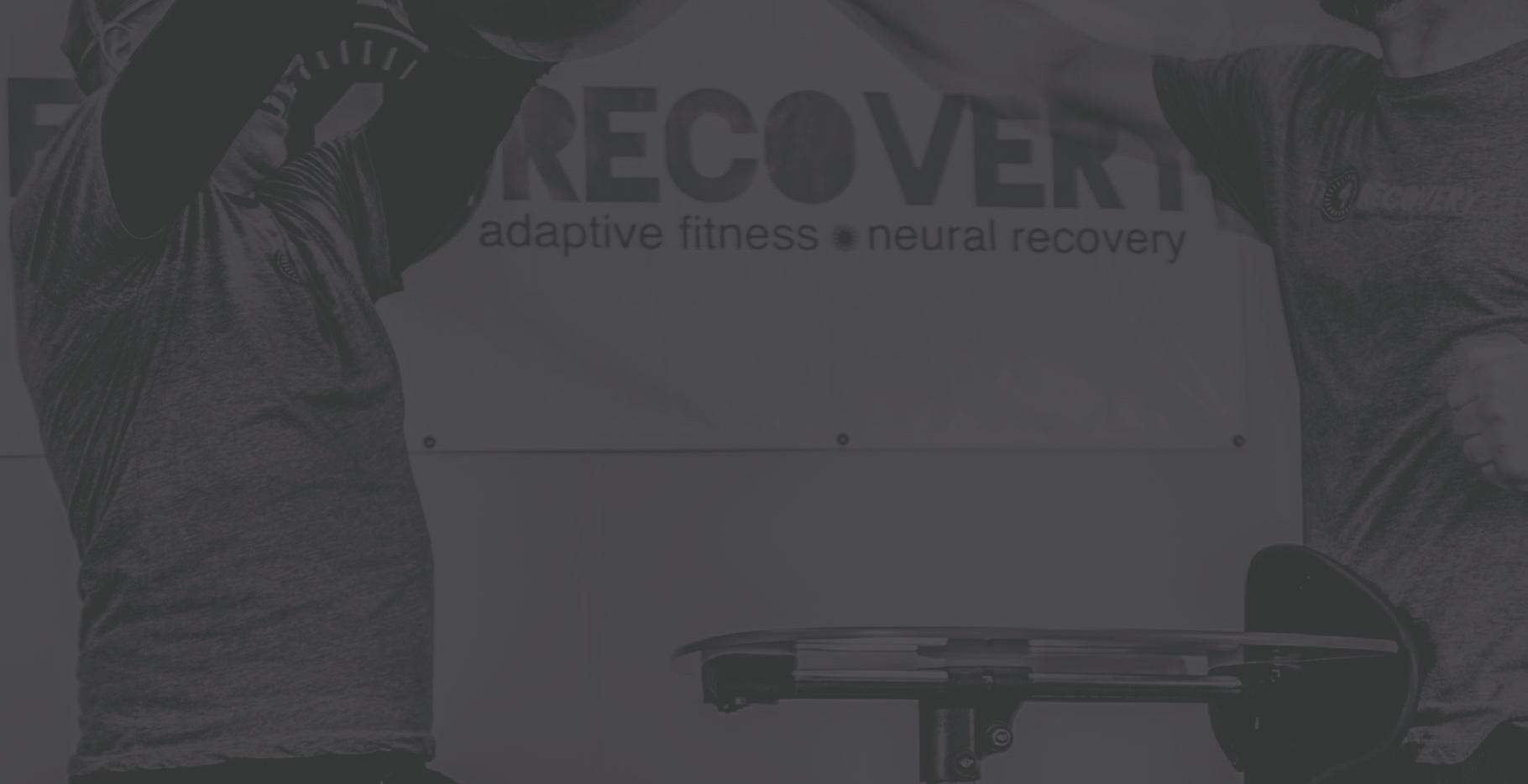

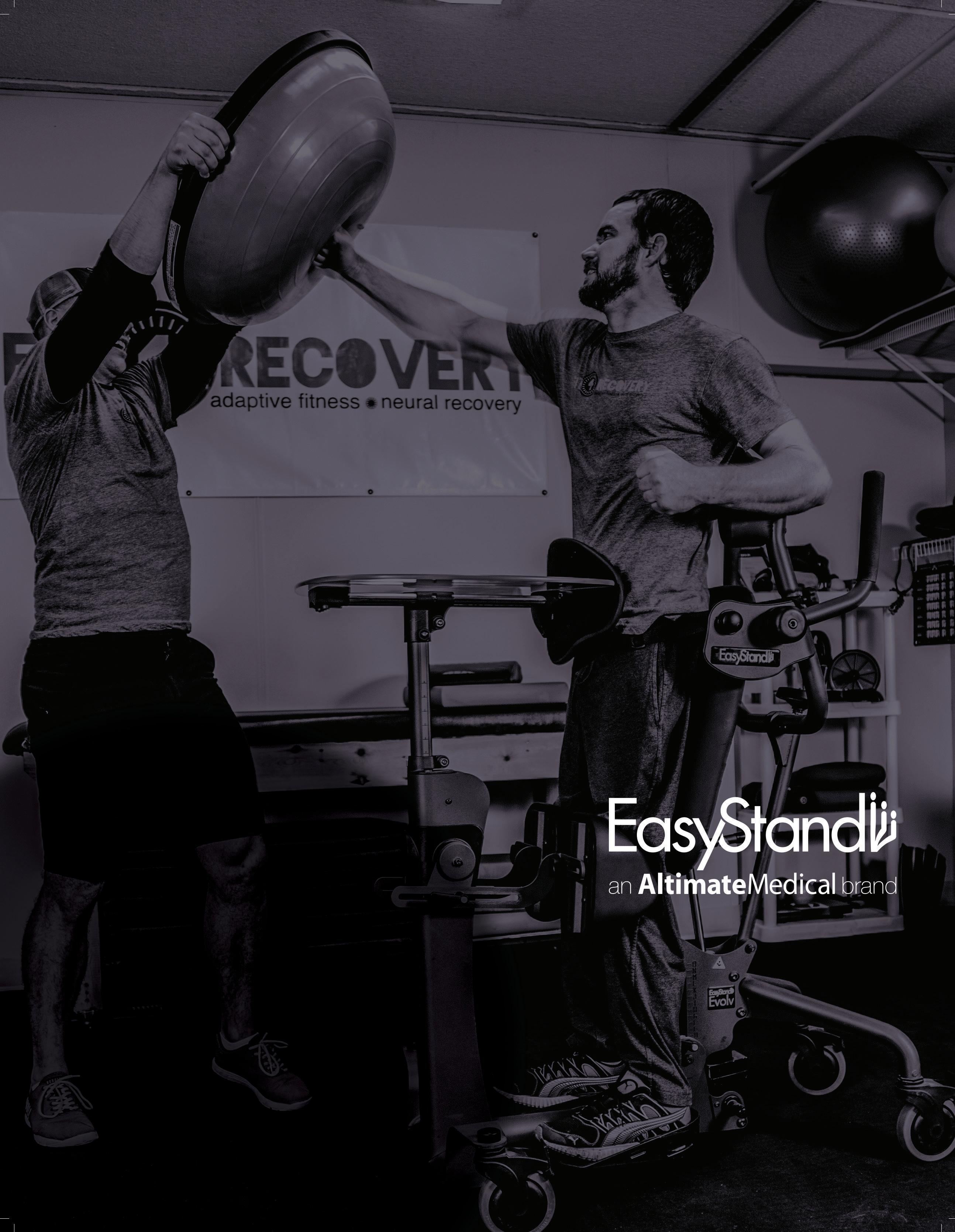










5815 82nd Street, Suite 145, Box 317
Lubbock, TX 79424
P > 800.976.7787
As Corporate Friends of NRRTS, these companies recognize the value of working with NRRTS Registrants and support NRRTS’ Mission Statement, Code of Ethics and Standards of Practice.
